Sprints in India to begin 2018
The end of 2017 and the beginning of 2018 took place in Hyderabad, India. I was coaching in the city and a video was taken of one of my workouts at the hotel. Every other day, I was concentrating on my sprint form up the incline on the hotel grounds.
Looking forward to the racing this summer!
Maui Jim Reflection
Hope you have enjoyed the week of seeing Sarasota reflected off the lenses of Maui Jim. Today is the final reflection on the beach of Siesta Key where we will be working on our “give and go” speed tomorow.
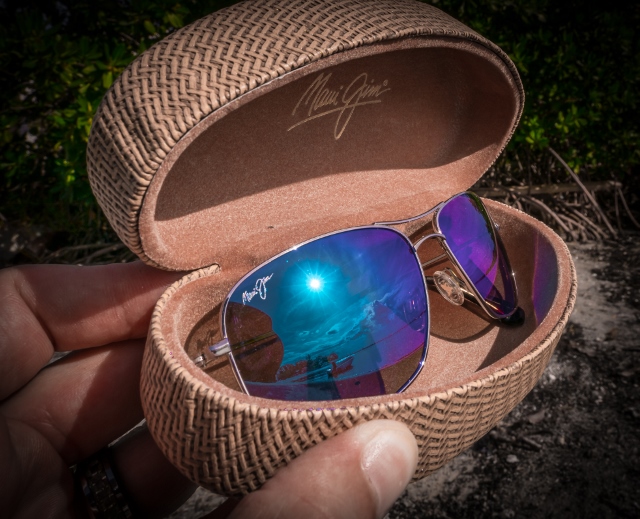
Maui Jim at Siesta Key
I do a lot of my fitness training on Siesta Key beach. I think it is one of the special places in this country if not the world. Siesta Key is gifted with white “sand” that does not get hot on a summer day. The “sand” is actually a quartz sediment (no one knows why this beach is the only one with a quartz deposit) that does retain heat. So when you are working out in the sand, sprinting, or playing volleyball, your feet will stay cool.
Here is reflection of the beach life:
Maui Jim Reflection of the “Unconditional Surrender” Statue
A local landmark in the Sarasota harbor is a replica of an iconic photo taken of a sailor and nurse kissing in Times Square at the conclusion of WW2. It is 27 feet high and weighs 15,000 pounds.
Today’s and tomorrow’s photos are a reflection of the statue:
A Week of Maui Jim Reflections
We have taken Maui Jim sunglasses around the world the last six months. Now it is time to share some of our beautiful views here at home in Sarasota. This week we will post one reflective photo each day. Looking at the lenses of Mau Jim, you will see some of the sites in downtown Sarasota and at Siesta Key, the #1 beach in the USA.
The first reflection photo starts in the bushes at Siesta Key: #mauireflect
Enjoy the week of Maui Jim reflections!
Maui Jim Sunglasses: From India to Nigeria
You know you are getting older when you are coaching your student’s children. That is where I am in life as I am coaching the daughter of one of my former Indian students. June and July was spent training some of India’s brightest tennis prospects.
I lived in Chennai in the late 80s and early 90s. During my final year, I had the pleasure of coaching Vasudev Reddy. He went onto play Davis Cup for India and establish a thriving tennis academy in Hyderabad. His daughter, Vineetha, has a great future in tennis. Vasu wears his Maui Jims everyday on the court protecting his eyes from the harmful rays and optimizing his clarity of the ball.
After trips to Boston, Portland, London, Paris, and Madrid, we finished the summer with training and meetings in Abuja, Nigeria. My wife’s cousin, Manji, was an excellent host and guide, but also a Maui Jim (#MauiJim) fan as can be seen in front of the fabulous Aso Rock.
We had the opportunity to meet with Maria Wophill of The Athletics Federation of Nigeria about Body Protection coming to Nigeria again in 2018.
We then flew from Abuja to Paris to find out that Miami airport was closed due to hurricane Irma. When we reached Paris, we had a text from a family friend in Charlotte inviting us to stay with them if we were evacuating Florida. Little did they know that we were in Paris. We changed our flight to Charlotte and were so blessed to stay in there for four nights while Irma veered a little east when approaching Sarasota. We were so fortunate.
After going around the world three times this summer, it is time to train for a few months in Florida. Maui Jim will still be with us every step of the way guarding our eyes and enhancing our sports performance.
What Is The Best Treadmill For You in 2017?
I recently heard from Ilona from Reviews.com about their interesting testing of the various models in the packed treadmill market. While I enjoy the Florida heat and have access to run outside whenever I wish, I thought our readership who cannot always run outside or want to change their routine would really benefit from the Reviews.com research and testing.
Ilona shared what her team at Reviews.com recently put together for runners. For people looking to maximize their training without having to rely on favorable weather conditions, a treadmill can be a great solution. However, a treadmill is a hefty investment and finding the right one is not a one-size-fits-all process.
That’s why the Reviews.com research team recently spent six weeks testing and evaluating 65 treadmills currently on the market. With the help of exercise physiologists and fitness experts, they examined models for versatility, portability, and usability. Once they narrowed down their list, they personally tested the finalists to come up with their top three picks: best overall, most immersive experience, and best for race preparation.
You can see the Reviews.com research and their choices at:
https://www.reviews.com/treadmills/
And let us know what you think.
Pedal Board: The New Workout on the Water
This past Sunday was a beautiful day in Sarasota, Florida. We had the opportunity to enjoy this warm early December afternoon on the waters of Siesta Key with Al Hurxthal of Economy Tackle demonstrating the new Hobie Mirage Eclipse Pedal Board.
I have spent afternoons paddle boarding and even conducted company brainstorming meetings while on paddle boards, but I was stunned at the new technology in the Hobie Mirage Eclipse. We have had some paddle board participants have difficulty with basic balance and even more problems when wave activity increases. Not so with the Eclipse, the stability is amazing even when a boat drives by your boards.
We had the two board lengths: 12 feet or 10.5 feet. The 12 foot board is much more stable than the 10.5 and is the recommended pedal board. I guess the only reason to go with the 10.5 ft. board is the slightly less weight (approximately 5 pounds). This stand up board has minimal set up. Just pop in the handle bars (“T” form) and rudders and you are good to go on the water.
The “T” handle bars also increase your stability on the board making it easy to hold on even in rough waters. The handle bars look like they have brake levers on the side (like a bicycle), but they are NOT brakes, but are control and directional tools for the rudders in the water. If you want to turn left, then squeeze the left lever. If you wan to turn right, just squeeze the right lever. It is that simple.
The Hobie Mirage Eclipse rudder technology tears up the waters as you move swiftly through waves and wind. The pedals are like your aerobic pedal stepper in the gym. Al showed us the different positions of our feet on the pedals for changing speeds. It was like having different gears with increasing range of motion. Start with your toes on the front of the pedals for the smallest range and minimal movement. Then start to move your position of your feet backward on the pedal until you reach the largest range of motion and speed as your heels hang off the end of the pedals allowing you to fully thrust into every pedal. It makes for a great aerobic workout.
A very cool feature of the Eclipse is the ability to kick up the fins (as they lie flat) by holding one pedal down. This avoids damage to the fins in very shallow waters (or beached) conditions and removes the fear of damaging the blades. A long paddle is even attached to the board if you want or need to use a paddle.
I think once you start to use the Hobie Mirage Eclipse Pedal Board technology, you will not go back to the standard paddle board technology. It was an absolute treat to pedal around the Siesta Key waters so quickly. Try the technology for yourself the next time you hit the ocean. Feel free to give Al a call at Economy Tackle if you have any questions or want more information at (941) 922-9671. Have fun with this new water workout!
Video of Hobie Mirage Eclipse:
Maui Jim Around Europe
Just arrived back on US soil and still a bit jet lagged after our long flight from Athens. We had an incredible trip with stops in Zurich to the Greek Islands of Rhodes, Patmos, Kalymnos, and Symi. As a Maui Jim Ambassador, our Body Protection workouts through the hilly roads or beaches of the Greek Islands were all seen through the incredible clarity and color of the Maui Rose lenses.
Here is a few photos from our trips showing how the details of our travels are more crisp and more defined through the lenses of Maui Jim:
In Zurich:
From a boat in Symi:
Resting on the ship after our workouts, Maui Jim hanging out on the tabletop on our way to Rhodes:
Why Do So Many Runners Get Injured?
This question has plagued athletes for years. We have changed training techniques, running styles, and shoe structures, but still 30-75% of runners are hurt on a yearly basis as stated in an article by Alvin Powell, staff writer for the Harvard Gazette. In Powell’s article, he cites the new study done by Harvard Medical School which has found that the more softly you land with each step the better to avoid injury. https://news.harvard.edu/gazette/story/2016/02/where-runners-go-wrong/?utm_source=SilverpopMailing&utm_medium=email&utm_campaign=02.24.2016%20%281%29%20B
I am still amazed at the amount of heel-strikers in the sport of long distance running. In my coaching, the heel-striker will sooner or later come down with a repetitive injury. When a heel-striker makes impact with the ground, their leg is straight which can lead to pain all way up to the lower back. Not only do forefoot-strikers have a natural pad to land on when striking the ground, but the ankle and knee joints allow proper shock absorption to avoid a repetitive injury. At the same time, I have many people who want to run on the forefoot, but are unwilling to spend the time to protect their bodies with the workouts to build up their lower extremities i.e. gastrocnemius, Achilles tendon, feet, etc. The photo of my leg below walking over a hurdle took a lot of work to build up to avoid a repetitive injury.
I have clients that range from milers to marathoners, but everyone who comes to see me wants to run faster, without injury, and for a long time. This high aspiration takes awareness of their running technique, strength program, flexibility program, training/running program, recovery, nutrition, mental state, and race strategies. I wish I could say that you can just lace up your shoes and run five times a week for 5 years and not have an injury. People think running is such a “natural” movement, but the more I see people run, the more I think people need help.
Performance Driven Athletic Socks
I am one of the first athletes, starting back in 2008, to begin wearing, testing, and promoting the value of graduated compression socks for any athletic activity. Increased blood flow and injury prevention are very important for me as an older athlete. Increased blood flow means more oxygen and nutrients and less lactic acid build up. Injury prevention means greater protection to the muscles, ligaments, and tendons by reducing the vibration with increased support. My sock of choice is the Sigvaris Performance socks (www.sigvaris.com) that are real graduated compression (many companies claim their socks are but fail in our testing) and go from the tip of your toes to above the calf.
This above photo is from the store Sanbeck AG, Winterthur, Switzerland (https://www.sanbeck.ch/) is part of Sigvaris’ European promotions displaying their Performance line of socks. Sigvaris takes their extensive medical background and brings it to the athletic arena. I believe that Sigvaris is the best Performance sock on the worldwide market. I am wearing them in every one of my athletic events from running to tennis. Sometimes I forget how the graduated compression socks help my legs feel so good. All I need to do is to wear an ordinary polyester sock on a run and I really feel the difference in performance and recovery.
I used Sigvaris Performance socks in every race this summer in Greece. I am not a big advocate of the sport sleeves that are seen at many sporting events. The sleeves might be practical and easy as you can still wear your ankle height socks and wear the sleeve above them, but the science to me does not make sense. If you can imagine the graduated compression sock like a tube of toothpaste pushing the paste upwards. Even though the compression is greater at the ankle and decreases as you go up the calf, why would you not want to include the foot? I want the blood in the foot to be part of the process. I feel the difference in the effectiveness between the sock and the sleeve. I wear the performance graduated compression sock before my event for blood flow on the way to the competition, at every event for performance, post event for recovery, and in my travels as my lower extremities can swell especially on flights.
Give the Sigvaris Performance Socks a try to see if they make a difference in your next race.
3 Steps To Run A Faster Mile In Your 50s
Many people have been inquiring since I completed my 2015 www.OneMileRunner.com event, The Greek Islands Adventure, on how I was able to break 5 minutes, in 5 one-mile races, over 12 days. I promised that I would share what changes I made to my training in the months preceding the event and what changes I made during my race schedule.
So here are the 3 steps to a run a faster mile in your 50s…
- I still did three speed workouts a week in the months leading up to my event, but the arrangement was different. I knew for my event I had to be able to run fast on very little rest. In the past for example, I would run 8 repetitions of a 1/4 mile at race pace in one workout and I would sometimes leave beat up and in need of a greater rest period. This year I cut the repetitions in half. I did speed repeats at race pace every Tuesday and Thursday, but only 4 repetitions. I left each workout still feeling fresh. I found my speed, established it in the workout, and then left. All my speed workouts were on the road, never on the track. One thing my chiropractor and I discovered a few years ago is that my hips stay in better alignment running in a straight line. No longer do I run fast while cornering – what a difference! Pounding the corners creates an imbalance with one side of my body contracting while the other side lengthening. After years of running my intervals on the oval track, I now only do my speed on a measured straight line 100s, 200s, 400s, and 800s. NASCAR automobiles are made for their left turns, our bodies our not especially as we get older.
- All my long distance base training was done on a soft surface. I took advantage of our Florida beaches, dirt trails, and a the new crushed shell trail loop at Benderson Park. I never ran slowly on the road (as I have done in the past). This really helped in not beating up my legs. As we age, our joints can no longer take the pounding of a hard surface. When I see people running slowly on the sidewalk, I know it will not be for long as it is about 10 times harder than the roads. Injuries will soon be a result of those repetitive workouts.
- Back in 2008 when I had to break 5 minutes in 20 different road mile races in 20 weeks, I still did a hard track workout every Wednesday afternoon in whatever city I was in for the race. I look back and remember my mind set that unless I raced every Saturday and did another speed workout on Wednesday that I was not race ready. This year at 52 years of age, it was different. I went into the races having done all my work. During the weeks of my races, all I did was travel, warm-up, run easy, and then race as hard as I could. Rinse and repeat – one after the other. No extra speed workouts were done during my race period. Focus was only on my recovery. I felt as good racing this year as I did back in 2012. It is nice to do repetitive races with bouncy legs.
Hope these steps help you wisely prepare for your races and enjoy running as fast as you can even as you age.
I posted an 80-Minute Mile…and I was happy with my time!
My 80-minute mile took place traversing the Mahoosuc Notch in western Maine. Many hikers consider this mile the toughest or slowest mile of the Appalachian Trail and usually take a couple of hours to go through the notch. My brother, Richard, and I followed Ken Alden through the notch. Ken did not hesitate choosing his spots to attack the rock formations in front of him. Richard refers to Mahoosuc Notch as a “jungle gym for adults.” Each hiker must go over, under, or around massive boulders that fell from the surrounding cliffs. This hike was part of our 17-mile day hiking from Old Speck to Goose Eye Mountain (photo on the summit above near the end of our day). What a great workout that took us the entire day. Here is Ken below sneaking through a hole he found at Mahoosuc Notch.
Before tackling Mahoosuc Notch, my Maine hiking expedition began in central part of the state at Gulf Hagas in what is referred to as “The Grand Canyon of Maine.” Richard, Aubrey (my niece), and I hiked a trail that begins with taking our boots off to cross a running river and then goes up and around the rim of the gorge. A beautiful hike with many waterfalls, it was a nice way to break in my new boots. The next two days we hiked about 20 miles of the Hundred-Mile Wilderness trail which is a challenging part of the Appalachian Trail. It was a nice way to send my niece off to college and brought back memories of her completing all the 4,000 footers in New England back when she was just 13. Richard, the consummate guide, took me through four days and 42 miles of hiking some picturesque but difficult Maine terrain.
Maui Jim is sponsoring the Maui Invitational college basketball tournament coming up in November. Because of this, Maui Jim is doing a sweepstakes that includes roundtrip coach airfare, six night hotel accommodation, rental car, a pair of tickets for each tournament day, a $500 VISA gift card and two pairs of Maui Jim sunglasses. Check out this link to enter the sweepstakes: <registrations are now closed>
I am traveling to the US Open tennis and then again overseas. Will be back in September reviewing my races in Greece. Have a great rest of your summer!
Decompressing After Greek Races
After the “2015 Greek Islands Adventure,” we flew to Munich and then took a train to Hinterthal, Austria to visit our Sarasota friends Jim and Nina (who are spending the summer in Austria). Due to their generosity and hospitality, we were able to enjoy such a special time in Austria. We went sledding down a glacier, biking/running/hiking in the Alps, and visited the picturesque city of Salzburg. Here is Jim and Nina below an amazing rainbow…
After Salzburg, we went to a Mozart concert in Vienna, flew to beautiful Prague (my favorite city on our trip), and finished up in Frankfurt. We flew back to Florida this past week for a couple of days of recovery and reloading.
I fly up to New England tomorrow to hike “The Grand Canyon of Maine” with my older brother, Richard, and my niece, Aubrey, who is soon off to college. I have been doing some killer workouts this week in Florida trying to prepare my new hiking boots. The main focus was on doing a few thousand stairs a day on my gym’s stair stepper. New boots on a multi-day hike can be quite treacherous. I hope the boots are sufficiently broken in for the trek.
I will write again in a couple of weeks answering the many questions I have had about my training for the Greek Islands tour. Did I train differently at 52? What was the overview of my weekly workouts? What was added or removed?
Amorgos, Greece – Final Race (#5) of the 2015 Greek Islands Adventure Tour
Today we completed the 2015 Greek Islands Adventure tour in Amorgos, Greece. Amorgos is one of the smaller Cyclades islands and is the easternmost island in this group. Amorgos is home to one of the most amazing monasteries in Greece, Panagia Hozoviotissa. It is a cliff side monastery northeast of Chora. It is breathtaking to see this structure overlooking the blue waters of the Aegean Sea.
Today I finished in 4:42. I cannot tell you how blessed I feel that I could complete this tour at 52 years of age. Every tour has begun with inner doubts and fears, which leads to finding trust, which then forms into a faith that we can accomplish our aspirations. My body held up to the pounding, after racing the mile 5 times in 12 days in 2015. Since 2008, injury-free racing has been our theme. To have the ability and belief that I can put my toe on the starting line and feel I have an opportunity to break 5 minutes again and again. Thanks to my beautiful wife, Sekyen, and the www.OneMileRunner.com team members who help me stay physically healthy and spiritually inspired to break personal goals year after year.
This was my final multiple-race tour. I will participate in a couple of road mile races that I have not attended before in the US and Canada in 2016. We have done an incredible amount of mile racing since 2008. Now after six months of training, we will travel to Austria, Czechoslovakia, and Germany for a little rest before heading back to the States. Thank you all for your support and encouragement during all our races throughout the years.
Naxos, Greece – Race #4 on the 2015 Greek Islands Adventure Tour
As we await to hear what is going to happen with the Greek bailout, banks will remain closed all week and we will know by Sunday if the EU accepts the Greek proposal. Our time on the islands still remains peaceful and “business as usual” as I have even seen my first credit card transactions since we have been here on the island of Naxos.
Naxos is one of the bigger islands in Cyclades with a deep ancient history. We have enjoyed our time here taking in some of the ruins and archaeological digs on the island. This was the first race I ran without a “Meltemi” – the dry, northern wind I spoke about in my last post. We all had our best day this morning as our team ran the event seamlessly. I felt strong and safe on the road and ran a 4:41. Please take a quick look at the short video below highlighting the last quarter-mile of the race. Check out how we had to go around the man on his donkey… a great memory of our Greek runs.
Thanks to people like Petros (below), www.OneMileRunner.com has been able to execute these mile races around the world. Thanks for all your care and expertise Petros.
We now travel to Amorgos on the slow boat tomorrow afternoon. We are planning to race on Sunday morning. That would be 5 races in 12 days. Now it is time to recover for a day and finish well in my last race.
Ios, Greece – Race #3 on the 2015 Greek Islands Adventure Tour
Beautiful Mylopotas beach is one of the best beaches in the Cyclades Islands as it continues to receive “Blue Flag” recognition with its golden sand and super clean waters. We had the opportunity to race in the area and it did not disappoint. This was the first race where I could actually warm-up on and train on beforehand. I think that helped with my visualization as I ran a 4:45 for Race #3. We have been dealing with extremely windy conditions this past week on the Greek islands. We have learned a new word since we have arrived, “Meltemi”, meaning a strong, dry north wind of the Aegean Sea. It has kept temperatures cooler, but the seas have been rough.
http://https://youtu.be/Sdfp2k4mr10
Last night was a huge vote for Greece. As the Greeks overwhelmingly rejected the demands for more austerity in a landslide NO vote 61% to 39%. This was the first Greek referendum in 41 years. It was a huge victory for Prime Minister Tsipras and his party. The banks will still be closed on Tuesday and Wednesday as the Eurozone negotiations begin with a new finance minister for Greece, Euclid Tsakalotos as Yaris Varoutakis stepped down after the voting results. It should be an interesting couple of days of meetings now with the European leaders.
We travel to Naxos tomorrow. The weather forecast calls for hotter weather without the windy conditions of the meltemi. We will see what this does to not only our boat ride, but also our race conditions next week.
Folegandros, Greece – Race #2 on the 2015 Greek Islands Adventure Tour
So the big Greek citizen referendum is Sunday. Many people have been inquiring about the financial situation here. It is simple. It is all cash. I am traveling in the islands and it is very peaceful, but you must have cash in your pocket. I was planning on paying the hotel portion of the tour with my credit card, but with the capital arrears in place this past week, the local businessmen have no idea when they might get the money from the bank on credit card purchases. So put the credit cards away and take out your Euros – at least until Monday. Then we will find out if the Greek banks open or not after Sunday’s vote. Good thing we brought some extra Euros for our travels.
We had to run race #2 a day earlier due to some local changes. So with only a day rest in between my races, I crossed the finish line in 4:52 a bit fatigued. My first race I was very even as I ran a 2:22 half and then another 2:22. Today was different. I faced an incredible headwind in the first half of the race running a 2:29, then finished with a 2:23. Today reminded me of my speed workouts that I ran every Tuesday and Thursday to prepare for this tour. I broke up the workout into two knowing I would have to find that level of performance with very short rest. I think those workouts helped me run well today in these conditions.
Since we finished the race a day earlier, we had an opportunity to visit some of the island’s best beaches. Beautiful. The water is so clear and so blue it almost looks artificial. The highlight was Katergo, accessible only by boat, as it is considered by some as one of the world’s best beaches.
We are now off to Ios on Saturday July the 4th. Hope everyone back in the States has a great holiday weekend!
Santorini, Greece – 1st stop on the 2015 Greek Islands Adventure
What a time to be in Greece! After a long day of flying from Tampa to Miami, Frankfurt, Vienna, and then Santorini, we made it to Greece on 7/28. The last time we visited Greece was just three years ago. Financial problems and arrears were happening then, but this time it is worse. We have heard amazing stories since we have arrived and it should be an interesting couple of weeks as Greece fights for its financial future.
After the banks and financial markets closed on Monday 6/29. People were saddened, but did not panic. We all waited until late on 6/30 to see if Prime Minister Tsipras was going to arrange a final deal before defaulting on the Greek loan, but it did not happen. Now the focus moves to Sunday as the Greek citizens have the opportunity to vote “yes or no” on a Euro zone referendum. After that vote on Sunday, we will all know if the citizens back their prime minister or not. If a “yes” vote wins, Tsipras will surely step down. If a “no” vote wins, then Tsipras will stay in power. Will the banks open on Monday 7/6? What will happen to the Greek people and their financial future? Stay tuned…
We raced on the morning of July 1st. It was not the same course I ran here in 2012, but similar. I even ran the same time as in 2012, registering a 4:45 in my first race of the 2015 Greek Islands Adventure. We had a little trouble getting the proper safety established on this bustling Greek road, but fortunately we did not have any problems. I felt a good bounce in my legs as this 5-race tour begins. We take a boat tonight to the nearby Cyclades island of Folegandros for race #2 on America’s Independence Day 7/4.
Peak Performance Or Injury?
Athletes walk that tightrope of peak performance on one side and injury on the other. I am two weeks away from Race #1 of the 2015 www.OneMileRunner.com annual event entitled “The Greek Islands Adventure.” I definitely was on that tightrope this week.
After traveling to Maine last weekend for my niece’s high school graduation, we had our usual dress rehearsal prior to each of my mile event tours on Tuesday. The half mile course is nearby my house and is not an easy course to run on with many twists and turns. I have had difficulty in the past years breaking 2:30 on this course. In 2012, I thought my training was right on schedule, but I posted a 2:32 time in our dress rehearsal. I went on to race great solid times in 2012 on “The Isles Mile Challenge.”
I have tweaked a couple of things in my training at 52 years old, but I felt confident that my training has been on schedule leading up to my race season. On Tuesday, I ran 2:28 at about a 90-95% effort, I was shocked and discussed the run with my team. So I decided to go back to the starting line and run it again…how can I run faster than the 2012 dress rehearsal? I ran the course again and posted another 2:28. It freaked me out a bit, but I will share the changes I have made to my training in August when I return from Europe. So that was one side of the tightrope – peak performance. Then came Wednesday…
On Wednesday, I ran an easy 6 miles on the shell trail at Benderson Park. Just after the 5 mile mark, I accidentally stepped on a pine cone and landed on the side of my foot. I yelled at the pain and shock of the errant landing as I have never before missed the bottom of my foot completely. I felt like I “dodged a bullet” as I limped around avoiding serious injury. The next morning my lower left extremity felt worse, so I soaked in the hot tub and took two days off from running. Yesterday I ran 7 miles and did some barefoot sprinting in the Siesta Key white sands. I was back. Repeat 1/4 mile sprints this Sunday morning, followed by a full body weight workout, and then hit the massage table to have my massage therapist, Lori, check my lower leg.
It was a strange week of walking the peak performance/injury tightrope two weeks away from race day. Let’s hope I can avoid other pine cones this week…
3 Steps To A Faster Mile
1) Build Speed From A Shorter Distance To A Longer Distance
I train a bit differently than most runners who are searching for their race form. For each Annual Event since 2008, I do the customary build up that most runners do in the months of preparation = a strong long distance base, intense tempo runs, and smart recovery within the week’s plan of action. However, when I begin my speed work, I start at 100 yards and then build to 1/8 mile, then 1/4 mile, then 1/2 mile. Many runners tell me that they dive right into the 1/4 mile repeats, but I do not want to attempt a 1/4 mile unless my form and speed is definitely there. For example, here is my build up this season: 100 repeats (13-15 seconds), 1/8 mile repeats (30-32 seconds), 1/4 mile which I ran (1:05-1:10) today (Thursday) and Tuesday with only one day off in between workouts this week (similar to my race schedule in Greece), then next week begin the 1/2 mile (2:18-2:24). I feel there is no reason to lengthen my distance if I do not feel the proper speed in the shorter distance. I take my form in the 100 yard workout and stretch it out to the 1/2 mile. Speed first, then lengthen the distance.
2) Mentally Approach Your Workouts Like A Race
Over the years, many people have asked how did I do so well in my first race when I have not raced in 6 months. The answer is that I have been mentally racing over the last few months of my training. Especially in my speed workouts, I put my toe on the line as in a race, prepare the same way as a race, and feel the intensity as in a race. Sprint against others or against the clock – feels like I have been racing every week.
3) Do Not Underestimate the Dress Rehearsals
Leave nothing to chance that you can control. Dress rehearsals are important part to prepare your mind for the pain, test drive your equipment, and build real experiences for your confidence. Today in my 1/4 mile repeats I test drove my: New Balance 1400s, Maui Jim sunglasses, Sigvaris graduated compression sock, Faklis made orthotic, 2xU arm sleeves, race day watch, race day clothing, sunscreen, Vega All-In-One pre-race drink, shaved my head and body with my HeadBlade razor, and prepared my muscles with The Stick. Your confidence will not be fragile if built upon a great foundation of meaningful experiences. Repeat, rehearse, repeat, and rehearse. The mile race is an extension of your hours of preparation. Enjoy the process of being an athlete.
How A Runner Should Celebrate A Birthday
How should a runner celebrate a birthday? At top speed, of course…
Every birthday I make it a habit to run 10 x 100 yards at full speed. Not only is this a great way to check my running form, but also a wonderful opportunity to celebrate another year of movement. With my 2015 event soon approaching in July, April is usually the first month that I check my speed in this 100 yard workout.
I usually have runners join me in my sprints. Sometimes I race a high school track runner. Other times I chase a running friend. And other times I just sprint by myself with no technical devices as I listen to my breathing and feel my heart pumping. Sometimes I wonder if we are getting away from the sheer joy of running fast…it is satisfying enough on its own and one of the joys of life. Hope you can sprint on your next birthday. And welcome your next year on the planet with a smile on your face.
Faklis once again constructing O’Meara’s foundation for fast and injury-free racing
Does Hydrotherapy Really Work?
The first month of training is complete for the 2015 “Greek Islands Adventure” race series. It has been a wonderful month of workouts and preparations. One of the new recovery tools I will be trying this training season is hydrotherapy. I wanted one of the most powerful, 2-persons spa hot tubs on the market. This lead me to the purchase of a Vita Spa called Amour. I have soaked every night this past week. Foam rolled every night this week. And had my massage therapist, Lori, over tonight to see how my body is doing after two weeks of intense workouts. I want to see how my body recovers over my five months of training. Does the hydrotherapy help? Does it hurt? Does it not make a difference?
Here is what hydrotherapy claims to assist with:
1) Soothe overworked muscles.
2) Diminish stress and tension.
3) Remove aches and pains.
4) Warm inner core.
5) Provide therapeutic massage.
6) Stimulate blood flow and circulation.
I will keep you posted over the next couple of months to let you know if hydrotherapy actually works. As I have done in the past with graduated compression socks, visualization, or nutrition, I have arranged a personal laboratory to test out this experiment. If anyone of you have comments about hydrotherapy or want to share your personal experience with hydrotherapy, please write us back with your input.
The 2015 Greek Islands Adventure – training has begun
My big toe nails have grown back after I lost them on the Grand Canyon Rim to Rim run in September. A few months of overall strength training coupled with my base running workouts has me ready to begin my focused training for our 2015 speed event “The Greek Islands Adventure.” Starting July 1st on the island of Naxos I will challenge my 52 year-old body to break 5 minutes in 5 races on 5 different Greek islands within 15 days. I must travel by boat between each island as I cannot fly to the next island race. Recovery for this event must start on the water. We will fly into Athens at the end of June, take a ferry from Piraeus port to Naxos (race #1 July 1st), then to Amorgos (race #2 July 4th in the port of Katapolos), on to the island of Ios (race #3 July 7th), Folegrandros (race #4 July 10th), and then finish on the beautiful island of Santorini (race #5 July 13th).
The day after the Super Bowl 49 (the game with best drama ever) was the date marked on my calendar to begin preparing my body for speed training. This past week was a 32 mile week spread out over a 6-day span with three days of mock speed training. My body tonight still feels very fresh and bouncy, so it was a great start to the 2015 training.
We have a new park in Sarasota that is just fantastic. It is called Benderson Park behind the new UTC Mall. It is the home site of the 2017 World Rowing Championships. Circling the outside of the 2000 meter rowing race site are paved roads and a majestic, crushed shell trail that is about 3.5 miles in length: https://www.scgov.net/parks/Pages/BendersonPark.aspx
This provides plenty of different running places for me to train properly for the Greek event. You will find me at Siesta Key and Lido beaches, Lakewood Ranch soccer fields, Ringling Bridge or the Celery Fields for hill training, and now the shell trail at UTC is a welcome park just 5 miles from my house. On our 2008 tour, I remember local Eugene runners showing me the pristine wood chip trails at the University of Oregon. Being next to the ocean, it makes sense that in Florida we would create a nice shell trail to soften the route. The efforts by Benderson Park are truly appreciated by the athletes training at their site.
Whether it started indoors or outdoors, I hope you all have begun your 2015 training…here’s wishing you all the best in your 2015 aspirations.
How To Optimize Your Off-Season Workouts
I have really been enjoying my off-season workouts after spending the summer training in the mountains to prepare for the Grand Canyon this past September. Off-season training is a very important part of success on my various tours. Here are a few ideas to make the most of your off-season and get you ready for a fabulous 2015:
1) Have a very detailed and measured plan of attack. Off-season is the time to address areas of your training that need improvement. Whether it is a nagging, repetitive injury that will not go away or a perception that is holding you back, the time to work on your weaknesses is now. Your planning will create a purposeful off-season.
2) Establish a great foundation. Your off-season is the first building block to success in 2015. Be certain that your workouts reflect your needs for your upcoming competitions.
3) Hit the weights. The goal of your resistance training program is not hypertrophy. Your desire is to balance your body and to strengthen your ligaments and tendons in preparation for the tough workouts ahead.
4) Work on making your form the most efficient as possible. My 3 speed workouts per week begin in March, but I work on my sprint form every week in the off-season to compose my entire body for quickness and pop. I am not running with the high school track teams until the spring, but I concentrate on my sprint form during my “give and go” workouts on the beach.
5) Write down your 2015 aspirations. Once you put them in writing, you will begin to wrap your mind around your quest. Every year I begin by saying that I think my aspirations are too big to accomplish, but as the off-season progresses I begin to digest my goals and begin to visualize the process for a successful tour. I believe in the process. My state of mind will be totally locked and focused by the conclusion of the off-season.
Just got news that I’m a featured plant-based athlete in the brand new book Vegan Vitality by Karina Inkster. Check it out at https://www.amazon.com/Vegan-Vitality-Complete-Plant-Based-Lifestyle/dp/1629143642.
Wishing you the best with your off-season workouts and have a wonderful holiday season!
Running North Rim To South Rim At The Grand Canyon
After months of training in the northeast mountains, it was time to fly from Tampa to Phoenix on September 11th. Loosened up on a couple of one hour runs in the dry heat of Phoenix, then traveled to Prescott to meet the rest of our party. Kim Sheffield and her nephew Maxwell Allen were running. My wife, Sekyen, and Kim’s husband, Mark, were the support team. It took us about 6 hours to drive to the picturesque North Rim of the Grand Canyon. This was my first time driving to the north side of the Grand Canyon. It is much more scenic than the entrance on the south side. We spent the night in cabins on the Grand Canyon Lodge. It was early to bed and early to rise as we slept around 930 and awoke at 4 to start our preparations. Oatmeal, walnuts, and a banana was all I needed for breakfast. A hot shower and a body rub with The Stick and then we all traveled about 1.5 miles to the entrance to the North Kaibab trailhead. We waited for the sun to lighten up the atmosphere in order for us to see our feet. We all formed a circle, held hands, and said a prayer to begin our day. We walked for a few minutes down the North Kaibab trail at 8,250 feet. Then we began our run passing by 7 hikers that started before us in the dark as we descended into the Canyon with the Douglas fir and Ponderosa pine all around us.
Kim and Max were “yahooing” down the Canyon trails hearing the echoes off the granite and sandstone walls. It was a wonderful start to the day. We ran past more hikers who stayed at Cottonwood Campground the night before. We ran through the man-made Supai Tunnel at about 6,800 feet, past Roaring Springs about 5 miles in, and through Cottonwood Campground at about 4,000 feet approximately 7 miles in to the run. After Ribbons Falls at 3,720 feet, we arrived at my highlight of the Grand Canyon run – “The Box.” The so-called “Box” is roughly a 4 mile stretch of trail that runs along Bright Angel Creek with 1,000 foot walls along your side. We were at times flying through this part of the trail as we took advantage of the shade and the stable footing. We completed the roughly first 15 miles in about 2 hours and 45 minutes arriving at Phantom Ranch at 2,480 feet. I smashed my left big toe on some rocks (and the front of my shoe due to the sharp 6,000 foot descent), but this part of the run was extremely enjoyable with the difficult part just ahead after we cross the Colorado River and work our way up the wall of the South Rim.
The last 7 miles is the challenge of the rim to rim run and we did not make it any easier by choosing the wrong trail to go up the South Rim. We chose the South Kaibab trail thinking we had enough fluids to run up, but we were wrong. The South Kaibab trail has no water supply, it is BYOW (bring your own water). It is also a very steep terrain which is not good for running. Only go down the South Kaibab trail (if starting on the South Rim) as the Bright Angel Trail is much better to climb. It has 3 water stops, some shade, and (although a bit longer than South Kaibab) a more conducive trail to run on with smoother switchbacks in order to ascend the 5,000 feet of elevation out of the Canyon.
At times on South Kaibab, it feels like your running is not faster than your hiking. So there was a mix of run/hike at this point. Then Kim felt sick from heat exhaustion with about 4 miles to go. With the slower pace, increased heat, and rising elevation, we were in trouble. She vomited and continued putting “one foot in front of the other” (in the words of encouragement from Max). Kim called it the “death march,” but she persevered and showed her incredible toughness. We ran out of liquids due to this portion of the run taking longer than expected. Thanks to the generous hikers coming down the Canyon and Mary, the wonderful ranger positioned at Cedar Ridge, we were able to receive more liquids. After another 3.5 hours for Max and me, and another 4.5 hours for Kim (as she hiked the last 1.5 miles with Mary), we completed the trek from the North Rim to the South Rim. With the problems on our ascent, it took us longer to complete the last 7 miles than the first 15 miles.
The roughly 22 miles through the Canyon had majestic views and sites we will not soon forget. It is now time for a bit of recovery and after a summer of training and running at elevation, to return to sea level on the Sarasota beaches.
Advanced Motor Planning
Back in Florida for a few days after training in the northeast mountains for the last 3 weeks. We began at Mount Katahdin, Maine’s tallest peak. Little did I know that I was in store for 9 hours of rock climbing and only 3 hours of hiking as we chose to cross Knife’s Edge (pictured above) – the most difficult route to the summit. We ascended the rocky Dudley trail to Pamola Peak. Then managed to get through the extremely hazardous maneuvers up and down Chimney Peak to Knife’s Edge (the name does say it all).
I will never choose to go this route again, but my nephew (pictured in front of me), Braedon, from Arizona loved the rock climbing aspects of the hike. So it was well worth it to experience the journey with him and my older brother, Richard. Braedon who is scared of structural heights (as he will freak out on a 30 foot rock wall with a safety rope around him), but strangely not natural heights. He had to lend me a “helping hand” a couple of times to hoist me up in order to position my foot in the next vertical spot.
I left the long day at Katahdin battered and bruised, but void of twists or sprains allowing me to meet Kim Sheffield in the Vermont mountains for our 20 mile training run. Kim assembled a nice small group of runners to ascend and descend Mount Tom and surrounding areas around Woodstock, Vt.
Then it was onto the White Mountains of New Hampshire to tackle the full Presidential Traverse in the White Mountains that Hurricane Arthur kept us from doing in July. We started at daybreak and hiked 9,000 feet of elevation as we went up and down 7 peaks: Madison, Adams, Jefferson, Washington, Monroe, Eisenhower, and Pierce. It was 21.5 miles in 14.5 hours as we finished with our head lamps guiding us through the darkness. I now can understand how this is more a summer solstice hike as we were chasing the sunlight. It was a long, but beautiful day. My older brother, Richard, and his friend Steve (all over 50 years old) had a lot of laughs along the way and took in some amazing sights.
During the hikes Richard and I were discussing the necessity of advanced motor planning for these challenging terrains. Motor planning is defined as “the ability of the brain to conceive, organize, and carry out a sequence of unfamiliar actions.” That is exactly what was required step after step (often on wet rocks). Individuals can be in the best endurance shape, but if they lack advanced motor planning, problems will occur with such arduous routes. That is why jumping rock to rock is as much a mental task as it is a physical one.
After these three weeks of hiking and running in the mountains, I feel ready for the Grand Canyon on September 15th. I will be traveling in the weeks leading up to the run at the Canyon, but will post a blog on my return from Arizona. Hope you all have a great end to your summer…
Training In The White Mountains
After running 13.1 miles on Siesta Key Beach at the end of June in 90 degree weather and high humidity. It was time to go north to the White Mountains to work my legs in a different way as I prepare for the long run across the Grand Canyon. My older brother, Dick, is an avid hiker and a member of the New England 4000-Footer Club which includes all 48 peaks in the White Mountains. He has asked me for years to do some long hikes with him, but with my past summers filled with one-mile speed races I could not partake in these journeys. However, this year is a different story. I am hiking The White Mountains in New Hampshire and Mount Katahdin in Maine and then running the 20 mile dress rehearsal through the mountains of Vermont. I thought this would be a great way to prepare for the rigors of The Grand Canyon. Steep ascensions and descents are a great way to strengthen parts of your legs that are often missed. Balancing on a rock or a dirt edge tests your ligaments and muscles around the joints of your lower extremities as you strengthen through vertical stabilization. Dick and I were planning to hike the Presidential Traverse which is over 20 miles, but Hurricane Arthur had other plans for us.
When Dick awoke on Saturday morning, he came into my room to tell me about the change of plans. The back winds of Hurricane Arthur were still looming in the northeast United States. The winds on the top of Mount Washington, the highest peak in the northeastern US just over 6200 feet, were gusting over 100 mph. Now 100 mph pales in comparison to the world record in 1934 that Mount Washington once held for wind speed measured at 231 mph, but we could not chance the exposure that the high traverse entails hiking over Mount Adams, Mount Jefferson, and Mount Washington. Instead, we stuck to lower peaks and under tree levels. We hiked up to Mount Eisenhower, Mount Jackson, Mount Pierce, and the Webster Cliff trail. The views were tremendous but so was Hurricane Arthur (with 60 mph gusts on Eisenhower) as can be see in the video and photo on Webster Cliff later in the day. It was a great day of training with Dick as we covered 13 miles of wet, windy, and slippery trails.
Our plans were supposed to take us to Israel later this month, but with all that is happening there it is postponed to a future date. We look forward to the next training hikes and runs in August, but this time without any hurricanes. At www.OneMileRunner.com, we just migrated our blog site to Word Press. Please let us know what you think of the new format.
Preparations Begin for the Grand Canyon
This event in mid-September will be quite different than my mile jaunts. Not only is the distance much greater, but also the preparations are not the same. My usual three speed workouts a week will be reduced to one. I have never worn an “energy belt” to hold water and bars, but it will be a necessity on this long run. I picked up a New Balance energy belt along with the outdoor shoe I will be wearing as I chose the new NB Multi-Sport 99. The energy belt will be able to hold two 10oz. water bottles. It has a small pouch in the back for two energy bars and another small item. The New Balance Multi-Sport 99 is the perfect shoe for the Canyon trails with a 4mm drop, Vibram sole, and NL-1 last. I took my first run with the NB 99 today and loved it. I have tried the New Balance Leadville 1210, but it was a little too bulky for my narrow feet.
At www.OneMileRunner.com, I am also accustomed to have cars surrounding me as I run. One or two cars for protection and safety if the road is not closed and another for the video crew. In the Grand Canyon, we will be on our own and far away from civilization. We decided if anyone gets injured on the initial steep decline, then they will return to the South rim before our sag wagon departs on their 5 hour drive to meet us on the North rim. If everyone makes it without any injuries to Phantom Ranch (approximately 7 miles in to the South Kabib trail) then we will all stick together until we finish. We have studied the trail map and have marked the couple of water spots. We have also gone over the items we need to have on us for the trip.
Our 20 mile practice run will be in the mountains of Vermont on August 10th – approximately one month before the Grand Canyon run. I am also hiking the entire Presidential traverse in the White Mountains of New Hampshire (about 20 miles in one day) on July 4th weekend to also test out some of my new equipment. Should be an interesting summer of preparation before we return to Florida at the end of September. Then we change gears and turn the speed on for the Greek Island Adventure in June of 2015…hope everyone is beginning to enjoy the warmer temperatures for your runs.
2014 Event: Running Grand Canyon Rim to Rim
In 2014, www.OneMileRunner.com will be taking part in a very different event. Instead of racing one mile at a time for speed, explosion, and recovery, we are going to attempt 23+ miles in a row across the Grand Canyon from the south rim to the north rim in mid-September testing our stamina. In the summer of 2015, we will be racing the mile again throughout the Greek Islands as we attempt to race on 10 islands in 5 weeks, all under 5 minutes entitled – The Greek Islands Adventure.
I remember running at the Grand Canyon in 2011 as part of our “5 Wonders of the World Under 25 Minutes” event on the south rim. It was at 6700 feet windy and cool. Running rim to rim will have vast altitude changes along with temperature changes as the heat can rise in the bottom of the canyon in September. This year’s event came from my good friend Kim Sheffield, a former masters national champion miler. Kim has helped and supported me in every one of my events over the years. On one of our training runs on her birthday, she revealed that running rim to rim was one of the items on her bucket list. And I agreed to run it with her and bring her dream to reality. So the training this spring and summer will be a bit different. In early August, we will be doing a 20 mile dress rehearsal run through the Vermont mountains testing equipment and strategies. That will leave us a month to make any last necessary alterations to our plans.
Wishing you all the best in your training and your upcoming 2014 events!
Get Into The Zone… with Natural Energy Boosters!
The world of vitamins, supplements and ‘super foods’ can be a bit of a maze for those who aren’t used to supplementing their nutritional intake. For most runners, a healthy blend of proteins, carbs and essential fats can provide us with the energy we need to tackle everything from an Ironman race to a mini-marathon. It never hurts to obtain the best we can from Nature, however, and this doesn’t mean overspending on expensive items from health shops. In this post, we offer just four items to add you can easily add to your diet, which will boost energy levels, keep stress at bay and even help you achieve an optimal state of mind before a big race. Best of all, they are all affordable and easily accessed.
Natural Stress Busters: One of the most oft-ignored conditions in serious runners is stress – tension, anxiety and even depression can hit before an important run or even during the lead-up to an important event, especially when an athlete feels stuck in a plateau, frustrated because they are not able to improve their times or make progress in areas like strength and stamina. These emotions often cause athletes resort to artificial artificial performance enhancers, in a self-destructive effort to artificially enhance their performance. Steroids carry a host of side-effect which, in the long run, are detrimental to a long, fruitful career in running. There are a host of natural stress busters which can do wonders for a runner’s moods during tense periods. One of these is Sam-E (S-Adenosyl-L-Methionine), an amino acid which occurs naturally in the body and which can become depleted in moments of physical and mental stress. A groundbreaking study published in the American Journal of Psychiatry in 2010 found that Sam-E has powerful anti-depressant effects, producing double the response rate in patients with depression, as compared to those in a placebo group. What makes Sam-E so special is that it is all-natural, and boasts a strong safety record. It has additional perks for runners too, since it confers great benefits to the joints, stopping and even reversing degenerative conditions like osteoarthritis. Omega-3 fatty acids, taken in supplement form and found in foods like walnuts and wild salmon, has also been found to stave off depression, improve the mood and aid with everything from anxiety to sleep disorders and sexual dysfunction.
Amazing Adaptogens: Adaptogens are agents which combat stress in a non-specific way, intensifying the body’s ability to resist an array of stressors. Adaptogens are non-toxic and have the unique ability to normalize functions in the body – i.e. they tend to lower blood pressure in those suffering from high blood pressure, and vice-versa, making them such a powerful ally, particularly for those who subject the body to tough physical workouts. Some of the most powerful adaptogens include Panax Ginseng (which boosts the immunity), Echinacea (which boasts powerful antibiotic and antiviral properties, keeping athletes in tip-top condition by enabling them to resist cold and flu bugs) and Eleuthero (which combats joint pain, muscle spasms and fatigue). Panak Ginseng and Eleuthero are most potent when taken in root form. Echinacea can be found in pill or liquid form.
Raw foods: If you’re already sourcing your fruits and vegetables from organic famers, then you’re on to a good thing. To obtain the maximum benefits from these natural bounties, try to consume them raw a few times a week. Raw fruits and vegetables contain around a third more vitamins and minerals than when they are cooked, but you do need to conduct your research beforehand, because this general rule does not apply across the board. According to an important study published in the Journal of Food Science, while some of the most popular veggies (like zucchini, peas, Swiss chard, peppers and cauliflower) lose significant nutritional value when cooked, others, like green beans and garlic, retain their antioxidant powers even after being subjected to most cooking methods. Still other vegetables (including celery, carrot and broccoli) are actually more nutritious when cooked.
Sprouts: When we allow seed, pulses or grains to sprout, they convert into potent energy factories, manufacturing a host of useful nutrients. Additionally, their vitamin content soars. Take wheat grains – sprouting them increases their Vitamin E content threefold! Vitamin B and C content is also increased.
Sprouting additionally neutralizes the abundant ‘enzyme inhibitors’ in foods like chickpeas, mung beans and lentils. Enzyme inhibitors make foods difficult to digest, often causing bloating and discomfort. When it comes to running, it is important to be nutritionally fortified yet light on your feet, so sprouts are a great ally to include in your diet as often as you can. Best of all, you don’t need to spend inordinate amounts on ‘designer sprouts’ at health food stores and supermarkets; rather, you can simply make your own sprouts at home. This helpful post by Biologist, author and popular blogger, Leslie Kenton, will take you a long way towards building your own little garden of sprouts.
By Lily Hardcastle
When An Injury Becomes a Godsend
To start 2014, www.OneMileRunner.com wanted to share an inspiring story of recovery and performance…here is an article by Jim Burnett, resident of New Hampshire and member of the Upper Valley Running Club:
October 20, 2013: “Turn and burn,” Joe, shouted as I carved my way around the final turn, hugging the curb and peeking back to see who was creeping up on me – 200 meters to go. This race, the Granite State 10-Miler, was to be a tune-up for the Manchester City Marathon two weeks hence, which in turn was to be my final race for the New England Grand Prix Series on which I had pinned my hopes for a top five age-group final standing. I sprinted down the home stretch, my pursuer licking at my heel and then, with 20 meters to go, my hamstring suddenly “popped.”
December 8, 2013: Seven weeks after the hamstring injury I floated along the coastline of Cape Ann wearing a smile that wouldn’t go away. I had done my rehabilitation homework, passed strength and agility tests week after week and 49 days post-injury, I raced the Half MerryThon in 1:37:07, twenty-two seconds faster than at the New Bedford Half Marathon nine months earlier. I was not only “back”, my hamstring was stronger than ever.
Honestly, the hamstring injury scared me. Could I fully recover? I was also embarrassed for desperately flailing and over-striding down the home stretch and I paid the price. I was unable to run the Manchester City Marathon and, as a result, slipped from 5th to 7th in the series age-group standings. It was a stupid mistake, but with the help of some running friends, I learned a valuable lesson. If you put your mind to it and you are patient and careful, an injury can become a godsend. You can recover and come back with a vengeance and become stronger than before.
As fate would have it, a few days after the injury I was to meet with Laura and Greg Hagley to discuss coordination of the Upper Valley Running Club Tuesday Night Track (UVRC TNT) workouts for the upcoming winter months. I mentioned my injury and within five minutes Laura and Greg (both practicing physical therapists) diagnosed the severity of the damage and recommended an article for rehabilitation from the Journal of Orthopaedic & Sports Physical Therapy (Vol. 40, Number 2, February 2010 entitled, Hamstring Strain Injuries: Recommendations for Diagnosis, Rehabilitation, and Injury Prevention). Greg asked if I felt pain in the middle of the hamstring or at either end where the tendons attach to the bone. The good news for me was that I had partially torn fibers in the middle of the muscle and I had not ruptured the muscle or its tendon. Laura liked the journal article and recommended it because it lists 3 phases for rehabilitation in which the injured runner performs a series of exercises and movements, such as side-stepping, pedaling a stationary bike and doing body bridges, until he/she meets the criteria for progression to the next phase. In order to progress from phase one to phase two, for example, you first have to be able to perform a normal walking stride without pain and be able to jog at very slow speed (10-12 mpm). I liked the program because I could start right away, even in my injured condition – walking and pedaling and doing slow speed agility drills. I also followed the typical rehab routine of icing and elevating the injury. Within a day I was seeing progress, and I was convinced I was on the road to recovery. I also knew that I needed to be patient because it would take 4 to 12 weeks to get back to competition. I was told that many come back too soon and reinjure the muscle and make things much worse.
Earlier, during the summer and before my injury, I became interested in Dave O’Meara’s Body Protection Program – Injury Prevention Training for Competitive Athletes (www.BodyProtection.com). I met Dave when, at the invitation of Kim Sheffield, the UVRC Summer TNT coach, he came to observe one of our afternoon track workouts and to give a presentation about his Body Protection Program that evening. After my injury, I started to gradually incorporate Dave’s methods into my rehabilitation program. I bought his instructional CD, communicated through email and followed his advice. He suggested that I start with Foundation Training then move into the strength, endurance and flexibility exercises. Systematically, I began to introduce my body to the Body Protection movements and as a result I gradually got stronger (legs, arms, core), improved my balance and became more flexible. Combining the advice of Laura, Greg and Dave I have successfully worked my way through, rehabilitation and recovery – I believe that I am now “back” and better than ever. But, for me, this is just the beginning. Like building a pyramid, I have established the first tier, the foundation, and the work continues. I now plan to add more layers of Body Protection – strength, endurance, balance and flexibility – in order to improve my performance and remain injury free. I only wish I had committed myself to this path sooner. But, sometimes it takes a serious injury to open your eyes wide.
At the age of 63, I continue to try to improve my running performance – speed for the mile run and endurance for the marathon. I love to workout at the track and run short, fast races – the mile, the 1500 meters and the 3000 meters. After my hamstring injury I put my plan to train for the 1500 and 3000 at the Dartmouth Relays in January 2014 on hold. About every two weeks during my rehabilitation, I emailed updates to Laura, Greg and Dave. Their feedback and encouragement played an important role in my recovery. It’s much more difficult to recover alone, without advice and reassurance. After six weeks of progress, I told Dave I thought I was ready to run the Half MerryThon in December. I reassured him I would not run under 7:00 mpm and there would be absolutely no sprinting at the finish. He gave me the green light and after its successful completion, I began to think that maybe I could run the 3000 at the Dartmouth Relays. I ran it by Dave and he agreed.
January 12, 2014: Rob and Geoff had run the 1500 and now stood by the finish line to watch their wives Cindy and Nancy and me run the 3000 and count laps. Rob held out fingers for laps remaining, 6…5…4…3… running round-and-round in the hypnotic swirl, I felt the exhilaration of speed afoot…2…1… around the far turn and down the back stretch – Mike and Betsy cheering – down the homestretch, no flailing this time, 12:19 on the clock, one year older and 6 seconds faster than last year. Yes, an injury can become a godsend.
By Jim Burnett
Practice Begins With The Stick
My practices each day begin with The Stick. For those of you who do not know about this simple yet effective tool, it is the 23″ tool with 12 spindles that I roll back and forth over the entire length of my muscle to increase circulation and range of motion. After The Stick I go into my blood flow exercises, then my Body Protection mobility movements and then I am ready for speed practice without worry of injury. I love the Stiff Stick version which is very rigid to allow me to deeply penetrate my muscle mass.
For the first time ever, I just found out that The Stick is offering free limited time shipping. Go to www.OneMileRunner.com, scroll down to the Sponsors page, and then just click on The Stick emblem to receive your free shipping. What a great addition to your sports bag!
Please write me back about your experiences with The Stick and have a wonderful holiday season…
A Great Massage Therapist – Priceless
I have had two wonderful massage therapists take care of my body over the 14 years of competition. The first was Stacie Nevelus for about 11 years and the second was Leah Macy for the last 3 years. Both therapists were invaluable. They worked with my strange work and training schedules (often saw me on Sundays), were available in emergencies, and were passionate about their professions. They were both part of the www.OneMileRunner.com Consultant’s panel, sought to expand their skills (Stacie – cupping and Leah – Thai massage), and both deeply cared that I was in the best possible shape to reach my aspirations.
Stacie is teaching her techniques around the region and Leah is on her way back home to Arizona after her 4 years at Wellness Concepts. Leah will continue her work around the Phoenix area, but she will be missed in Florida. Both Stacie and Leah exemplify why they both got into massage therapy. They wanted to help people feel better, learn the value of recovery and body work, and make an independent living for themselves. I feel they were both healers and made the right choice to seek a profession that suited their gifts.
So I have been recommended a couple of new names of massage therapists that I will meet in the upcoming weeks, but first I wanted to say thank you to Stacie and Leah for keeping my body together all these years with my intense training regime. I know I sometimes looked like Humpty Dumpty when I arrived on their massage tables, but they were able to put me back together after their sessions. Thank you.
If you are fortunate to find a great massage therapist, I hope you can appreciate the value that they bring to our active lifestyles. Priceless indeed as life is better on the move…
Vega – On The Road and Now In Your Kitchen
We had Vega with every step of the way during our 2013 Body Protection world tour. I started my day with Vega One and finished every workout with the Vega Sport Protein Bar.
Now you can learn from famous chefs, Susan Feniger and Matthew Kenney along with Brendan Brazier in the new Thrive Kitchen as you learn new ideas on plant-based nutrition, preparation, and assimilation into your kitchen. Welcome to the Thrive Kitchen Edition: https://bit.ly/134lsW5 and check out this video for more information: https://bit.ly/1d4vtqq
All the best with optimizing your nutritional intake by including Thrive Kitchen into your lives!
Body Protection Tour Concludes In The Middle East
The 2013 Body Protection Tour finished in Manama, Bahrain. After stops in Dubai and Abu Dhabi, we traveled to Manama to wrap up our two month tour. Here is a photo of the Manama skyline:
We had a great tour sharing the Body Protection program and benefits. Athletes, doctors, physical therapists, and coaches were able to learn the various movements of www.BodyProtection.com.
We will now be in Florida for a couple of months training and coaching. Hope you all had a great summer of training, racing, and competing!
What Physically Makes The Best Athletes?
When we watch professional sports, the ability of an athlete to rapidly accelerate and then quickly decelerate over and over is one of the elements that separates the best from the rest. The myth that the person with the largest muscles creates the best athlete is put to rest when observing a wide variety of sports. The person with the ability to have the strength, stability, and explosion to perform these movements at the world class level is physically the best athlete. The traditional “body building” training will actually diminish the accelerate/decelerate abilities. Strength/endurance foundations and proper speed/explosion movements will improve the skills of these professional athletes.
2013 Body Protection Tour will finish in the Middle East. There is a slight change (due to the Embassy closings around the world) as we reduced the four-city stop to three. We will be in Dubai, Abu Dhabi, and Manama until early September.
Body Protection Tour in Massachusetts and Maine
The 2013 Body Protection Tour is finishing its New England portion of the tour. We had a great week in MA training tennis and lacrosse players. This morning we attended the Beach to Beacon road race in Cape Elizabeth, ME as Kogo went on to win beating Kipruto by 4 seconds. The top four finishers were all from Kenya and Americans Keflezighi, Krause, Hall were 5th, 6th, and 10th respectively.
Our 4-city tour of Dubai, Abu Dhabi, Manama, and Muscat could be jeopardy later this month with the new travel warnings and Embassy closures due to possible terrorists threats. We will make a final decision about our travels to the Middle East in the week of the 19th.
Body Protection Training travels to NH and VT
The Body Protection Tour made its way to the northeast United States as I trained with Upper Valley Running Club and the Lebanon High School cross country team and then finished with a speaking presentation nearby Dartmouth College at the Howe Library in Hanover, NH.
It was great to work with many members of the Upper Valley Running Club on Tuesday night and then pacing the top Lebanon high school runner on Wednesday morning in a 2 mile tempo run (photo below).
Wednesday night I gave a presentation to the public on the differences and benefits of Body Protection. Thanks so much to Mark and Kim Sheffield for their hospitality and to all the people in attendance for their interest, enthusiasm, and questions. The tour now moves to a 4-day clinic in Massachusetts…
2013 Body Protection Tour Begins In Europe
The 2013 Body Protection Tour began in Europe in Scotland (Glasgow and Edinburgh) and Northern Ireland (Belfast). It was a great start to our 2013 adventures as we visited places we have not been before. The photo below is after the Body Protection workout at the Marriott Glasgow on route to catch Andy Murray winning Wimbledon at a boisterous Scottish pub – great fun!
We now travel to New England for a talk in Hanover, NH. The “Body Protection” presentation will take place on 7/24 at 7pm at The Mayer Room at the Howe Library. Feel free to come by if you are in the area, it will be free of charge. For more information, please visit https://www.teamamp.org/content/july-24th-2013-summer-speaker-series.
I will also be attending a track workout at Dartmouth College the night before on 7/23 to meet some of the local runners. Come out and say hello and join us in a speed workout! Then it will be onto Massachusetts and Maine before we do a 4-city tour of the Middle East in August.
Recovery Begins On The Inside
Recovery is not only a big part of a successful racing tour, but also of a successful workout week. When does recovery begin? It starts immediately after you cross the finish line. What you do to cool down, rest your mind, and nourish your body is the key to how soon you can train or race again. The first thing I reach for after the race is water and my Vega Performance Protein. This natural plant-based product builds and repairs my muscles and reduces recovery time between my training and races. It is dairy, gluten, and soy free and I love the chocolate. I mix this Vega Sport powder with rice milk, almond milk, or just water to begin the repairing process with its 26 grams of protein per serving. If I do not have the powder, then I reach for water and the Vega Sport Protein Bar with its 15 grams of protein.
Below I am having a Protein Bar after our 8 mile Saturday workout, strength exercises, and flexibility. We were soaked in the Florida heat, but it was good preparation for our 2013 Body Protection Tour that begins in the Middle East early next month.
(Photo by Wayne L. Johnson – waynepacer.smugmug.com)I have been using Vega Sport products since my first running tour in 2008. I take the Vega One nutritional shake first thing in the morning when I awake and then the Vega Sport recovery products after every workout. Treat your body right and start your recovery from the inside first so you will be able to successfully perform again later!
Cool Down?
A new study published in The Journal of Human Kinetics claims that a cool down does not relieve the pain from workouts. The test compared individuals after exercise. There were three groups: Group 1 that warmed up before exercise but did not cool down, Group 2 that did not warm up before exercise but cooled down, and Group 3 that just exercised. The study states that the group with least amount of muscle pain was Group 1 emphasizing the benefit of a warm up. Groups 2 and 3 were found to have the same degree of muscle pain emphasizing the lack of importance of the cool down. Please check out the article by Gretchen Reynolds from the NY TImes: https://well.blogs.nytimes.com/2013/04/24/do-we-have-to-cool-down-after-exercise/
At www.OneMileRunner.com, I have gone into great detail about my extensive warm up, mobility program and the difference it makes for me to avoid injury. In addition, even if a cool down does not assist in post exercise muscle pain, it is an ideal time to increase your flexibility as your muscles are filled with blood. Our 3-D flexibility program is a wonderful way to work on your range of motion. So do you take the time to cool down or not? The choice is yours. I will choose to open up my range of motion at the completion of my workouts with 3-D Stretches, hurdle walk overs, a foam roller, The Flex-N-Go, and The Stick to loosen my tight areas.
Congress Avenue Mile Cancelled
On my 50th birthday, we found out that the Congress Avenue Mile was cancelled due to Run Tex, the company that puts on the race, closing their doors and going out of business after 25 years. This was a shocker as Run Tex has been in business a long time and was a big part of the athletic community in Austin, TX. They put on races, put out water for locals running on Saturday, and even had a foundation to help the area.
I was planning on running a few of my favorite races in 2013 starting with the Congress Avenue Mile. However, after training heavily since the Super Bowl, we will replace it with an upcoming race later this year. We have been racing heavily the last ten years and this is the first time that this has happened. I am always careful about when I kick in the high speed workouts to my program. If I knew that there was a chance that this could happen, I would have waited on my three speed workouts a week until later in the year, but that is how it goes…
Turning 50
I am turning the BIG 50 on Wednesday. I received my first AARP card in the mail this past weekend – so it is now official. I remember when I was a kid and I asked how old some of my parents’ friends were and they told me “50.” I thought, Gosh that is old! However, now that I am on the doorstep of 50, my perspective has changed and it does not feel that “old” after all.
My Dad died of colon cancer at 56. He was an energetic guy who I thought was in decent shape as he could still perform his signature drive to the basket in defensive traffic, get fouled, and collect his three point play at 50, but life took him very quickly after that. How will things change for me at 50? I am not sure, but I can promise you to live my life to the fullest concentrating on the quality of my existence. It has been 20 years since my Dad’s passing and I still thank him for his influence on my life. Turning 50 this week does make me think of him a bit more…
We here at www.OneMileRunner.com have decided to choose a few of my favorite races to compete in this year. It will all begin next month in Austin, TX. To prepare for the event, I topped off another 30 mile week of running with 5 half-mile quick repeats on the road. Next Saturday, feel free to join us in Sarasota for a one-mile time trial, point-to-point, for a “dress rehearsal” to see what we need to sharpen upin our last month of training.
Congress Avenue Mile
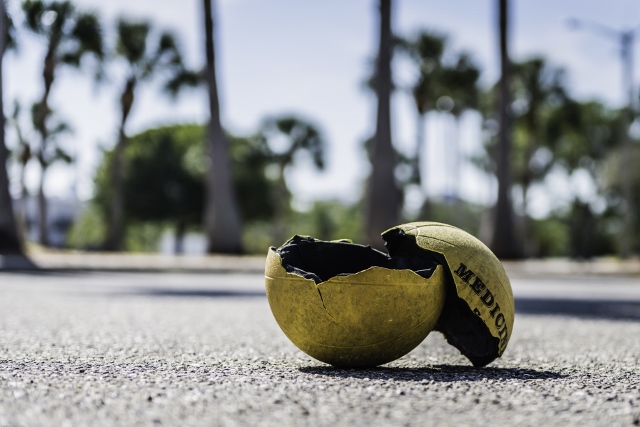
As I turn 50 years old in less than one month on April 10th, it is time to announce my first race for 2013 – The Congress Avenue Mile in Austin, Texas on May 18th. It was the second race in my 20/20/20<5@45 event back in 2008. I won the Masters Heat (over 40) in 4:50 at 45 years old. I have begun training now to try to beat my time of five years ago. Racing the mile faster five years later at 50 would be a great way to kick off the racing season. In 2013, I will be returning to some of my favorite races around the country. We travel to Texas first.
Our training concentrates on first establishing a running and strength base. In the photo above, we destroyed one of my 6 pound medicine balls on aggressive throw downs in the strength portion of the workout. As in the past, I put in 30 miles a week with each day being a different distance and theme to race one mile well in May.
With St. Patrick’s Day upon us today, I will be toasting the holiday with my green drink specially prepared by beautiful Sekyen. The concoction is made of kale, carrot, celery, spinach, and apples – and it is pure energy! Happy St. Patty’s Day to you all…
3 Ways To Be Explosive and Powerful

(Photo by Wayne L. Johnson – waynepacer.smugmug.com)
While the northeast was clearing out from the record snow fall, we were finishing up our first week of training with 7 x 1/4 mile on the incline of the Ringling Bridge in 75 degree weather. In speaking to family and friends up north, they were all having fun in the snow. To each their own as I am happy to be running and training in the Sunshine state.
In my last blog post, I spoke about the importance of landing stiffly on your foot pad when sprinting to decrease your time on the ground and thus becoming faster. Many runners have a difficult time with this stiff landing and the explosive push off because they do not yet have the strength in their lower extremities to run like this for very long.
Here are 3 ways to properly develop the muscle structure in your legs to become explosive:
1) Work your way up to the Speed and Explosion segment of Body Protection, at www.BodyProtection.com.
All the explosive movements are done on your foot pad as you can only stay 1/4 of a second on the ground. Very difficult to do, but worthy of trying as you build your legs for speed, stability, and power.
2) Practice your Power Preparation before you run to prepare your legs for the power needed to run faster in your sport at https://www.youtube.com/watch?v=4WxcZtJeYAE&list=UUuZjTDO6NmSeuiWZ7jbgrxw&index=34
3) As you can see in the above photo shot yesterday at the conclusion of our workout, cool down with flexibility exercises that increase your range of motion for sprinting like the walkover/ bounding hurdles. Please note the stiff landing and how my heel does not touch the ground when I am bounding: https://www.youtube.com/watch?v=dGEaFslzNf0&list=UUuZjTDO6NmSeuiWZ7jbgrxw&index=73
Remember that I maintain my stiff landing throughout my mile competition. Months of strength, explosion, and speed training needs to be done in order for you to depend on your sprint and power form. I will be announcing my first race in 2013 in my next blog post. All the best with becoming your best!
The Secret To Running Faster
Most people discuss the two most common ways to run faster by increasing stride frequency or increasing stride length. However, I feel the key to running faster is landing stiffly on the pad of your foot. The more time that you spend on the ground, the slower you will go. It is simple – fast running is not done on the ground but in the air. If you have not worked your entire body to incorporate speed and explosion, you will not perform very well or you will get injured.
When I am running faster, my foot lands stiffly on my foot pad (the area between the toes and the arch of your foot). This area is commonly referred to as the “ball of the foot” which has a fatty pad that protects the five metatarsal heads and provides a nice cushion when you land. When you run fast you are putting 100% of your body weight on this specific area. When I say landing “stiffly,” I mean that my heel does not hit the ground. I am trying to reach out in front of my body as far as I can and still land on the foot pad; thus , decreasing my time on the ground. Landing on your heel is like putting on the brakes due to your leg being straight and spending too much time on the ground. A variety of injuries (from your foot to your back) can occur if you continue to land on your heel. Once I land on the pad of my foot, I explode forward and up with almost a bounding feeling.
The best way to find out how you land is to take your shoes off and run. See if you land on the ball of your foot, your heel, or flat. A soft flatter landing (still hits the foot pad first but allows the heel to touch) is good when running slowly and with a shorter stride length as you do not want to run with a stiff landing unless you are elongating your stride length. If you continue to land stiffly with a short stride length, this will create a sheering effect as your femur pushes down in front of the tibia creating knee pain.
Please spend time strengthening all your muscles, ligaments, and tendons (especially in your legs and feet) before trying this stiff foot pad landing. Please visit www.BodyProtection.com for your copy of the exercises and movements to create the strength you need to become an explosive, fast runner.
The Power of Juicing and its Affect on Performance
Whether you are an elite athlete or an amateur enthusiast, one element of your lifestyle that will undoubtedly improve your sporting performance is your diet. Nutrition and lifestyle are key elements to the way in which you can perform physically and mentally, and despite the lengths that people will go to with their training, diet is all too often forgotten about. The basics of nutrition can be found in many different online resources and it’s important to gain a good understanding of what your body requires to perform at its optimum level and then implement this into your diet. If you are looking for an extra boost to your diet that will dramatically improve peak performance and give your body a ‘hit’ of goodness, juicing could be the answer.
What is Juicing?
Juicing is essentially the process of extracting the juice of fruits and vegetables and drinking them. Some nutritionists advocate juice fasting for periods of time for anyone interested in cleansing their bodies or losing weight, and this has been proven successful time and again. Athletes however, use juicing in order to boost their nutrient levels and give their bodies a timely injection of energy before, during, and after sporting activity. Almost all of the nutrients and goodness from the fruit and vegetables remain in the juice but the fiber is taken out, leaving a highly concentrated juice drink.
When you drink a fresh fruit or vegetable juice (which does not contain the fiber) the body is able to transport the vitamins and minerals around the body extremely efficiently. This provides you with a ‘quick fix’ of healthy, vibrant, natural energy. Because the fiber has been extracted from the juice, the digestive system does not have to remove it, meaning less work for the same nutritional goodness. The digestive system uses up to 60% of the body’s energy when it is working hard to digest a big meal, and this is why you often feel lethargic after consuming a large feast. Juicing is a quick and effortless way for you to get an influx of nutrients into the body.
How Can Athletes Utilize Juicing?
Juicing can be used to great effect by athletes who are looking to maximize the body’s potential as it allows you to load the body up with nutrients without using up valuable energy during digestion. You can also consume much more equivalent fruit and vegetables as it is condensed into a refreshing drink. Used as part of a well planned training and nutrition regime, juicing really can provide you with an additional boost just when your body needs it.
Freshly squeezed juices contain huge amounts of electrolytes, which help to rehydrate the body, and getting it from natural juices is the healthiest way. If you are really looking to give the body a boost of nutrients, you can also add in some natural hemp protein powder, spirulina, or wheatgrass powder to help the body to fight fatigue in the aftermath of heavy exercise. Research shows that the optimum time for the body to take in natural proteins in around 30 minutes after exercise, so having a juice drink 30 mins after exercise will be a great way to replenish lost nutrients.
For greatest effect, juices should be consumed on an empty stomach as this is the quickest way for your body to extract the goodness from the liquid. This means that on a race day you can utilize the body boosting power of juicing by consuming a nutrient dense juice one hour before the event, another during the race (if possible) and then another 30 mins after completion, with added natural protein powder if desired. This regime can also be followed on training days.
How to Get Started
There are countless different recipe ideas and combinations out there, with some being particularly good for short term energy boosts, and others for prolonged energy usage. The trick is to try as many different juices as you like and see what works best for your body. Beetroot, cantaloupe, pineapple, kale, spinach, celery, apple, orange, pear, lemon, and watermelon are all great items for athletes to juice as they provide tons of energy for the body. A ‘green juice’ may take a little bit of time to get used to as the flavors are particularly strong, however your body will reward you for sticking with it. You can always start with more fruit based juices and slowly add in your vegetables if you prefer.
Juicing is the perfect way to stock up on nutrients and energy without placing extra demands on the body due to heavy digestion, so if you want to feel light and energetic before and during exercise, give it a go.
By Lily Hardcastle
A Simple Way To Run Faster
So many runners just go out and jog through their distance training for the week. They like the camaraderie of their fellow runners as they speak about their lives, races, and nagging injuries. They jog long and slow many times during the week and when they have more time on the weekend, they go a little longer. Then after so many miles of running, they wonder why they are not getting any faster in their races.
These runners have trained their slow twitch muscle fibers and their aerobic base all week, but they have not developed their fast twitch muscle fibers and their anaerobic base. If you are one of those runners who love to run, hate to go to your local track, and want to get faster, here is a simple way to get faster in your running workouts.
Instead of just jogging with your friends, take 20-30 minutes in the middle of your next run and increase your pace and effort. A fun and easy way to do this is to take turns choosing different objects to open up your stride to for a short burst. For example, one person might say “to the telephone pole” which is 100 yards away. After you all pick up your pace to the telephone pole, then slow back down to your normal jog for some time to recover your breathing. Then the next person might say “to the stop sign” which is 50 yards away. After you all pick up your pace to the stop sign, then again slow back down to your jogging pace to recover. By changing the short distances and the recovery times in between targets, you begin to work your body in a way that will help you get faster. You will begin to feel muscles higher up your legs that not have been incorporated before in your running style and you will feel your lungs expand even further with your deeper breathing.
You might find out that the chatter begins to wane as the intervals increase, but I hope you find the change in your run not only beneficial to your race times, but also a lot of fun as you begin to open up your stride with your friends.
Body Protection Training DVD Video Trailer
Learn how competitive athletes are training to prevent injury. This 1-minute video trailer will provide you with a quick glimpse of the content contained within the 2-Disc Body Protection Training DVD that was filmed at The Movenpick Resort and Spa at the Dead Sea in Jordan. The DVD is now available for purchase on www.bodyprotection.com.
Body Protection™ is a movement-based training program designed to prevent injury and optimize athletic performance in any sport at any age. The components of the program provide competitive athletes with strength/endurance, speed/explosion and flexibility, while developing the body’s connective tissue. This multi-muscle, multi-directional, and multi-functional series of exercises also stimulates an athlete’s proprioception which promotes better balance and stabilization.
The Body Protection Training program is available on DVD. This two (2) DVD set is packed with over 90 minutes of instruction and 60 minutes of example exercises. These exercises are the basis of the personal training that David O’Meara teaches his high-performance clients during their in-person sessions.
Competition – Nothing Like It
I attended our high school regional cross country championships and a pro tennis tournament yesterday. I wanted to observe two of my athletes compete. One at the cross country meet before I begin his speed preparations for track season and a tennis player before I prepare his 2013 schedule. I learned a great deal by seeing the race and the match in person. With all the statistics and other various numbers that computer programs spit out, for me there is no comparison to actually being at the event. I know it might sound like “old school” to some, but I need to use my senses to watch live action, hear the sounds, and feel the intensity of competition. It is what has kept me in love with live sports since I was a youth and developed my instincts as a coach.
It was indeed a day of contrasts. The runner ran a personal best falling over after crossing the finish line in pure exhaustion. The tennis player competed well for a set and then drifted away losing the last 12 of 13 games. I find it interesting why some athletes rise to the occasion and others collapse. Certainly some have not worked or prepared properly, some do not care as much, and some fear competitive situations. Why can’t we try our best in the competition, win or lose with grace and humility, and take responsibility for our actions? It seems so simple, so wonderful, so free. We have been cluttered with so many other thoughts that the joy of competing against others has been tarnished. I am not naive to the fact that there are many things associated to sports success: money, scholarships, and fame. But when I put my toe on the starting line of a race, the only thing that matters to me is the desire to give my best. I just wish the young athletes of today do not miss out on how much enjoyment and satisfaction can come from true competition. My athletes had contrasting realizations yesterday that only competition could bring out. The journey continues…
The Mind of an Athlete (Part 2)
The best athletes have inner confidence and the ability to see situations in a way that help them reach their highest level of performances. Confidence is not a fragile state that can be lost at any given moment, even though many people use the phrase, “I just lost my confidence.” People might lose their focus, temporarily feel poorly, or feel nervous, but confidence is built on a series of past experiences and takes time to develop and time to lose. Inner confidence is not lost on one weak performance or one missed play. For example, if a man was to ride a horse for the first time, he would not feel “confident” because past experiences were not established. However, after riding a horse for a few months, that same man would begin to feel more relaxed, more secure, and more confident. This is why it takes years to become a professional athlete. After years of practices and competitions, inner confidence is created.
How an athlete sees a situation is based on that athlete’s perceptions. Perceptions are how athletes see themselves, events, and others. Perceptions are the source of their every thought, feeling, and action. It is the basis of making a lasting change in the mind. An example from my second book, Play Better, Live Better, presents a deer in the woods and standing next to me is a hunter, a farmer, and a little girl. The hunter sees the deer as a trophy and would like to kill the deer and put its head on his wall. The farmer sees the deer as a nuisance and is fearful that the deer will come and eat all his new plants and vegetables. The little girl sees the deer as a cute animal and wants to give it a hug. This is the power of perceptions – it is the same deer, but with three very different perceptions that will shape each of their thoughts, feelings and actions. The cool thing is that perceptions are a choice and an opportunity for athletes to choose perceptions that will help them perform at their highest levels.
The Mind of an Athlete (Part 1)
If you can do the physical, the most difficult part of the game to master is the mental. This is what many athletes miss in their preparation for competitions. I was asked by a reporter the other day about the greatest challenge on The 2012 Isles Mile Challenge and I said “constantly taming my mind on tour.” I feel our minds love to jump around hurting our concentration and focus. Being present focused seems so simple, but yet is so elusive. Our minds jump from the past to the future keeping us mentally weak and hurting our athletic performances.
So how do we begin to tame the mind?
1) Stay in the here and now. This race, this point, or this play is all that matters. Every other thought will diminish your performance. Easy to say, extremely difficult to do, but it is something you can learn.
2) The mind-body connection is bridged by your breathing. People laugh at me when they hear me breathe during a mile race (heavily through the mouth and nose), but they also laugh when they hear me perform my breathing exercises for relaxation, focus, and visualization (almost Darth Vader like). Deep breaths through the nose activates the lower part of your lungs and will increase blood flow and increase energy. Longer exhalations than inhalations can also help you relax and calm your entire body.
3) Create habits that keep you in the present. For example, get used to giving your absolute best mental effort in every competition (something you can control) and forget about the outcome (something you cannot control) – it is an amazing zone of performance that you will want to repeat again and again. You will be free to compete at your highest mental level.
Recovery Workouts
Since my return to Florida, I am trying to listen to my wife and rest a bit more. I have to admit that I have had difficulty “decompressing” after every one of my tours and this year is no different. A little down time, an occasional nap, and a swim in the salt water are very much in order for September. Also on my return, I try to help out a few of my running buddies in their workouts.
We try to take advantage of our natural surroundings in Florida and workout/run on the beautiful flat beaches in Sarasota. I was assisting one of my running buddies in a six mile run on Saturday and we ran by four manatees in the shallow waters of Siesta Key. Manatees are as big as cows and are very friendly. It was one of the many blessings in our early morning workout.
Even though I am not training for competition this fall, I hope to enjoy the simple pleasure of running and to inspire the other runners preparing for competition. Maybe this fall I will do a little better getting accustomed to life not on tour…
How To Achieve Peak Performance
We wanted to share what we learned in this 2012 Isles Mile Challenge experiment that could help you perform at your peak. Remember this is a “buffet” of ideas, please pick or choose what you want that could help you reach your highest level of performance.
1) TRAINING – Our focus in the spring on running up and down the Ringling Bridge to prepare my body for the up and down conditions of the islands worked out great. My training buddy, Wayne, and I set up sprint work, tempo work, and interval work on uneven terrains. We live in Sarasota and train most of the time on surfaces that are very flat, we call the conditions “Florida Flat” (as I have raced in California on so-called flat courses, but they are very up and down compared to Florida).
2) RECOVERY – After 30,000 miles of travel through various time zones, my body held up surprising well. With races every week, one pulled hamstring and the tour was over. No Advil or ice was used to recover – just massage therapy and my Body Protection program. During an interview the other day, the reporter did not believe me at first when I said that I used no medicine at all on the trip, but after he heard of my training – he understood. Not only on this tour did I not get injured, but I also did not get sick. My immune system stayed strong throughout the travel. I took my Vega One shake every morning, followed a strict vegan diet, and had no alcohol.
3) RACING – Prayer, visualization, and a present focus mentality prepared me for the various race conditions. Each race was different, but my mind was the same. There were times I spent hours on the road race course going through the turns and 1/4 mile splits over and over. I wanted to feel like I had raced on this new course before. Getting familiar with the conditions really assisted me in my racing confidence. Also,my focus on my racing form and technique really helped me to stay fast and strong. Charlie Olbrias (our official timekeeper) said that I looked as fast as I did 3 years ago when he followed me to 27 races in 2009. My mile race times this year backed up his observations and assertions.
Now that the summer is over, it is time to set up your fall training, recovery, and race schedule. Please feel free to ask me any questions on how to optimize your efforts as you try to peak in the last quarter of 2012.
www.BodyProtection.com is now LIVE!
It has been a whirlwind of travel since my last race on the Big Island of Hawaii. We flew to Phoenix to view the final cut of our new Body Protection DVD, traveled to Atlanta for an interview, then to Sarasota to see a couple of clients. After traveling about 30,000 miles on The Isles Mile Challenge, I am writing you now from Istanbul, Turkey as we came here for a celebratory trip and to see a city that we have not visited yet. It has been great to unwind a bit and stroll this old city. We will move onto to NYC for a couple of days of the US Open tennis and then be back in Sarasota for the start of September.
Last Friday, www.BodyProtection.com went LIVE and you now have the opportunity to pre-order the DVD and not pay any shipping/handling costs (if you purchase the DVD before September 15th). Please check out our new site and let us know what you think of the cool layout.
Running Hawaii
After days in Oahu and Maui, we finally reached The Big Island of Hawaii. This island is the home of many different climates and changing landscapes and is our favorite Hawaiian island. We stayed near the race course on the hot, arid northwest side of the island in Waikoloa. We drove just an hour more north to lookout over the Pololu Valley and the weather changed dramatically with rainy conditions at the higher elevation.
Our race course is part of the Ironman bicycle course. Surrounded by volcanic rocks on each side of the road, I raced on Route 19 just outside the Kailua-Kona airport. I had a lot of difficulty in this race breathing the dry air. I know I breathe like a locomotive train when racing the mile anyway, but this was different. You can hear me wheezing on the video throughout the race. I gutted out a 4:44 mile and successfully completed the 2012 Isles Mile Challenge finishing 7 island one-mile races, in 7 different time zones, in 7 weeks – all under 5 minutes. Thanks to our Big Island driver, “T,” keeping me protected throughout the race.
This was an amazing and intense tour. Next weekend back on the mainland, I will summarize the items we experimented with in 2012, the things we learned on our travels, and where we go from here. I turn the big 50 next April. Many people have been writing in letting me know what they think I should do for a 50th feat. Please feel free to let me know your ideas and thank you all for your continued support and prayers, it is much appreciated.
Maui Jim Sunglasses
Aloha! After a couple of days on Oahu, we flew to Maui to visit one of our longtime sponsors at www.OneMileRunner.com, Maui Jim Sunglasses www.mauijim.com. It was our first time visiting the location where Maui Jim began in Lahaina. Even though Maui Jim moved its headquarters to Peoria, IL after purchasing RLI Vision in late 1996, the Hawaiian culture and way of life that Maui Jim promotes dates back to its roots here in Lahaina.
Having an opportunity to meet the owner and CEO of Maui Jim, Walter Hester, and his entire Lahaina staff was a treat for Sekyen and me. We felt the warmth, hospitality, and care that Maui Jim prides itself in everyday with its superior customer service and employee relations.
(Sekyen and I with Walter Hester)
(Bill Haywood and Jen Williams with me at the entrance of the Lahaina location)
Being a Fitness Ambassador for the Maui Jim Team https://www.mauijim.com/teammaui.html called ‘Ohana (Hawaiian for family), I was asked to test out a new pair of sunglasses called “Hot Sands.” Even though “Hot Sands” will not be available for purchase until later this year, you will see me testing out the model during the last leg of The 2012 Isles Mile Challenge on the Big Island this Saturday.
Sekyen and I wanted to say a special thank you to Ruthie Belden, Executive Assistant to CEO, who took the time out of her busy schedule to show us around the facility and share with us the values of Hawaiian history. Mahalo!
Running Fidalgo Island
I had no idea where Fidalgo Island was located before I began The 2012 Isles Mile Challenge. However, we are pleased to learn about this wonderful getaway just about 80 miles northwest of Seattle, WA. We had a chance to see Deception Pass, a strait between Fidalgo Island and Whidbey Island, and walk/jog across the bridge built over the Pass in 1935. We stayed in Anacortes, the main town on Fidalgo Island, during its busiest weekend of the year as they hosted their annual Arts and Crafts Festival in historic Downtown Anacortes. And we enjoyed the special hospitality of Matt McKay at the Nantucket Inn.
We were blessed with great weather for the race as Fidalgo Island is in a rain shadow as mountains block the rain producing systems that keep Seattle so moist throughout the year. The weather even in Seattle this weekend was beautiful. I ran a 4:43 on a tranquil country road that typifies the area and was protected at all times by Mert and his taxi service.
We are traveling to Hawaii on Sunday for the last leg of the The Isles Mile Challenge for www.OneMileRunner.com. We are planning on racing on the Big Island next weekend after seeing the great waves of the North Shore of Oahu, touring the Maui Jim sunglasses office (one of our sponsors) on Wednesday, and then racing on Saturday on the Big Island near where the IronMan triathlon takes place. It should make for a great finish to an unbelievable tour.
Running Bermuda
You would think with an island’s highest point being only about 260 feet above sea level that it has flat terrain, but Bermuda is an up and down island making Race #5 on The Isles Mile Challenge my most difficult race yet. Bermuda is a British overseas territory located in the northern Atlantic Ocean off the east coast of the United States. In my opinion, it has one of the world’s most beautiful beaches in Horseshoe Bay and is a leader in off-shore finance.
We raced just outside the capital city of Hamilton on a warm morning. I ran a 4:49 mile on the sometimes dangerous course, but was well protected by driver, Jack Mungal.
After five weeks on the road, we were pleased to board a plane soon after the race to spend the weekend in Sarasota before venturing west to Seattle at the beginning of the week.
Running Mount Desert Island
Stop #4 on The Isles Mile Challenge is the largest island off the coast in Maine – Mount Desert Island. With its rugged and rocky beauty, Mount Desert Island is the home of Acadia National Park and the quaint town of Bar Harbor. We arrived on Saturday with Charlie Olbrias and Scott Boucher from The Last Mile Racing Management LLC. Charlie and Scott measured the selected course and prepared us on the particulars of the race on Sunday.
I awoke at 4am to begin my warm-up for the race. The sun rises early this far to the east, so a few minutes after 5am the sun appeared. We had dry and sunny conditions, around 65 degrees, with strong winds. It was a great day to race. The race course was in Acadia National Park and was one of our most picturesque routes to date. Check out the beautiful views in our 2 minute video below:
It was very special to have Charlie and Scott from The Last Mile Racing Management LLC (www.thelastmileracing.com). They use the My Laps system to get the precise computer time with the “chip” being attached to the back of the bib number, so when your chest crosses the final mat, the clock stops. I ran a 4:39 and was happy to have my old crew with me.
We are traveling on Tuesday to Bermuda and Race #5 will be at the end of the week. We have crossed the halfway point of our tour…
Running Santorini
I have wanted to go to Santorini for many years. We visited many Greek island in 2007, and then ran on the island of Symi in 2010, but never made our way to Santorini. On the 2012 Isles Mile Challenge, we came to Santorini and it did not disappoint. I think it is one of the most beautiful places in the world. You are situated high up on the volcanic cliffs overlooking the giant caldera (which was created by one of the world’s biggest volcanic eruptions in 3650 B.C. toppling Minoan civilizations). Spectacular sunsets, a famous red sand beach, and archaeological digs that are still in the process of being excavated. Santorini has a variety of things to do and see, but the sights are breathtaking. Take a look at the sunset from our cool hotel room or see Santorini from our boat cruise in our short video. You will get a sense of the island’s beauty and my heavy breathing during the middle of the race.
Situated up so high on the cliffs, there is a lot of wind to keep you cool in the summer heat. We did not even have to use the air conditioning, just left the windows opens in our high perched room creating cool breezes all night. We awoke on race day at 4am and raced about 6:15am as we tried to beat the traffic on one of the busy roads of Santorini. Thanks to our trustful driver, Leftoris Poulis (pictured below), we were able to remain safe on the race course.
I ran the mile course in 4:45. I felt a bit fatigued from this third race in a couple of weeks, but was happy to complete the European leg of the Isle Mile Challenge. We now head back to the eastern time zone in the United States. We will make our way up to the state of Maine where we will meet up with one of our sponsors – The Last Mile Racing Management based out of Connecticut. The Last Mile Racing Management is the Official Timer of all our events. You probably remember Charlie Olbrias and Kyle Dunnack of The Last Mile Racing Company as they established the New England Marathon…One Mile At A Time in 2009 and followed me throughout 27 New England cities. Charlie will be measuring, timing, and protecting me in the next race at Mount Desert Island on July 22nd. We look forward to returning to the States for Race #4 before moving onto to Bermuda for Race #5.
Running Iceland
After our race on the west coast of Ireland, we boarded a bus to Galway city, switched buses to travel across the country to Dublin, boarded a plane to Amsterdam, and then made the flight late night to Iceland. It was a long day of travel, but it was still light when we landed around midnight (as the summer months have just a few hours of darkness each day).
We had a bit of jet lag to get over, but we had a chance to train and take in a few of the beautiful sites around the capital city of Reykjavik. Thingvellir National Park (a UNESCO World Heritage site) is a very cool place as it is the junction of two tectonic plates on the mid-Atlantic range. The division between the North American continent and the European continent is most visibly seen here in Iceland. The break in the continental divide stems over 3 miles wide and increases 2 cm. every year. We also had the opportunity to see the incredible waterfall at Gullfoss, the faithful geyser, Strokkur, and finally soak in the thermal glacier baths at the world famous Blue Lagoon. If you have not visited Iceland, please put it on your list. You will feel like you are on another planet as the natural landscapes do not disappoint.
We raced just outside Reykjavik on our first sunny day since we left the US. It was nice to race in the sunshine and I finished race #2 in 4:42. Our crew in Iceland was very friendly, especially our enthusiastic driver, Arne Thorolevison from Hveragerdi.
We continue across Europe tomorrow as we overnight in Amsterdam. Fly to Athens and then onto the Greek island of Santorini on Friday.
Running in Ireland
We have seen the sun for just a few hours since our arrival in Ireland, but this is why this island country is so green…
The Irish people are extremely friendly and they make you feel right at home. Our Irish host from Clifden, John Wallace, is a typical Irish bloke full of love and Irish humor (and his favorite Guinness). Here’s a photo of Sekyen and John in front of beautiful Kylemore Abbey:
Our first race in Galway county mixed a bit of wind, rain, and slippery roads, but it was a good start to the tour. I ran a 4:49 and was very thankful for another part of our Irish crew – driver Lukas Pietraszewski who kept me protected the whole way. Here is a photo of Lukas after the race:
We fly to Iceland on Sunday ready for more rain next week. We will miss the picturesque countryside of Connemara and the warm Irish folks who have made our week here a very special memory.
Running: 5 Steps to Run A Better Time Trial
The last part for my speed preparation is a time trial. Just me against the clock. Unfortunately, some of my races are just like a time trial (in some of my strange locations) with no other competitors. It is I vs. the clock – that is how my time trials are set up. It does not have to be that way – you can have competitors at a time trial, but for me to properly measure my training and my shape, I prefer to run a time trial solo. I do this to build my mental strength. This is why I find time trials much more difficult than running against other competitors. In a race, you can draft, pace, and use other competitors in your event. In my time trial, I am alone and want to feel that loneliness over a measured distance.
We have set up a half mile time trial on the roads behind my house that I run every year before my tours begin. It helps me build confidence in my body, mind, and spirit. I do not run this time trial all out, instead I use it as a dress rehearsal for my mile race. I warm-up the same way and put my toe on the line just like it is my first race. I want to “feel” what the first half mile should feel like in my mile race. I practice my strong start, my first quarter mile, and then run my second quarter just as I would like in the mile – smooth, relaxed, and rhythmic. I should be around 2:20 for the first half mile.
I ran time trials the last two Saturday mornings running right around 2:20. This practice allows me to race with confidence next week. Here are some points to remember for a good time trial:
1) Warm up fully
2) Race solo or with others – your choice.
3) Choose the same course in order to measure improvement
4) Have a purpose – what are your performance goals?
5) Reflect and repeat the following week
All the best with your speed workouts to help you better prepare for your racing distance. We are off to Ireland on Monday for our first race. Let’s hope the rain will stop just before I put my toe on the line…
Running: 7 Steps to a Better Start
Working on my “start” is part of my speed training. I remember my mistake at The National Masters Indoor Championships in 2006. When the gun went off for the start of the race, I went backwards and not forwards giving up position on the tight 200 meter track. I wanted to start off in a certain group for the mile, but they were already gone. I ran a 4:46 just before my 43rd birthday. I corrected my “start” mistake the following year at the same track in Boston at The National Masters Indoor Championships. After working repeatedly on my start and the initial 100 meters of the one-mile race, I ran a 4:37 just before my 44th birthday. I had earned my qualifying spot for this National Championship and wanted to stay with the leaders for the first 1/2 mile. My good “start” helped me establish position in the lead group and allowed me to keep my race strategy for an improved time in 2007. Now that I am soon embarking on my 5th tour for www.OneMileRunner.com, I am working on my “starts” this month as I prepare for my first race on July 1st.
The shorter the race, the more importance is given to the start. Usain Bolt in the 100 and 200 meters knows how important his “start” is going to be in London next month. From 400 meters and below, sprinters use “starting blocks” to begin their races. Events longer than 400 meters (one lap around the track) do not use “starting blocks”. Even though in longer races the start is not as important, it is still fun speed training and certainly gets you focused on the task at hand.
Here are the 7 keys to a fast start for races that do not use a starting block:
- Line up your feet in a sprint position one ahead of the other. (Decide which foot you would like to have in front – this will be your push off leg).
- Your feet should be about shoulder width apart with your front foot flat and the back foot just touching with your toe. (If you begin with a base too wide, it can cause you to retract backwards at the shot of the gun).
- Whatever foot you have in front, raise your opposite arm up high in a full arm swing position.
- Lean over the starting line (yes, it is legal to lean over) with almost all your body weight on your front foot.
- At the shot of the gun, thrust down and back with raised arm and push off with your front foot at the same time. This will literally launch you off the line to begin your race.
- Keep yourself in full sprint mode to get position at the start of your race and to avoid collisions with other participants’ legs and elbows.
- Maintain your sprint speed for a desired length (somewhere between 60-200 meters depending on the race).
Enjoy the power of your new “start” and begin your race with a bang!
Preparing For The Speed Of The Mile
One of the reasons why I love the workouts for the mile is that every day is different training. Besides all the full body strength training that I do to prepare for the abuse of racing every week, this month of June focuses on training the speed required for the mile. The week started for me in Arizona, where I began my week on Monday with repetitions of 8×1/8 mile sprints, returned to Florida to run a 3 mile tempo run on Thursday, and concluded my speed training on Saturday with 7×1/4 mile on a straight road. This coming Tuesday, I hit the bridge to take advantage of one of the few hills in the city.
Let’s go over each of these different speed workouts so you can understand why you should add them to your workouts:
- 1/8 mile sprints – all-out sprints preparing your muscles to load and explode
- Tempo runs – roughly 20 minutes of “hard running at ease” (breathing is easier) to raise lactate threshold (the breaking point where your muscles fatigue)
- 1/4 mile repetitions – slightly slower than your sprint speed teaching your body to work harder and increase your running efficiency
- Hill repeats – working against gravity improving the strength of muscles and tendons
At 49 years old, I follow my hard runs with a recovery run (30-50 minutes) the next day allowing time for my body to mend, strengthen, and absorb the quality speed workouts. Of course, before you begin your speed workouts get properly warmed-up with light jogging and mobilization exercises, and then conclude the workout with a cool-down of jogging mixed with striding (easy lengthening of your stride) and stretching movements to remove lactic acid created by the speed workout. Please let me know how any of these various speed themes help you to go faster.
One Month Away
The one-month countdown begins as we fly to Santorini, Greece on June 26th for our first race on the Isles Mile Challenge. Marking the one-month countdown this coming Thursday, one of our sponsors, Vega, will be launching a social media blitz on their Facebook page at www.facebook.com/vegafanpage, about our event and will then be offering a prize giveaway during our tour this summer.
At the moment, we are in Arizona preparing our new website www.BodyProtection.com where you will be able to learn about our new training program and DVD. The new website will be launched in July to commemorate the start of the Isles Mile Challenge.
Hope you are all excited about your summer races and training as the weather heats up.
Feet Are The Foundation
Our feet are amazing structures. They are the foundation to our running. With so many moving parts, our feet are made up of some 26 small bones (25% of the bones in our body are in our feet). Also, our feet contain more than 100 muscles.
The foundation for runners begins with our socks (which often get overlooked). The last three years I have been wearing a graduated compression sock that goes over my calf. This year we are going to try something different on The Isles Mile Challenge – a low cut sock. I have chosen the Feetures Elite Light Cushion to race in throughout my tour. This Feetures sock makes for a fabulous foundation as it consists of iWick fibers to take away moisture and promote dryness. The Elite Light Cushion has arch support, an anatomical right and left design for a better fit, and no toe seam.
I said in my last blog that I was just fitted for my new racing orthotic. It supports my feet in the areas needed, but made up of unique materials that are light enough for high performance.
Then I just chose the third element for my foundation – the race shoe. With all my races on the road this year, I have chosen the New Balance 1400. This racing flat from New Balance has welded seams (no sewing)to reduce weight and prevent irritation. The REVlite midsole and the mesh upper are great materials for speed.
The fourth piece of footwear I travel to races with is the post-race sandal. I chose the SOLE Sport Flip as they conform to my feet and are joy to put on after a tough race. It allows my feet to dry out while still giving me the orthopedic support I am seeking in my footwear. If you have not tried a SOLE orthopedic sandal yet, you are missing out on how good a sandal can be for your feet.
I hope you can find the right foundational equipment for your feet. Begin with the sock, then the footbed, the shoe, and a post-race sandal. You should be comfortable, secure, dry, and fast. Let the races begin!
“Like” Us on Facebook
I have been behind the scenes at www.OneMileRunner.com focusing on the many aspects of our event operations since David’s first tour in 2008. Working for www.OneMileRunner.com has been one of the most exciting experiences of my life. Its been an honor to witness first-hand all of the races that you have seen and read about on our blog. We are preparing to launch our next venture, Body Protection training, later this year. To begin sharing the developments and news of our first product release, we have joined Facebook. Facebook will be the platform that we use to connect internationally with clients, partners, friends, followers and fellow athletes. I personally want to thank all of you who have been on this journey with David and I since 2008. I believe the future holds even more exciting and unpredictable experiences that will be documented not only on our blogs, but also at www.facebook.com/bodyprotection. Please visit us on Facebook, and “Like” our page. We are already planning ways to socially interact with you; and our partners have shown interest in sponsoring Facebook contests where you can win some of the products that David uses to stay on the cutting edge of fitness. Most of all, I look forward to putting faces with all of you who have supported us for so long.
Orthotics – New and Improved
On Friday, I traveled up to Tarpon Springs where the 2008 tour “20/20/20<5@45” began. The starting line for the first race was just outside the Faklis Department Store and we raced down to the sponge docks. It brought back a lot of fond memories as I had not been there in a while. I was there to meet our www.OneMileRunner.com Biomechanical Consultant, Vasile Faklis. The reason for my visit was to get fitted for my new orthotics. I have come to see the artist, Vasile Faklis, make my orthotics and customize my orthotics to fit me and my activities. I have a racing orthotic that is light and flexible, a training orthotic that is a bit more supportive, and a tennis orthotic that fits my movements for that sport. Indeed, there is a science behind orthotics, but it is also an art. That is why it is important to spend quality time with the orthotist who is actually making the orthotic. Seeing Vasile is always worth the trip.
Last year in the 2011 event, “5 Wonders Under 25 Minutes,” I used one of Vasile’s new products, the customizable off-the-shelf orthotic, the Faklis Fit V1. It was my first time using an off-the-shelf product. What makes the V1 unique is that you can customize it to each person’s needs. Thus, Vasile takes the dimensions of my custom orthotics and adds it to the V1. For the upcoming “Isles Mile Challenge” I will be using the V1 and in the fall I will change to the Faklis Fury which will be the elite version that incorporates far infrared ions. The new off-the-shelf orthotic will be launched at the NATA Conference (National Athletic Trainers Association) in St Louis on June 26th. You will be able to order these this summer at one of my new sponsors for 2012 HAPAD, Inc. at www.hapad.com. Great biomechanics foundationally begin with a sock, an insole, and a shoe. So when I see Vasile for my biomechanical fitting each year, we choose what Feetures sock, what Faklis orthotic, and what New Balance shoe I am going to train and race in. Then I hit the pavement knowing I have a great foundation for high performance and injury prevention.
Cellulitis hampers first month of training
March was an interesting month as it began with a case of cellulitis of my right ankle and foot. Cellulitis is a skin infection that creates redness, swelling, warmth, and pain. Bacteria enters the body through a small cut or scrape of the skin. Even though I am highly susceptible to skin and blood infections, I have never had cellulitis before, so this was all new to me.
After seeing my doctor and having an ultrasound to be certain that it was not a blood clot, I was sent home to have 10-day regime of antibiotics. I thought I was going to feel no pain after the 10-day cycle of antibiotics, but the tissue damage still remained. The doctor said it could take 4-6 weeks for the underlying tissue to heal completely. Even now, I still cannot tie my shoe as tightly as before. As you can imagine, little changes in my foot plant and push off can alter the way my body runs. I have continued my coaching and training throughout the treatment, but had to back off a bit recently when I experienced some swelling in my right knee due to the changes in my landing. The body is an incredible mechanism as even the slightest alteration can lead to major consequences. The body adapts to compensate for the change and can lead to other problems.
This is our fifth event in the last five years, so we are no strangers to the twists and turns that can take place during a training period or racing schedule. It is all part of The Isles Mile Challenge preparation and learning. It made for an unusual first month of training, but we will keep you updated every week as we get ready for our first race in Greece on July 1st.
Thai Massage
Training has begun for ourwww.OneMileRunner.com 2012 tour – The Isles Mile Challenge. Speed training began last week to test out my form in a series of sprints – 20 x 100 yards in 14-15 seconds followed by a new recovery modality entitled Thai Massage. At Wellness Concepts, www.wellnessconcepts.com, our new Massage Consultant, Leah Macy, puts me through some of the various yoga-like positions of the ancient therapy (over 2500 years old).
Leah spoke to me about different ways we could continue to work on my flexibility and to increase my range of motion. So we are going to add in another recovery session every other week with Thai Massage. We will shoot another video later in June to see any improvement over the few months ahead.
Perhaps after viewing this short video below, you might consider to add Thai Massage to your recovery program.
Paes Accelerating At Any Age
Our tag line at www.OneMileRunner.com to “accelerate at any age” was fun to see in action at the end of January by one of my former students and Indian legends, Leander Paes, as he won the Australian Open Men’s Doubles crown over the Bryan brothers to complete a career Grand Slam (US Open, Wimbledon, French Open, and Australian).
I began working with Leander when he was 12 years old in 1986 in Chennai, India when I was coaching the Indian Junior National Tennis Team (1986-91). Now at 38 (turning 39 this June), he has completed one of his dreams in tennis. Please check out the Hindustan article on the achievement:
www.hindustantimes.com/sports-news/Tennis/Keeping-Paes-with-the-legend/Article1-806880.aspx
Leander is indeed an example of a great talent, true sportsman, and endearing gentleman. A wonderful role model for aspiring athletes to follow. I stopped working with Leander in 1996 and even though we do not see each other as often as we should, when we get together – it was like we saw each other yesterday.
I feel like I also “grew up” in India during my coaching years. With our recent 2010 and 2011 tours taking us to race the mile in the streets of India, it has been very special to reunite with old friends/colleagues and to work with new young athletes.
How can you accelerate toward your own physical, mental, or spiritual aspirations? Remember it is not too late to begin your quest as the process to reach your goals later in life is even sweeter.
The Isles Mile Challenge – 2012 www.OneMileRunner.com Tour
We just returned from our winter meetings in Phoenix. Our new DVD called Body Protection will be ready for release in April. We have added two new Consultants in 2012, Dr. Greg Kotlarczyk will be our Chiropractic Consultant and Leah Macy will be our Massage Consultant – both based at our choice of a recovery center – Wellness Concepts. And you can now find us on FaceBook at Body Protection.
The Isles Mile Challenge combines the themes from our past four tours: speed/strength/endurance (2008), recovery (2009), international travel (2010), and adventure racing (2011). The Challenge is to race 7 one-mile races (each under 5 minutes), on 7 different islands, in 7 different time zones, over 7 weeks. It will begin on July 1st in Greece. If I do not break 5 minutes in a race, I must find another island in that time zone and beat 5 minutes before I can continue on. Here is the race, travel schedule, and time zones:
- Santorini, Greece (GMT+2)
- Copenhagen, Denmark (GMT+1)
- Reykjavik, Iceland (GMT)
- Mount Desert Island, Maine, USA (GMT-5)
- Hamilton, Bermuda (GMT-4)
- Whidbey Island, Washington, USA (GMT+8)
- Honolulu, Hawaii USA (GMT-10)
The 5th event at www.OneMileRunner.com, The Isles Mile Challenge should be a great mental and physical test this summer.
Why Do You Run?
Why do I run? I have been asked that question many times. I have also been asked numerous times, why do I race? I answered that question in my last book, Creating Amazement. I feel the physical, mental, and spiritual challenges in the mile race actually bring me closer to God. Then people ask, what do I mean? My response is that I am interested in life in things I cannot touch or purchase. Each run and race brings me closer to my spirit within as I learn about courage, faith, trust, confidence etc. Each race required me to aspire to new perceptions and beliefs that taught me something about myself and called upon me to go beyond where I had been before.
An infographic agency just rolled out a fun infographic illustrating the anatomy of American male and female runners. The last question illustrates the reasons why men and women run. What is your motivation to run or race?
Running Music for a better running experience!
How Nutrition Plays A Vital Role In Your Recovery
We had the special opportunity to hear Brendan Brazier speak in Sarasota on Sunday afternoon sharing snippets from his new book, Thrive Foods. A former professional Ironman triathlete and author of Thrive and Thrive Fitness, Brendan is the creator of a whole food line of nutritional products called Vega. In the photo below, Brendan and I are flanked by Sheri and Leslie from Sequel Naturals.
I have traveled all over the world the last few years as a Vega Ambassador with my nutritional packets of Vega to start my day with Vega’s Health Optimizer – thus replacing any other supplements. Then I finish my workouts with Vega Sport, a natural plant based performance protein, for my recovery phase. These are the main products that I use in the Vega line. Vega products are a great example on one of the topics that Brendan discussed yesterday – high net gain nutrition vs. low net gain nutrition. He believes that with athletes of similar talent, workouts, etc. – the difference is the recovery phase for improved performances. He went on to say that the key to the recovery phase is nutrition – about 80% of the recovery phase is your nutritional intake between workouts.
Please check out his new book, Thrive Foods, on how nutrient dense foods can change your life and the lives of others.
Nutritional Seminar
Vega is an award winning line of plant based nutritional products that has been a long standing sponsor of www.OneMileRunner.com. I will be joining Brendan Brazier, the Formulator of Vega, at his event in Sarasota on November 20th at 2pm at the Glenridge Performing Arts Center as he gives a nutritional seminar based on his new book, Thrive Foods. Brendan will be discussing the importance of nutrient density to ensure healthy eating. RSVP at (941) 924-4754 or via email at vega.sarasota@gmail.com if you are in the area and would like to attend.
Also, please check out the 10/24 interview with another of our sponsors, SOLE, as it summarizes our 2011 event, “5 Wonders Under 25 Minutes.” It can be found on the SOLE homepage at www.yoursole.com.
Thank you all for your support in 2011!
Body Protection Filmed At Movenpick Resort and Spa at The Dead Sea
It was a long journey in a short period of time and my lead videographer is still probably cursing me today that I decided to shoot Body Protection in Jordan, but it was worth it. Our crew did a great job working endlessly to capture what we needed in four days of filming. We are excited, but also exhausted…
The Movenpick Resort and Spa at the Dead Sea in Jordan showed us wonderful hospitality and support during our demanding video shoot. They went above and beyond to assist the filming.
With the Dead Sea and the West Bank of Israel as the DVD’s backdrop, it made for a picturesque setting. Now the editing begins. Body Protection will be released in January 2012. We look forward to sharing with you the training secrets to keep you injury-free.
We have a lot going on before the end of the year as BodyProtection.com will be launched in December. It is now time to spend a couple of months at home after being on the road since May with “5 Wonders Under 25 Minutes” and now the filming of Body Protection.
Returning to the Dead Sea
We have had a busy schedule since returning from our “5 Wonders Under 25 Minutes” tour. After a clinic in Martha’s Vineyard and then a trip to Atlanta this past weekend, we are now traveling back to Jordan to shoot the new “Body Protection” DVD. Sekyen and I and our film crew team will be leaving Thursday to travel to Amman, Jordan via Dubai. We start shooting at the beautiful Movenpick Resort and Spa at the Dead Sea on Sunday morning. We have five mornings to shoot the entire training program. So I hope we all know our roles and are able to complete the shoot in the allotted time slot.
We will be returning to the USA on October 15th. We will be editing and putting the DVD together in November and December and have it ready for sale by the end of the year. We are excited to share all this information with you and give you the opportunity to be injury-free with Body Protection.
“Body Protection” DVD Will Be Filmed At Dead Sea
We will be returning to Jordan in the second week of October to film our new fitness DVD at the Movenpick Resort at the Dead Sea. The www.OneMileRunner.com film crew will be boarding the plane for the 14 hour plane ride to Dubai followed by a 3 hour plane ride to Amman, Jordan. After completing 4 different and unique one-mile events over the last 4 years, it is now time to share the reasons why I have not been injured during these trying tours. “Body Protection” will be broken down into three levels – beginner, intermediate, and advanced and is for athletes of all ages.
We are spending this week on the beautiful island of Martha’s Vineyard off the coast of Massachusetts leading a tennis and fitness clinic. I will spend a week in Sarasota preparing for our upcoming DVD. Then we are off to the lowest place on earth, the Dead Sea, to create a DVD for you all to utilize in order to stay injury-free in your chosen sport.
Running At Petra, Jordan
Our final leg of our 2011 tour “5 Wonders Under 25 Minutes” took place in Petra, Jordan. Petra is an incredible old city found in the red rocks at almost 3000 feet above sea level. Petra fittingly means “rock” in Greek and inhabited in 600 B.C. by the Nabataeans. Petra was chosen on the 2007 list of The New 7 Wonders of the World and a UNESCO World Heritage site in 1985. With their importance of “after-life,” the Nabataeans created many tombs by hand. 80% of original Petra has been destroyed over time and two earthquakes, but what remains is absolutely breathtaking.
This is where the Petra Marathon and Half Marathon took place on Saturday September 10th calling the event – “run back in time” www.petra-marathon.com. After our time at the Dead Sea, we took a taxi for about 45 minutes to meet our our organizers and the marathon participants in Amman, the capital city of Jordan, on Wednesday afternoon. We spent the night in Amman and then all boarded a bus on Thursday morning to start our journey south to Petra stopping off at the Crusader fortress of Kerak. On Friday, we had an hour-long race meeting in the morning and toured Petra until lunch. Then on early Saturday morning, marathon and half-marathon participants walked down to the Treasury for the start of their adventure marathon and half marathon races.
Two race organizers, Tomas Thomsen and Erling Nielsen, measured out the last mile of the route for me to race. Due to the extreme mountain conditions, the beginning of my mile was my slowest 1/2 mile on tour at 2:36, then after a bit of a panic I kicked in the last half mile in 2:17 finishing the mile in 4:53.15. I want to thank all the organizers at Albatros Travel who put on a great event for us. With their array of “adventure marathons” around the world, it made sense to team up with Albatros Travel to finish our tour of “adventure miles” in 2011. Below with me is Hanna, Lars, and race doctor.
And thanks to all our www.OneMileRunner.com supporters who helped us complete our 4th event in 4 years. We completed “5 Wonders Under 25 Minutes” in a total time of 24 minutes and 31 seconds. We now look forward to shooting our new “Body Protection” video in October sharing the exercises in my training that kept me injury-free after these years of mile events.
In Jordan – First Stop The Dead Sea
We arrived in Jordan after a few days in New Delhi. We came immediately from the airport to the Dead Sea as it was a dream of mine for the last 25 years to come and float in the salt waters of the famed Dead Sea. The Dead Sea has a long heritage for many thousands of years from Herod the Great to King David. It is really a lake not a “sea,” bordering Jordan and Israel. It is the lowest spot on earth as it is around 1200 feet below sea level. You have plenty of oxygen for running here.
Due to its super salinity, no sea life can live in waters that are almost 34% salt. So they call it the Dead Sea, but I feel that it is the opposite: a fountain of youth because it cures so many common ailments known to man. I cannot float in any water, but I do here. You just lie on your back and float, then smear this incredible mud that they get a few meters below the bottom all over your body. You let it bake in the sun and viola – your skin, joints, etc feel better. It is a natural therapy that is so rejuvenating.
We travel to Amman the busy capital city of Jordan to meet up with our tour group. Then we travel 4 hours south to Petra where I will race a mile of the Petra Marathon on Saturday. It will be an exciting place to finish the 2011 www.OneMileRunner.com tour of “5 Wonders Under 25 Minutes.” I hope my few days at the Dead Sea has rejuvenated my body after our time in India so I can finish strongly in the last race.
Running At The Taj Mahal
For all of us at www.OneMileRunner.com, it has been one of our most interesting weeks on tour. Overcoming my sickness, arranging a difficult race under strange conditions, and finding the courage to conquer my fears, it has been a week in India that we will always remember. Delaying the race until Friday worked out great as the road to the East Gate of the Taj Mahal was more free as The Taj is closed on Fridays. We had two bicycle rickshaws surround and protect me as I raced down the road to the East Gate. I lost one of the bicycle rickshaws after the first minute as he underestimated the speed required. The other driver, Bobby, did a wonderful job and stayed with me for the entire race keeping out of harms way of numerous wayward dogs and the wild monkeys that surround the walls around the Taj.
I managed to run a 4:55.62 mile. I had a great start in the heat of the morning, but I relaxed too much in the third quarter, and then panicked and dug deep to sprint in the last quarter mile. It is the best I could do under the conditions that we were presented with this week. We tried to capture the event the best we could in the video below:
The Taj Mahal is even more beautiful than I remember 24 years ago when I came here for the first time when I coached the Junior Davis Cup Team in Chennai. Sekyen and I both agree that it is the most magnificent building we have seen. The Taj Mahal meaning “crown palace” is a 400 year old mausoleum in Agra, India. Mughal emperor Shah Jahan took 22 years to build the Taj Mahal in loving memory of his third and most beautiful wife, Muntaz Mahal. Muntaz Mahal died after the birth of her 14th child. The intricate details within the Taj Mahal’s walls are simply amazing. If you have not been to see this incredible Wonder of the World, it is indeed worth the trip.
We finally are traveling back to New Delhi to catch a flight to Dubai. We will stay there for a day and fly to Amman, Jordan on Saturday. We hope to spend a couple of days training at the Dead Sea before we meet up with the marathon group for the Petra Marathon on September 7th. Thanks to all our readers that have wished and prayed for me this week for a speedy recovery, your support was much appreciated and effective.
Sick in India
Before arriving in Agra, India I was experiencing a slight fever in Chennai. Then things intensified in Agra as the fever continued and diarrhea followed. We finally called the doctor to the hotel last evening as my situation was not improving. He checked out my symptoms and confirmed that it was not malaria or dengue fever (two of our concerns), but was indeed a bacterial infection with something I ate or something on my hands when I rubbed my eyes. The doctor has put me on a five day cycle of antibiotics, electrolytes, etc.
We have again moved our Taj Mahal race for a few days until September 2nd giving me an opportunity to get my strength back. Then we will travel to the Middle East and race on September 10th (this date is set and cannot be moved as I am racing a mile of the Petra Marathon).
We will be patient and let my body mend over the next few days…
O2 Health Studio Clinic In Chennai, India
We have been spending the week in my old “hometown” of Chennai, India where I lived for 5 years from 1986-91. We have been the guests of O2 Health Studios as we led a “Body Protection” fitness clinic to all their trainers and physiotherapists. Tomorrow we finish with a “Creating Amazement” seminar with the managers of O2. From Hyderabad to Chennai, it has been great to spend this time in southern India sharing our fitness concepts.
I went over some of the basic movements of my “Body Protection” program and then showed some of the resistance moves. The O2 trainers participated in learning the moves in order to protect their bodies from injury and prepare their bodies for speed and power. We went over some of the fitness myths that need to broken in order to take our athletic performances to the next level. We will address these fitness myths in our upcoming “Body Protection” video.
We fly north to New Delhi on Sunday morning. Take a train to Agra and get ready to race at the Taj Mahal on August 30th. At the moment in India, there is a non-violent revolution going on. Anna Hazare is undergoing a supervised fast in opposition to the government. Anna is the symbol of the anti-corruption movement taking place throughout India since we arrived a couple of weeks ago. It is, indeed, an amazing time of transition in India.
Hyderabad Clinic
Here’s a view from the Charminar, built in 1591 and still a major landmark in old Hyderabad. We had the opportunity to visit Charminar and the Golkonda Fort, an incredible fortress on the outskirts of the city, the day before we started our clinic.
Sekyen and I made it to Hyderabad, India this past weekend on our first stop in this remarkable country. I am leading a tennis and fitness clinic at the NVK Sports Complex with 20 wonderful students ranging in ages from 11-21. It is indeed a pleasure to be working with these young, upcoming star athletes. It feels like I am coming home in many ways after all my years being based in Chennai.
I am sharing with these athletes many of the new movements of my “Body Protection” program that we will be shooting the video for in October on our return to the US. I wish I had learned this program when I was a young aspiring athlete in order to keep strong, fast, and injury-free with proper technique and explosive exercises.
We will finish in Hyderabad this weekend and travel to another week-long fitness clinic in Chennai. After Chennai, we will be traveling to Agra (via Delhi) for race #4 at the Taj Mahal on August 30th. Then, we make our way into Jordan for the big finish of the www.OneMileRunner.com 2011 tour “5 Wonders Under 25 Minutes” in the majestic city of Petra.
From Sea to Shining Sea
After race #3 in San Francisco, we traveled to Salt Lake for a day then onto Jackson Hole, WY to visit a friend of ours, Jo Ann DeMartini, who is spending the summer at the base of the magnificent Teton Mountains. We enjoyed a few days seeing the area and meeting up with friends from Sarsota. Here is a photo after our dinner at the Blue Lion (L to R – Sekyen, Vicky, Jo Ann, and Kevin). Vicky and Kevin are getting married in Jackson Hole this weekend.
Sekyen and I had a great time training in the high altitude and clean, crisp air of Jackson Hole. Our morning runs were followed by some wonderful hikes at Yellowstone National Park and Jenny Lake. Here is a view from Jo Ann’s backyard:
We then traveled to the east coast to Cape Elizabeth, ME to visit my elder brother’s family and train on the roads of Maine up and down the course of the upcoming 10K race (that was part of my tour in 2009), The Beach to Beacon. It is a beautiful time of year to visit the shores of Maine. I stopped into my youngest brother’s place for a couple of days in Massachusetts on my return to Sarasota. Now I am packing for the long trip to India and then onto the conclusion of “The 5 Wonders Under 25 Minutes” in Petra, Jordan.
The purity of the Jackson Hole and Cape Elizabeth air quality will be in stark contrast to our upcoming race #4 in one of the world’s worst cities for air quality – New Delhi, India. We leave on Sunday to race at the Taj Mahal located a few hours south of New Delhi in Agra, India. The Taj Mahal is on the New Wonders of the World list and should make for a challenging “adventure mile.” I hope my lungs are ready for the shock.
Down But Not Out at The Golden Gate Bridge
Running “adventure miles” in our 2011 event brings us to The Golden Gate Bridge for race #3.
It was a brutal day of weather on the Golden Gate Bridge as the rain and wind made it difficult to run fast. It was more of a “go” then “slow” type of race as I had spots where I could open up the speed followed by spots where I had to shuffle or scrape my feet on the ground in order to just stand up on the course (you can check this out in the video as I had to go around the first tower 180 degrees shuffling my feet so I would not fall).
When I came off the bridge and tried to turn for the last 300 yards to the finish line, I slipped badly and fell backwards. I am glad that I did my balance reaches in the warm-up as I put my hand behind me and slid on the rain soaked surface for a few feet before I pushed with my right hand and lifted my body back up to standing position. My butt did not hit the ground, but it was close (laughing spectators said I looked a like Apolo Ohno, the speed skater). My timer and protector behind me on the bicycle said afterwards that he would have also crashed into me as well if I had fully landed on the ground. So I finally finished the race in 5:04.72 standing upright with no injuries. It might have been my slowest mile race of the year, but it was also the most fun. I had a blast.
I travel to Jackson Hole for a few days visiting friends, then Detroit for a night, then to Maine to train before returning to Florida for 5 days before we take the long trip to India (via Dubai) to race #4 in Agra, India at the Taj Mahal.
Peachtree followed Stonehenge
We flew from London to NY, to Washington DC, and then finally into Atlanta for the Peachtree Road Race expo. It was a packed expo (a larger hall is needed) as The Peachtree Road Race is the largest 10K race in the country with 60,000 participants.
I spent those few days training in downtown Atlanta sprinting the hills of the city. I was there on behalf of my graduated compression sock sponsor, Sigvaris www.athleticrecoverysock.com, who has their factory just south of Atanta. It was fun to share the message about the socks and hear back from Peachtree participants how well the product worked for them in the race.
I have been working out this week in Florida. We travel to San Francisco on the 13th and race on the 16th. We will be having two cameras on the bridge to capture the race, so we will make sure to have that video up for you at https://blog.OneMileRunner.com by the 18th.
Hope everyone had a great July 4th holiday!
Running At Stonehenge
Sorry for the delay in writing the blog after our race, but we just arrived back into the United States after a few days in London with our nephews, Darius and Braedon, who came on the trip to England with us. We had a great time sharing the major sights of London with them like The Tower of London, The London Eye, and Buckingham Palace. Here is a photo (Darius, me, Braedon) after the race at Stonehenge:
We all flew into England on the June 23rd after flying through the night on the 22nd from Atlanta. We rented a car from Heathrow and made the trip to the southwest of London. Our hotel was too far away the first night (and the driving through the small towns of England were a real challenge with the many roundabouts and tight roads), so we took a hotel closer to Stonehenge the next day.
Stonehenge is a archaeological marvel that is 5,000 years old. We checked out this Medieval Wonder of the World on Friday and wheeled out the selected course nearby. We woke up at 4am on Saturday to begin the race at 5:45am. It was raining and made the course a bit slippery, but I ran a solid race posting a time of 4 minutes, 43 seconds, and 11 hundredths.
Braedon who is not only talented, but also creative put together the Stonehenge video. You can hear Braedon and Darius’ teenage voices yelling during the race. Check out the short video below about race #2 at Stonehenge:
I will be at the Peachtree Road Race Expo on July 2nd and July 3rd on behalf of my sponsor Sigvaris. Please come by the Sigvaris booth this weekend if you are in Atlanta and try on a pair graduated compression socks!
Training, Traveling, and Cricket
After overcoming a bit of a cold this past week from my high altitude racing at the Grand Canyon, I had a good weekend of training with speed work at the track yesterday and a long 8 mile recovery run on the beach today. We are planning a 1/2 mile time trial on a nearby road this Saturday the 18th, then we board a plane to Atlanta for a few days of training before the rest of our traveling team arrives on Tuesday. Travel to London on Wednesday night arriving Thursday morning, then race on Saturday the 25th.
We had the pleasure to have Shiv Chanderpaul, one of the top batsmen in the world of cricket, training with me in Florida last week. Please check out the link to the story in; Guyana Times Sport about his work with me:
Directly following my race at The Grand Canyon, we boarded a plane to meet Shiv back in Sarasota. With my new training program, “Body Protection,” focusing on injury prevention while gaining the strength and power to excel at your sport, Shiv flew back to Guyana on Tuesday ready to resume his international play.
After our race at Stonehenge, we fly back to Atlanta for the Peachtree Road Race Expo held on July 2nd and 3rd. I am there on behalf of my compression sock sponsor, Sigvaris (www.athleticrecoverysock.com). I look forward to meeting the participants of this very popular 10K road race at the Sigvaris booth.
Running At The Grand Canyon
Our 2011 event at www.OneMileRunner.com, “5 Wonders Under 25 Minutes,” began on Sunday May 29th. Sekyen and I flew to Phoenix on Thursday to meet the One Mile Runner team. We then traveled about 4.5 hours to the south rim of the Grand Canyon. We had a sunset photo shoot planned after I took an easy run in the high altitude. On the run around the Canyon roads, I could feel the difference in my breathing at 6700 feet. During our photo shoot, we enjoyed a beautiful, pleasant night of weather. If you have never been to the Grand Canyon, when it gets dark – it really gets dark and makes it difficult to walk around (last buses come around at 8:30pm).
We finished the photo shoot at sunrise on Saturday and we could feel the weather begin to change as the winds were increasing. After getting up at 4am for the photo shoot, a good nap was in order to prepare for the race tomorrow. We relaxed Saturday afternoon watching the Grand Canyon IMAX film, playing cards, and getting final instructions from Charlie Olbrias from The Last Mile Racing Management Company as we had one of his summer interns with us on this trip. A “high wind advisory” was put into effect for the rest of Saturday, Sunday, and Monday. So we had another challenge at The Canyon from Mother Nature besides the high altitude. The One Mile Runner team met again in the evening before going over everyone’s responsibilities at sunrise on Sunday.
Sunday we all awoke at 4am and drove to the south rim and took a bus out to our finish line at Hermit’s Rest (the western most point on the south rim). The race begins at Pima Point and goes to Hermit’s Rest. The course is uphill at the beginning and downhill near the end before a nice flat finish. The race started at 6:30am at about 50 degrees. I finished the mile course in 4 minutes, 54 seconds, and 7/100ths of a second (4:54.07). We had two cameras videotaping the race on this holiday weekend, so please enjoy the short video of the race:
I wanted to thank the wonderful team all weekend. They did a superb job under difficult conditions! Our second race is scheduled on June 25th “across the pond” at Stonehenge in Wiltshire, England.
Time To Travel West For First Race
We are set to travel to Phoenix on Thursday where we meet the rest of the www.OneMileRunner.com team. Then we drive up to Flagstaff, then onto the Grand Canyon. It is an exciting time as we launch our 4th event in 4 years.
“5 Wonders Under 25 Minutes” will again take us around the world to locations that will indeed be a challenge and an adventure. The series of “adventure miles” will begin this coming Sunday at the Grand Canyon. The mix of 6000 feet of altitude and dry conditions will be very different than my sea level and moist Florida training conditions.
We will be having two cameras rolling this weekend. We will indeed post a video of the race next week for you to check out. I will also be blogging multiple times each week right through our final race in Petra, Jordan in mid-September. We look forward to sharing what works and what does not during this event. And we look forward to hearing your thoughts whenever you have a question or a comment.
From Chennai to Tampa
We traveled to Tampa on Saturday to run the first mile of the May Classic and to use it as a time trial as we are now three weeks away from our first race at the end of May. It was great to practice with so many other runners and to go through my race preparation rituals along with visualization practices. I ran a sub-5 minute mile workout and then “ran in” one of my buddies who was participating in the 5K race.
At the end of the race, an Indian man came up to me and introduced himself – Easwara Moorthy. He went on to tell me that he participated in our www.OneMileRunner.com Asian race in 2010 in Chennai, India and the experience inspired him to race again. Easwara recently moved to Tampa and now resides in the United States. He and his Citibank colleagues took part in the 5K race. For some of his colleagues, it was their first race and for one colleague, David, it was his first race since 1976. It was great to see the Citibank camaraderie in action as they all finished the race and vowed to race again…from left to right: Ming Kang, Dash Amitav, David Decker, me, and Easwara Moorthy.
We travel to Phoenix on May 26th to meet up with our race and support teams. Then we drive up together to the Grand Canyon for the first leg of “5 Wonders Under 25 Minutes.”
“5 Wonders Under 25 Minutes” Begins in 4 Weeks
We at www.OneMileRunner.com are quickly approaching the beginning of our 2011 tour, “5 Wonders Under 25 Minutes.” Training has been on schedule as I just finished my 1/2 mile repeats at race pace. Usually I undergo a 3/4 mile time trial 3 weeks before my initial event. This year I thought I would join in on a race and use the first mile as my time trial. So this coming Saturday morning 5/7/11, I will be running at the The May Classic, www.mayclassic.com. It should be fun to race the first mile down Bayshore Drive in Tampa in preparation for The Grand Canyon at the end of May.
48th Birthday Workout
Last weekend on April 10th, I celebrated my 48th birthday. My brother-in-law and his family drove down from Georgia to visit us for the weekend. My nephew and young runner, Noah, visited our practice session.
We had some Chinese Olympians working out at one corner of the Out-Of-Door Academy track and we were at the other. It was a fun morning filled with strength building exercises for runners. We began the warm-up with a 3 mile easy run, then did my mobility and bounding exercises. To commemorate the 10th – we did 10 x 1/4 miles with one and a half minute rest in between each 1/4 mile. Then we hit the hurdles, medicine balls, weighted vest push-ups, heavy band pulls, and 3D stretches. Please check out this short video on my 48th birthday workout and see how our training is progressing.
The running portion of the strength workout is to perform 1/4 mile repeats at mile race pace (for me 1:08-1:13 per 1/4 mile). The repetition is key to connect the mind-body relationship. I can tell you “to the second” what time we were running each interval. My body gets used to the feel of the pace and my mind records it as well. We need to train the body and the mind with our interval workouts. There is no such thing as “muscle memory” as there is no memory in the muscle, but there is memory in the mind. The mind remembers these movement patterns. This is the same with the exercises to build overall body strength and specific strength for running. The mind remembers your movement patterns. So please exercise correctly to not only avoid injury and build strength, but also to train the mind on how a proper exercise is performed.
2 Months Until First Race
The countdown begins as we approach our final two months of training before our first Wonder of the World event at The Grand Canyon on May 29th.
I am on schedule as I have completed the 100 meter and the 1/8th of a mile portions of my training program. I feel it is important for my racing performance to be able to do my speedwork at the shorter distances first. By starting out with these portions of the mile race, I am avoiding the lactic acid buildup that comes from higher intense workouts such as 1/4 and 1/2 mile repeats (that I am beginning in April). Identical and multiple repeats of the shorter distances allow me to concentrate on the efficiency of my sprinting form while introducing my body to the rigors of fast running.
Since I am not racing on the track this year, I “wheel out” straight sections of road, grass, or dirt to perform my sprint workouts. You would be surprised how long a 1/4 mile is in a straight line. The track makes it look so much smaller. The team of Consultants at www.OneMileRunner.com recommends me avoiding the turns of the track this training season. They feel strongly that all-out turns on the track can throw my hips out of alignment and put unneeded pressure on my inside leg with frequent repetitions. The idea of sprinting in a straight line is not only good for my body, but also is the closest thing to my race venues in 2011. I will be hitting the track hard in two years after my 50th birthday – so we will wait on the excessive turning until 2013…
Speed On A Saturday
It is a little over one month into my training program for our upcoming event, “5 Wonders Under 25 Minutes.” I thought it was time for you to see a portion of our workouts. So last Saturday we shot a short video of our speed workout. I was doing a 100 meters 16 times. This workout was to work on my running form, stride efficiency, and turnover.
Next week I move up to repeating 200 meters a little faster than race pace. After a few weeks of feeling the power muscles being engaged, then it will be 1/4 mile repeats and then 1/2 mile repeats in April. Finally, I will do a 3/4 mile time trial at the beginning of May before I race on May 29th.
I feel it is important that I incorporate fast running twice a week as a mile runner. I will increase the number of my repetitions each week as I build my racing form and my body. I do not want to jump into doing 1/4 mile repeats at the beginning of my training program. I want to establish not only an aerobic base, but also a speed base. That is why I spend time going from 100 meters, then 200, 1/4, 1/2, and 3/4.
The sprints and intervals will prepare me for the speed necessary for the mile. The tempo, long runs, and recovery runs will prepare me for the strength necessary for the mile. This is why I like the mile race so much – you need speed and strength.
Enjoy the video below and most of all, enjoy your speed workouts for your race preparation as well!
Sigvaris at The Disney Princess Half Marathon
We spent Saturday at The Disney Princess Half Marathon – Fit For A Princess Expo with Melissa Gwozdz, The Marketing Communications Coordinator for Sigvaris North America and Courtney Hyer, Professional Sales Representative for Sigvaris in Florida. It was a great day sharing and educating participants about the value of wearing the graduated compression socks from Sigvaris www.athleticrecoverysock.com.
At the Sigvaris booth, we had the opportunity to meet a large number of people. From participants to their supporters, it was fun to meet, greet, and hear their stories. Many were so excited about the event that they dressed up in their costumes before coming out to the expo:
We hope everyone who ran the half marathon race on Sunday enjoyed the beautiful weather in Florida and the great hospitality at Disney. Please visit www.athleticrecovery.wordpress.com to learn more about Sigvaris at the event.
Next week we will be shooting video of our track workout. We have completed the first month of training, so we thought it was time to bring you to one of our Saturday morning speed workouts.
Establishing A Base Of Fitness
This past week marked my third week of training for our event “5 Wonders Under 25 Minutes.” It was the first week that I ran 6 out of 7 days, even with 40 hours of coaching on the tennis court. It was a very solid week of establishing a base with my fitness level and working on my speed form. The weather was perfect this week in Sarasota – 70s during the day with low humidity and 50s at night. It does not get any better than that…
Monday: 5 miles easy followed by strength work.
Tuesday: 6 miles medium with the 10 seconds all out sprints up the steepest portion of the Ringling Bridge. Hurdles, medicine ball, and bands with Wayne.
Wednesday: 4 miles easy, stationary bike, core work, followed by a full body massage.
Thursday: Ran a recovery 5 miles with the Sarasota High track team.
Friday: no running, but 8 hours of hitting tennis balls.
Saturday: 6 miles total with Wayne – my first all out 12 x 100 yard sprints working on my form and feel. Hurdles, medicine ball, and bands with various strength work.
Sunday: 5 miles recovery with 8 hours of tennis.
This coming week will be set up a little differently as we will be traveling to Orlando on Saturday the 26th for Disney’s Fit for a Princess Expo on behalf of my compression sock sponsor, Sigavris. I will be speaking about the value of graduated compression socks from Sigvaris (I heard that Sigvaris made a special purple Performance Sock for this women’s event). Please stop by the Sigvaris booth between 10-4 on Saturday at Disney’s ESPN Wide World of Sports Complex. The half marathon takes place on Sunday.
Mid-week recovery helps
My second week of training had a small bump in the road, but overall it went well.
Monday began with a 6 mile run followed by strength and power training. On Tuesday, Wayne Johnson and I ran a 6 mile run with fartleks thrown in for two miles on the grassy grounds of GT Bray fields in Bradenton. After the final speed work, I felt my right knee was tender and I stretched it out after our medicine ball, band, and hurdle work.
However, I still felt a bit of pain on my easy run on Wednesday after my 8 hours on the tennis court. Fortunately, I had a massage with Stacie Nevelus on Wednesday evening. She was able to alleviate the referring pain to my right knee (as it was coming from my lateral quad), but on Thursday it was still not 100% yet. After my tennis and easy run on Thursday, I saw Dr. K (Kotlarczyk) at Wellness Concepts in Bradenton. He does various manual therapies (massage, PNF, laser, chiro etc.) and fully addressed the knee. I walked away from the therapy pain-free.
After a long day of tennis on Friday, I ran 6 miles on Saturday with 10 x 100 meters in 15 seconds each repetition. The pain was totally gone and my stride felt long and powerful.
The importance of recovery sessions during the week is vital to building a base of fitness in training over a 4-month period. The sooner you seek attention to any training ailment, the better chance you have to fix the problem.
Training Begins
I thought I would try something new this year before our 2011 event begins in May. I am going to share with you my weekly workout regime and then you can give me some feedback on the program.
My first week of training began with a 9 mile run on Siesta Key beach with Wayne Lee Johnson (he and I meet every Tuesday and Saturday for workouts). Sunday I did not run because I had 9 hours of tennis to teach on court.
Then, I ran 5 miles on Monday with my beautiful wife, Sekyen, followed by a full body strength endurance workout. Another 6 miles with Wayne on Tuesday followed by our 10-second sprints (all out) up the Ringling Bridge. We walk down the steepest portion of the bridge and then race up for 10 repetitions. We will be doing the bridge workout every other week.
Wednesday was another long 8 hour tennis day (this is the season) and I topped the day off with a massage by Stacie Nevelus in the evening. Thursday I met Sarasota High track coach, Kim Sheffield, and the distance track runners from Sarasota High at Payne Park (a city park with a 1/2 mile undulating, dirt track). I had a 2 mile tempo run with the 3 best male runners, Nick, David, and Courtland. The boys led the first mile in 5:55 and I led the second mile in 5:45. It was great to run with these students again.
Friday was a full body fitness day – strength training every part of my body with my new Body Protection program. So my 2011 training began with about 25 miles of running at various speeds and distances and a 40 hour work week on the tennis court. It feels good that my intense training has begun…
Different training for new event
As we embark on our 4th event, many people have been asking me about how my training will be different than other years.
First, I will be expanding the exercise program that I have been using over the past few years. Not only will I be incorporating the mobilization, strength, and flexibility movements in my training, but also I will need to add even more advanced plyometric training in order to deal with the challenging terrains, elevations, and conditions unique to this tour. I will be sharing my entire training program (from beginner to advanced) in a full-length DVD fitness program at the beginning of 2012. This movement based program will be the key element to keep me injury-free as I train for 3 months and race over a 5-month period.
Second, I will be adapting my speed training to only one time a week on the track and conduct most of my speed workouts on the road or off-road conditions to match the surface I will be racing on each month. There is not much I can do about the 6000 feet elevation at the Grand Canyon in May here in Florida, but I can find places that are close to the other conditions that I will be presented with in each race.
Third, my running regimen will be slightly different as well. I will perform a weekly mix of a long run (6-9 miles), a tempo run (2-3 miles), an interval workout (varied each week), 2 recovery runs (in between the faster days), and a sprint workout (my favorite). This mix of workouts each week should provide me the speed for the mile and the strength to race the mile over and over from May to September.
Lastly, I will add another recovery session after my training with my chiropractor/massage therapist. With my heavy training and turning 48 in April, a little more time “on the table” will be beneficial to create a successful training program.
2011 Event
At our year-end meetings in Phoenix, www.OneMileRunner.com made some changes to our upcoming event beginning in May, 2011. “5 Wonders Under 25 Minutes” will now begin at The Grand Canyon instead of The Great Wall of China in Beijing. After numerous phone calls to race officials, we realized that we would not be able to sprint on the Great Wall. We discovered that parts of the Wall are so severe that you need to hold onto a rope to descend and climb up small steps to reach elevations. With 8000km of Wall to run, very little of the Great Wall can actually be sprinted on – maybe there is a spot where you can open up for 2/10ths of a mile. The race director recommended that we run the first mile of the 10K course which ran through a parking lot up to the foot of the Great Wall. As our marketing director said, “It is a long way to go to run through a parking lot…”
So with this new found awareness, our quest of running a fast mile ON the Wall was put to rest. We replaced the Great Wall with The Golden Gate Bridge. And here is our updated schedule for 2011:
- Grand Canyon (USA) – Natural Wonder of The World – May 29th
- Stonehenge (England) – Medieval Wonder of The World – June 25th
- Golden Gate Bridge (USA) – Modern Wonder of The World – July 16th
- Taj Mahal (India) – New Wonder of The World – August 20th
- Petra (Jordan) – New Wonder of The World – September 10th
We begin training for our May start on February 1st.
Year End Meetings
Hope you are all enjoying your year-end festivities. We here at www.OneMileRunner.com will be gathering next week in Phoenix to plan our 2011 schedule. We look forward to updating you on the changes to our 2011 event, “5 Wonders Under 25 Minutes,” in early January.
Have a great holiday season and thanks for your continued support!
Scoliosis
The last “stop” on our www.OneMileRunner.com recovery tour is Meilus Precision Therapy with Dave Wallwork. Dave uses his robotic machines to lengthen my muscle tissue. We use this therapy not only for treatment of injury or stiffness, but also as a regular program for body maintenance and injury prevention.
Here is Dave’s story on scoliosis and his treatment.
By Dave Wallwork
There are many causes for scoliosis. About 80%-85% of people with scoliosis have a type called IDIOPATHIC scoliosis. This means “no known cause”. Idiopathic scoliosis often runs in families and appears to be due to genetic or hereditary factors. It is not known what “triggers” the development of the curve, or why some curves progress more than others. Scoliosis may occur in children who are otherwise perfectly healthy. Meilus Muscular Therapy Method works on the theory that the muscles on one side of the spine are shorter than the other and therefore pull the spine towards the shortened side, causing the curving and in some cases the rotation of the spine.
According to the Scoliosis Research Society, about 10% of the adolescent population has some degree of scoliosis. This means that about 1,000,000 children just in the United States have scoliosis. About one fourth of these children, or 2%-3%, will require medical attention which may consist of observation for further progression of the curve, bracing or surgery, depending upon the degree of the curvature at the time of its detection. Some scoliosis may be so mild that treatment may never be necessary.
During adolescence scoliosis usually produces no pain and may be difficult to detect. Mild scoliosis may be present for several years before it is seen. One of the easiest ways to detect it is by using the forward bending examination. Most importantly, the physician should check the child’s spine regularly until growth is complete since scoliosis may appear at any time during adolescence. The curvature may progress considerably during the last major growth spurt. The Meilus Muscular Therapy Method can help limit the amount of curvature and in many cases of young adolescents reduce the curvature in just a few visits. The primary Muscle involved in scoliosis is the Psoas. The Psoas originates on the Transverse Processes of all Lumbar Vertebrae and the side bodies of the last Thoracic and all Lumbar Vertebrae. It inserts on the Lesser Trochanter of the Femur. If the Psoas is shorter on one side than the other it can cause the spine to bend to the shorter side. Lengthening the shorter Psoas can provide significant improvement.
Can Scoliosis Be Cured?
There are currently no medications to treat scoliosis, nor can its onset be prevented. When scoliosis is detected, the doctor may refer the patient to an orthopedic spinal specialist for evaluation and treatment. This may consist of periodic examinations, including standing X-rays as needed to determine if the curve is increasing in size. If scoliosis is identified early, The Meilus Muscular Therapy Method can help to limit the curve as the child continues to grow through adolescence. The X-rays below show a 10 year old female who came to me with a nine degree double curve. She was treated five days in a row. Treatments lasted for two hours per day. The pre and post X-rays show the reduction in the curve. This girl returned a year later with increased pain and a mild lumbar curve. She had had a growth spurt of 3 inches. All complaints were resolved in four treatments. Her parents will continue to monitor her back and she will be seen as needed.
Severe curves may require surgical treatment. Early detection and treatment is the best way to avoid surgery.
Simple Home Test For The Early Detection Of Scoliosis:
- Is one shoulder higher than the other?
- Is one scapula (shoulder blade) more prominent than the other?
- Does one hip seem higher or more prominent than the other?
- Is there a greater distance between the arm and the body on one side than on the other when the arms are hanging down loosely at the sides?
- Does the child have excessive “swayback” (lordosis)?
- Does the child have excessive “round shoulder” or “roundback” (Kyphosis)?
- Is there a larger “crease” at one side of the waist than the other side?
- Does the child seem to “list” or lean to one side?
- When you examine the child, have her bend forward with her arms hanging down loosely with the hands even and the palms touching each other at about the level of the knees.
- When in this position:
- Is there a prominence or hump in the rib area?
- Is there asymmetry in the hips or waist?
If you have any “yes” answers or if the child has a brother, sister, parent or other close relative with scoliosis, consult your family doctor or orthopedist.
If you want to learn more about Dave Wallwork’s work and therapy please visit his website at www.SarasotameilusTherapy.com
One Cup, Six Continents, a Multitude of Uses
By Stacie Nevelus, Massage Consultant to www.OneMileRunner.com
“Yeah David” the onlookers would yell in languages he didn’t even understand, but that’s not where this adventure begins. This adventure begins in Sarasota, FL where David visits me weekly for therapeutic and sports massage. My job is to keep him ready for high performance and injury free. This makes for a difficult task as he sets out around the world to accomplish his feats of speed. The adventure, Around the World In Under 30 Minutes. This entails running 6 one mile races in 6 weeks in 6 continents in under 30 minutes. My challenge was to bring David the therapeutic and recovery effects of massage as he jet sets around the globe. How would I do that when I’m here in Sarasota, FL and he is abroad? That answer became apparently easy. As a practioner and educator of Massage Cupping Therapy, I would instruct David on the many uses of a single silicone cup. He would use this cup in the shower with soap before and after his events and training. The true testament would be how his body felt when he got back and on my table. David set out on a feat of speed Around the World in Under 30 Minutes with one cup, 6 continents and a multitude of uses. This would be my contribution to this running endeavor of speed.
Pre-race massage usually consists of some gentle rocking and/or shaking to loosen up the muscle and get some blood flow to the tissue. What I would ask David to do pre-event is done in the shower. The tool I had David use is a Russian-made bell shaped silicone cup that measures 3 inches at the opening. While in the shower before each event or training, David would lather up the areas of focus with soap. For David, this would consist of the gluteal area and the legs. Taking the bell shaped silicone cup in hand, gently squeeze and release once on the lathered skin and begin gliding. This creates a vacuum that lifts the tissue and penetrates deep into the muscle as it glides over the soapy skin. Starting in the gluteal area, begin working in a circular motion. The cup can be moved in any direction or parked for a few minutes over a particularly tight area. For a runner, it is usually the piriformis and the gluteus minimus. Then follow with the same suction glides over the thigh then lower leg and finishing with strokes towards the groin area. The purpose of doing Massage Cupping before the event is to bring blood flow to the muscle tissue. With this method, you can feel it warming the tissue as it brings the oxygenated blood into the tissue. This blood flow is evident by the pink hue found in the skin. This is particularly important prior to a one mile event. When running at such speed, it is vital that the muscle be properly warmed up. Using the silicone cup prior to such speed will effectively warm the muscle and prevent it from seizing up during the race.
After an event of this speed, the tissue is flooded with lactic acid, and very fatigued. I find that using Massage Cupping with the silicone cup post event will effectively flush this out. This simple process will clear out old debris and lactic acid that occurred during the race. This allows for quicker recovery and the ability to get back to training sooner by decreasing the delayed onset muscle soreness (DOMS). Once again, in the shower, repeating the same area and stokes to achieve the flushing of the muscle tissue. With the function of the vacuum effect created by the cup, water is pulled from the cellular level into the muscle tissue helps to hydrate the tissue. It is because of this that it is important to drink healthy amounts of water. This is the same as in any post event recovery.
As six weeks had passed, I am sure for David the flying, car rides, remote locations and time zones made for one great adventure! David was successful in completing his 6 miles in 6 weeks in 6 continents in under 30 minutes . . . injury free! Once back in Sarasota and on the massage table, I was amazed at how well his body held up. David truly went the distance. With one cup, six continents and a cup with a multitude of uses. I know what will be in his travel bag when traveling far from home. For David will be traveling the miles while going the mile. I can’t wait for what adventure lies ahead . . . to be continued!
You can find out more information on Stacie Nevelus and her work at www.stacienevelus.com
Acupuncture
One of the ways I have been helping my recovery process is to have acupuncture sessions with Dr. Qinghong Han.
Since our knee cartilage has poor blood flow, I have been using acupuncture to stimulate energy or “chi” in my knees and throughout my body. I am hoping that with the improved circulation in my knees that it will aid in the complete healing of my knee joints during this off-season and will bring my entire body to a more balanced state.
Perhaps you can try acupuncture to reduce inflammation, relieve pain, or optimize your overall heath. To find out more information about Dr. Han and the benefits of acupuncture, please visit www.doctorhan.com.
Off Season Training
The second stop on our recovery tour is seeing your trainer to add to your off season workouts. My themes for this fall was to increase my flexibility and to bring balance back to my body after our world tour. The www.OneMileRunner.com Training Consultant, Juan Ruiz-Tagle, gave me new 3-D stretches that I perform at the conclusion of my workouts. Juan is very knowledgeable and has revamped my recovery. We train movements, not muscles. The western world is into isolating muscles in a stretch. However, isolation does not transfer to your chosen sport or activity. When moving, we use groups of muscles. If you look at the body, there are our layers of muscles in action in every exercise. Muscles are not one-dimensional, but multi-dimensional. That is why the 3-D effect works so great.
I wish you the best with adding to your off season program to ensure that you are not only recovered fully before your new training program begins, but also that you have made improvements in your areas of weakness. You can check out Juan’s blog entries at backtofunction.blogspot.com.
Recovery
The cool weather finally hit Florida last week. Local races are beginning their competitive season and runners are preparing for their Thanksgiving Day race. I, on the other hand, am treating these couple of months with recovery and balance. I begin my speed training on February 1st for the Chinese race in May. I have not had a few months away from running, training, and speed work for a few years, so it important for my longevity and health to take these short couple of months and recover properly. At www.OneMileRunner.com, we will begin a series of blog articles sharing some of the ways I will be recovering over the next couple of months. I hope you can find some of these methods useful in your training periodization programs.
Finding body balance is crucial before the speed work begins again. With my hips and pelvis being the platform of power, I am going through a series training exercises to increase my range of motion and my overall strength. Our first stop will be at Wellness Concepts (www.wellnessconcepts.com) located in Bradenton, Florida. A friend recommended I meet Dr. Greg Kotlarczyk to see if he could help me find the recovery I was looking for after our world tour this summer. Dr. Kotlarczyk, fondly referred to as “Dr. K,” has been instrumental in bringing my entire body back into balance. With his numerous PNF stretches, neuromuscular massages, and chiropractic adjustments, my body is beginning to hold onto some of the corrections.
As we age and continue our hard training, more and more body work must be done to improve performances, avoid injuries, and optimize efforts. I spend many hours a week doing strength exercises and flexibility exercises, as well as hitting the tables for massage and other rehab work. In our upcoming series, we will show our all our stops on the recovery tour. Please treat this like a buffet – you can choose what you want to add to your plate of overall body balance.
Cool Down Program After Exercise
This is our final video clip from our photo and video shoot this past May in Monument Valley, UT. This final video clip in the snow shows a couple of our 3-D exercises that we do after our races. At www.OneMileRunner.com, we believe to elongate the muscles (also called “stretching”) only after exercise – not before. If you want to bend a piece of metal, you better heat the metal beforehand, otherwise it will crack and break. Our muscles are the same way.
You should empty you lungs of all the air when doing these stretches. This will allow you to get as deep as possible into the stretches. Many people stretch on the ground. When sitting down, it does shut off certain muscles. So this is why we do all of our elongation above ground against gravity. This will also transfer better to any of your sporting activities.
I hope you enjoyed our series training videos this year. We will be shooting our new fitness DVD in 2011. We are excited to share our entire new program with you next year. We will continue to post new blog posts each week for the rest of the year and then throughout the beginning of 2011 as we will start to focus on the training and preparations for our next event, “5 Wonders Under 25 Minutes.”
Perseverance
A series of emails from one of our www.OneMileRunner.com readers (Nigel) from England prompted me to ask him if we could share his story – I thought it was a wonderful example of perseverance in our athletic careers. This is Nigel from England …I am 44 years old and have a sit down job. I started running about 15 years ago mainly as a way to stop the sedentary lifestyle and as we wanted children I thought getting fit would be a good idea. Things went well 2 mile runs became 3 then 4 then I went to a gym to build up general fitness 5 miles went to 6 miles then I would run 6 miles to the gym then exercise for 2 hours then run home. I have always suffered from flat feet but was told there was nothing that could be done so I would put up with the foot pain. 6 miles very soon became 12 miles and now I was running 4 times a week 2 short runs of 5 -6 miles. 1 run would be a hilly run, the other a speed run fartlek at weekend. I would do another short recovery run (slowly) for 6 miles then on Sunday morning was my main run now 15 miles (depending on how I felt, if my feet were bad it would be 6 miles). My mind was in this 100% and as distance went up so did speed a slow 6 mile plod went to 7 then 7.5 then 8 miles per hour and then the back pain started. I was told to keep exercising and maybe run on grass. I went to 6 or 7 running shops for advice on shoes (I still don’t have a pair I like). Then it all went wrong – pain down my legs and in my feet and up my back 15 mile runs were painful.
One Sunday I battled the pain and ran 24 miles (this was a killer and a big mistake). The time was OK (well for me I averaged 7 miles per hour) but something had gone badly wrong and I was now in pain it seemed to be all over. Arms, legs, chest, back, and legs. Stupid – I should have stopped. I went to physios and eventually 2 surgeons. It was a bulging disc causing all my problems as it was bulging out to the right. The main pain was on my left side though and they said the operation would remove the pain as I was now on morphine and off work and not sleeping – so I agreed. It didn’t work and the pain got worse! Any help would be appreciated…I had bad pain for 10 years in my back sciatica and also flat feet, I did some of your stretches and this has helped me so much the pain has eased and I an now off morphine and codeine. Now I want to run again, however, I don’t know if I should change foot strike (I am a heel runner) if I continue will this hurt my back (the operation pain is still there after 1 year) should I change to midfoot? I went to a podiatrist who created some insoles for flat feet and to align my legs. I tried some short runs landing on the midfoot but this gave me plantar fascitis, but only in my left foot (the worse flat foot). I tried various exercises to strengthen the arch. What would you suggest? My answer…Heel striking has a direct correlation to lower back pain. You can imagine how striking the heel with an extended leg can create pain that travels up to your back. So heel striking will exacerbate your back pain. Midfoot striking would alleviate your back pain, but it will inflame your Achilles tendon, gastrocnemius, and feet. I know people that have changed their foot strike to a midfoot strike – but it took a year to develop the muscles, ligaments, and tendons in their lower extremities. I do recommend you changing your foot strike to a midfoot landing, but please take your time with it. Short and infrequent runs at first, then gradually increase the dosage. It will take you time – you do not have the structure in your lower extremities to support a midfoot strike now – but it will come and your back pain will go away as you land properly with a bent knee.
Nigel’s response…
OK I know its going to be a long recovery and will have good and bad days, but I still haven’t felt this painless for some time. Just a mini update…
I have been doing some of the training exercises and went to a new physio. He asked where did you get these stretches from, so I said ONE MILE RUNNER he suggested keep doing them. I have been doing the stretching training every day and my plantar fascitis has now cleared also some pain from my back and legs has gone in fact so much I have gone from needing morphine to taking over the counter codomol. This has had the effect of helping me sleep better and so feeling fresher, unfortunately I now have the flu… I believe keeping a positive attitude has saved me from someone who takes pills to cure pain to someone who is removing the symptoms of why the pain started.
Next email from Nigel…
My physio suggested trying to run again. We decided that a 1 minute run 1 times per week would be a good start any pain and I back off and stretch of course I do a full warm up and cool down even for this 1 minute. I will do this for 1 month then add another minute, although it seems small I don’t want to start aggravating anything and the main concern is trying to get proper form, I keep stiff and upright and land on my forefoot running slowly to enforce form. I have been searching and keeping positive for 10 years finally my prayers are being answered, I knew there would be light at the end of the tunnel and it goes to show that you need to keep on pressing. My doctor said I would be on painkillers all my life and there is no other option! This was last month now I can virtually live without them all I needed was good advice. I downloaded the videos from YouTube and put them on a DVD I watch this at least once a week! Because although it sounds corny I want to run like you do. You should create a commercial DVD with these exercises. Thanks for the videos and the ONE MILE RUNNER. It’s keeping me positive and I have already set goals of running 5 minutes/ 10 then 20 heck I even have my goal back of a 3:30 marathon, I can feel it , running through the finish with the crowd cheering sweating and looking up at the clock 3:30 FINISH Nigel.
Here’s wishing Nigel a steady recovery. Thanks for the lesson on how perseverance can pay off…
Strength Exercises
We wanted to share with you this week a couple of our strength exercises in this video: the medicine ball squat and the punching matrix.
The medicine ball squat is one of the intermediate/advanced exercises as we add resistance to the basic squat. The punching matrix is one of my favorite strength exercises as we take the matrix on the ground (seen in the lunge matrix) and move it above our heads for the punching matrix. The punching matrix strengthens your shoulders and upper body in multiple directions.
As we age, the amount of training and the amount of body work to protect our bodies from injury needs to increase. This is why many athletes stop competing as they age. They get frustrated with constant injuries and setbacks making it difficult to perform at their desired levels.
I have had athletes in various sports say to me, “forget it – it is too much work to get massages and chiropractic adjustments, perform resistance training, flexibility exercises, and other protective activities – all for the sake of competing. It is taking too much time and is costing too much.” Unfortunately, this is the deal. As we get older, we need to spend the extra time to recover and to rejuvenate our bodies every week. Through body work on the table to resistance training in the gym, this time spent protecting your body will have huge benefits for your long-term performance capabilities.
Running And Competing With A Pacemaker
I’m Wayne Johnson and you might have seen me on some of David’s training videos at www.OneMileRunner.com. I am the other Headblader working out hard. I’ve been running for 32 years, and I’m 52 years old now. I’ve always been pretty competitive. I’ve competed in the 5k to the half marathon. Although my favorite of late has been the 5k and 10k. My personal record is 16:40 5k and 34:45 for the 10k. This last season was 18:30 5k and 38:30 10k.
I began noticing changes in my body and mind 8 years ago. There were times I would feel light headed and I feel like I was going to pass out. So I would take a couple days off from my training as I thought I was over training. This probably went on for at least a couple of years. It got to the point that I would feel these episodes coming on and move closer to the ground in case I would pass out.
There were other symptoms too, as I thought I was getting Alzheimer’s as I had difficulty remembering anything – very forgetful. My hands were always cold and I would wake up in the middle of the night choking. I’ve always had a slow resting heart rate (30bpm), but how slow needed to be tested as there were times I would almost fall asleep while standing up as my heart rate dropped to a dangerous level.
I work in a hospital as a radiologic technologist as I x-ray during surgery. One of the doctors always wanted me to wear a pace maker. But she being a anesthesiologist, I felt that she did not have the experience as a cardiologist who knew about the efficient athlete’s heart.
One day at work the light headedness came on strong. So I asked one of the nurses if she would check my blood pressure and the anesthesiologist overheard me and volunteered to give me a thorough check. She hooked me up to a 12 lead ECG machine and the blood pressure cuff. To her dismay, my heart was pausing between beats a few times for 18 seconds! A pacemaker is suggested if your heart pauses for 2-3 seconds. She proceeded to tell me I should go to the emergency room. They put me in a wheel chair and the director of the operating room gave me a little ride to the ER. The doctor of the ER was looking at my ECG strip and thought I should have passed out.
After all this, I was set up to see a cardiologist. I was instructed to wear a heart rate monitor for a week to observe my heart activity. The monitor showed I had a resting heart rate of 30bpm, a sleeping heart rate of 17bpm, and up to 9 pauses of the heart per day that lasted up to 22 seconds! I was told that the only reason I did not pass out or worse was due to my efficient heart and the reason I was choking in my sleep was probably due to the reflex reaction to again start my heart when it had a long pause.
So I have had this pacemaker around 6 years now, and I take no medication except running endorphins. It was mentally hard at first to train all out and push my workouts. People think I am not supposed to be a good runner because I have a
pacemaker. However, I have competed well the last couple of years and plan to participate in the 2011 Senior Games.
I have had many inquiries from other athletes about my pacemaker and their concerns about their own slow heart rate. So even though you have an efficient heart today – keep a watchful eye on the symptoms of a dangerously low heart rate. I am here to tell you that I am a living example that a pacemaker does not mark the end of your competitive days. Keep training and keep believing – the body is amazing!
The Power Of Curiosity
By Jacqueline Moore
Albert Einstein said, “I have no special talents. I am only passionately curious”. (Letter to Carl Seelig (11 March 1952), Einstein Archives 39-013)
When I read that quote it felt true for me, too, and got me thinking about why that is. (I am such a philosopher at heart.) I went where my musings took me and I offer them in the spirit of inviting a welcoming to the power of curiosity.
I am passionately curious about life in general, people more specifically, and “how things work”, very specifically; that is, the “why” behind what is. As I contemplated this quote, a variety of notions arose and here they are.
Recently I have been on the road delivering sales training to team members in one of the world’s largest and most successful enterprises. At the heart of this training is the concept that the agents be ‘naturally nosy’ when speaking with customers, in order to find out about their businesses and uncover needs for the products and services the agent’s company provides. It has been a common occurrence in most of the sessions that agents are actually afraid of engaging their customers by asking questions, or being ‘naturally nosy.’ At this point, my perception is that some people are not really curious in that way; some people lack conversation skills to engage others; some people are just not really that interested in others (and may be in the wrong job); and / or, people have become so “knowledgeable” that they are no longer open-minded to the world around them. I might go so far as to say that some people are blocked learners and spend a lot of their energy ‘being right’ and resisting ‘new’ information, even when it might help them in some way.
That led me to think about the “I know mind.” This mind is the one that knows everything, has everything figured out, and needs to be right a lot. My perception is that this state of mind is the opposite of being curious. In my experience in noticing my own beliefs and behaviors as well as those of others, when one is in that mind, there is usually some kind of conflict going on. To the degree I or another is able to “not know” or “be right” about the contentious topic at hand, an opening results for what Stephen Covey calls the Third Alternative, a way that is better than either of the original two and that both parties can live with. In a very esoteric way, losing the need to be right (or to win), can actually be a pathway to peace – inside an individual, between and among people, and nations, and the world. You get my drift.
So then my mind went to “but, there are times when there is no conflict”, just a “knowing” that feels peaceful and right. So, what about that? I do believe there are “knowings” and I resist being complacent about them when they arise because it is just as possible that what I “know” is incomplete at best or incorrect at its relative worst. An example of a knowing I trust and that feels good to me is when I do the right thing in a situation when it is hard to do and inconvenient and I’d rather not do it, but I do it anyway. In those cases, I “know” that the action was right because of how I feel. And, it is not uncommon for me to qualify most of what I say “at this point in time” because I believe expanded knowledge and possible ensuing wisdom are always a possibility, especially with my bent to understand the “why” behind things.
As my journey continued, I arrived at the inevitable “why are we here?” and “what is the purpose of life?” questions that I am extraordinarily interested in and curious about. It’s a bit odd, but I do not want to really “know” the answers to those perennial questions as much as I desire to understand at levels I cannot even imagine, which I imagine would mean I am in some kind of communion with the Divine.
This is where major leaps of curiosity occur for me. And, as I close this piece for now, I leave you with the questions I ask to “the Universe” on a regular and consistent basis, and that, for now, seem adequate enough just to ask. I sense that each day brings instances that reveal an iota of the truth and that staying curious is the only way I know of to stay in a condition of the learning I desire in my very soul. My persistent curiosity springs from the inspiration of The Prayer of St. Francis of Assissi:
- How may I be an instrument of peace?
- How may I sow love?
- How may I pardon (forgive perceived injuries)?
- How may I have immutable faith?
- How may I be used for the transformation of despair into hope?
- Of darkness into light?
- Of sadness into joy?
- How may I seek to console rather than be consoled?
- To understand as much or more than to be understood?
- To love as to be loved?
At the end of the day, I hold the belief that the “why” we are here is clear: to love and be loved. It’s the “how” we get there, if we ever do, that I am most curious about. Today. For now. And I am open and willing to learn new, more mature and righteous ways to be curious. Tomorrow, or whenever such “answers” are to be revealed.
You can learn more about Jacqueline Moore and her work at www.thepowerandlight.com
Can pills, shots and surgery be the solution for back pain and dysfunction?
By Juan Ruiz-Tagle
Here is the problem…
1. There is an average of 60 % more pressure on the spinal discs when we are sitting than when we are standing.
2. Most people sit between 6 to 8 hours per day (driving, watching TV, using the computer, eating, reading,etc.)
3. Most people sit with poor posture.
4. Most people do not move often enough.
5. Most people lift with their backs and not with their hips and legs.
6. Most people exercise the trunk muscles “core” by doing some type of sit-ups and “supermans”, which puts between 1000 to 1200 pounds of pressure to the spinal discs (Stuart McGill PhD 2006).
7. Most people exercise with machines, isolating muscles and blocking their proprioceptors and most of their stabilizers.
And then, after all this, when people develop spinal problems, such as, bulging disc, herniated disc, spinal stenosis, spondylolisthesis, etc., a common approach is to go from ibuprofen to pain killers and when that doesn’t work, to go from steroids to epidural injection and when that doesn’t work, to go from laminectomy (surgery) to spinal fusion (surgery) and when all that doesn’t work, they are told to get more surgeries and more addictive pills.
Here is a better approach to prevent this from happening:
1. Walk with arm swing at least 20 to 30 minutes everyday (dog walking is OK but it does not count as therapeutic walking).
2. Sit with your spine in neutral (not too slouched nor too arched) and change you posture within a neutral zone every 30 minutes.
3. When lifting, keep your spine in neutral, use your legs (bend your hips, knees and ankles joints) and keep the object close to your center of gravity, in other words your belly button.
4. Floss your sciatic nerves 10 reps 2-4 times per day every day (See post 60).
5. Build neuromuscular endurance by speed walking, opposites (bird dog) exercises, planks (don’ arch your back…keep it in neutral), squats, lunges and balance reach.
6. Avoid exercises that are harmful to the spinal discs such as: sit ups, prone leg raises, superman exercise (lying flat face down and raising both legs and arms up), knee to chest stretches, toe touch stretches and spine twisting stretches and don’t put your self in danger with dumb exercises such as standing on a exercise ball.
7. Eat often and eat a balance diet of protein, complex carbohydrates, vegetables, fruits and clean water.
8. Rest, restore and recover through good night sleep, active rest and therapeutic massage.
9. Be patient. Although you may progressively feel better, it may take six to twelve months before you see results and get better
Please check out more from www.OneMileRunner.com Consultant, Juan Ruiz-Tagle, on his blog at backtofunction.blogspot.com.
Speed Workout
This speed workout video was shot in June before we departed on our world tour. I was doing some 250 yard sprints on the track and some 6-10 second incline sprints up the Ringling Bridge.
Our three general points on speed at www.OneMileRunner.com
- Body stays erect for maximum knee lift and to allow the trunk to stabilize and brace
- Bent arms move from the shoulder, but without further flexion from the elbows
- Mid-foot strike – striking the ground with the heel first is like putting on the “brakes”.
This style of running promotes stiffness throughout your body. This is what enables you to be fast and diminish your time on the ground. Many running coaches talk about staying “relaxed.” I am not sure what this means for form. Relaxation in my form promotes more sinking of my heels, more flexion from my elbows, and a lack of bracing in my trunk. Stiffness in my trunk and mid-foot landing propels me down the mile course optimizing my efforts for speed.
See what it feels like to stiffen your entire trunk when sprinting. Try a mid-foot strike if you have not before. Experiment with your arm movement to give you the best rhythm, balance, and power possible. And most all, enjoy what your body feels like when going fast – one of the best feelings in the world.
2011 Event: “5 Wonders Under 25 Minutes”
We are very excited at www.OneMileRunner.com to announce our 2011 event entitled, “5 Wonders Under 25 Minutes.” I asked permission to race a mile down the Great Wall of China last year, but my request was denied. However, after completing “Around The World In Less Than 30 Minutes,” I was granted access to race a mile on the Great Wall. This is one of my dream miles and probably the coolest mile that I will ever race.
Our 2011 event will span over a 5-month period with one race per month – very different than the last 3 years. We will race one Wonder of the World each month starting in China in May. There are a few “Wonders of the Worlds” lists: ancient, medieval, natural, and new. We tried to take a mix of all the lists. (It is difficult to use the ancient wonders of the world listing as only one, The Great Pyramid of Giza, still stands today). Also, these one-mile races will be “adventure” miles that are mixed with different elevations, challenging surfaces, and various climates – all with a “Wonderful” backdrop.
Here are our selections for our 2011 event:
- Great Wall (China) (New and Medieval list of wonders) 5/21
- Stonehenge (England) (Medieval list of wonders) 6/25
- Taj Mahal (India) (New list of wonders) 7/23
- Grand Canyon (USA) (Natural wonders list) 8/20
- Petra (Jordan) (New list of wonders) 9/9
With not having a race until next May, I will have one of my first extended breaks from speed training in the last three years. The speed training for my 2011 event will begin in February. I am looking forward to this time away from running to increase my flexibility and add more strength. I have already begun my biking, swimming, and active rest program. At the end of September, I will be meeting with my trainer and consultant, Juan Ruiz-Tagle, to formulate my 4 month fitness regime to improve my performances and prepare me for the unusual racing in 2011.
Tour of Trust
Sekyen and I took a vacation in Martha’s Vineyard when we returned to the USA followed by a hike up Mount Moosilauke in the White Mountains. I am back on regular sleep patterns and ready to begin my coaching and speaking commitments.
I had the opportunity when I got back to Florida to catch up with our “mental preparation” consultant at www.OneMileRunner.com, Jacqueline Moore, who traveled to our first leg of the “Around The World In Less Than 30 Minutes” in Connecticut, US. Please check out our new video that tells how the tour began with “faith” and transformed to “trust.”
We have just received confirmation for our 2011 event. I will be announcing the details of our tour next week. We are anxious to share the exciting news with you!
Finally Back On East Coast Time
We have finally made it back full circle to Florida and E.S.T. After finishing our last race in Townsville, Australia, Sekyen and I flew to Sydney, Australia to celebrate for a few days. Here is a photo from the Sydney Bridge:
Then we flew from Sydney to Los Angeles, CA to meet with one of my sponsors, HeadBlade based in Culver City. Here I met with CEO Todd Greene and Marketing Director Eric Romer. After running around the world in less than 30 minutes, Eric set up a “David Letterman” event and made me run around the Headblade building in less than 30 seconds. It was great fun and the video is posted at www.headblade.com. Here is the direct link: www.youtube.com/watch?v=ov5M35pkuGo
Then we flew from LA to Phoenix to meet my marketing director and some of my family. And then it was onto to Atlanta to stop into my sponsor, Sigvaris,(www.athleticrecoverysock.com) who is the global leader in the area of compression therapy. Sigvaris was with me on this tour literally every step of the way as I used their Athletic Recovery Socks on every airplane ride and the Sigvaris Performance Sock in every training, recovery run, and race. Their socks are absolutely the best and I thank them for being part of the www.OneMileRunner.com team. I had the opportunity to speak to their management team, take a tour of their operations, and have in interview with their marketing and communications coordinator, Melissa Gwozdz. Here is a photo with Melissa:
After our stop at the Sigvaris headquarters at Peachtree City, GA, Sekyen and I boarded our final flight to Sarasota, Florida. It was an emotional landing as we finally completed our world tour. We are going to spend a few days decompressing at Martha’s Vineyard, MA then onto a hike in NH/Maine. We will stay in the east coast standard time zone for a bit of recovery.
Australian Race
As discussed and instructed before race time, I stayed upright and injury-free during my final leg of “Around The World In Less Than 30 Minutes.” Due to my previous five races we thought we had enough time accumulated to enjoy this last continental mile race, so I went out in the first half of the race at about 2:28 and then just cruised into the finish enjoying the sights and sounds of the final 1/2 mile in 5:13.92. With 3 elevated sidewalks to cross over and 5 roundabouts to run through, this flat course had a few obstacles to be careful of as I raced.
The sixth and last race of our world tour took us to the Townsville Running Festival in Townsville, Australia. Townsville is a beautiful spot in northeast Australia that is about a three hour boat ride to The Great Barrier Reef. Here is a photo of Townsville behind me (with majestic Castle Hill in the background of Townsville) on our way snorkeling to The Great Barrier Reef.
The McDonald’s Townsville Running Festival has a marathon, 1/2 marathon, 10K, and a 5K. President of the Townsville Road Runners, Anthony Hockings (in photo above with sign), and Race Director, Brian Armit, were kind enough to stage a special one mile course for me. We were happy to complete our world tour in Townsville, Australia. As you can see in the video, we had trouble with my start of the race, but we finely got things right.
“Around The World In Less Than 30 Minutes” was successfully completed in 29 minutes and 25 seconds (34 seconds ahead of our target goal) on August 8, 2010. I know many of you have been asking me about 2011. We are in the planning stages of another world event and we will announce the 2011 event very soon as we confirm locations. For right now, Sekyen and I will enjoy a few days in Sydney before flying back to the States. We stop in to see our HeadBlade sponsor in LA, marketing director in Phoenix, Sigvaris sponsor in Atlanta, and then finally back into Sarasota for a few days of rest on August 18th. Thank you all for your constant support. It has been an unbelievable event that we will always remember.
At www.OneMileRunner.com this fall, we are going to have many interesting blog posts from our Consultants and others as we look forward to sharing new ideas on keeping you “accelerating at any age.”
Asian Race
India was a magical week for us at www.OneMileRunner.com. Seeing old friends, meeting new friends, and giving two speaking presentations, we were busy from start to finish. It was a pleasure to see the boom of Chennai. Construction, business, and development is seen throughout the city. It has changed so much since my days when I lived in Chennai (Madras then) from 1986-91, before the days of the internet, cell phones, and email. I remember it took me two years to get a land line phone in my apartment. Now cell phones connect the country and IT businesses are all over the lands of India.
Our hosts for the week, Savera Hotel, www.saverahotel.com, and O2 Health Studio, www.o2healthstudio.com, both directed by Nina Reddy made our stay for our Asian Race very special. My race took place along Bay of Bengal as it is the second longest beach line in the world. I used to run with my tennis proteges in the deep sands of Marina beach in Chennai. After running up and down the beach for 4.5 years, I was suddenly chased by a crazy bull a few months before I was to leave for the USA. Luckily, I barely got away. The location of this run did bring back memories of me screaming at the top of my lungs back in 1991. This race in 2010, I escaped without disturbing any animals and actually felt in the best race form during our tour of Around The World In Less Than 30 Minutes. This is actually the best I can race on a flat, straight course recording 4:35.75 for race #5.
Please check out this video of our Asian stop, I think you will enjoy the warmth of India:
Sekyen and I are currently in Singapore on our way to Brisbane, Australia tomorrow afternoon. Then we fly to Townsville on the 4th of August as we prepare for our final leg of our around the world event. I race on Sunday, August 8th.
I had the great fortune of running tonight with Christy Guna Desa, the friendly concierge manager at the Singapore Marriott Hotel where we are staying. Christy is into marathon running and triathlons and I appreciate his Singaporean hospitality showing me around this wonderful city. Singapore is soon to be hosting the first ever Youth Olympics from August 12-26th. I am sure that the city of Singapore will do a fantastic job in hosting the youths of the world.
O2 Health Studio in Chennai, India
My second speaking presentation took place on August 30th at the Hotel Savera, www.saverahotel.com. This was a fitness talk sharing our new ideas for injury prevention with the audience from Chennai. Not only was Savera Hotel our sponsor for the week, but also the O2 Health Studio, www.o2healthstudio.com.
Nina Reddy, Executive Director of Savera and O2, was an exceptional host. She is a progressive leader seeing the boom of fitness in India before it happened. Below is a photo with Nina and two members of her fitness staff – Dinesh Vallavan and Earnest Vijay.
It was a wonderful evening as the audience was eager to learn new ways to exercise without creating injuries.
Then it was time to race on Saturday morning…race #5 in Chennai, India representing the continent of Asia.
Global Adjustments in Chennai, India
It was great to be back in Chennai, India after a 14 year leave. I worked in Madras (now called Chennai) back in 1986-91 and then returned for a short visit in 1996. But since then, I have not been back to the special lands of India. I could have used the services of my good friend and co-host, Ranjini Manian, when I first came to India in the 80s. Ranjini directs her company as CEO called Global Adjustments Services Pvt. Ltd., www.globaladjustments.com, assisting ex-pats coming to live in India and Indians going to live abroad. Below is a photo with Usha Sridhar of India Immersion and Ranjini Manian of Global Adjustments on the night I spoke at their Chennai location:
Here is an excerpt from my speaking presentation at Global Adjustments on my new book, Creating Amazement.
I wanted to thank all the staff at Global Adjustments. Not only Ranjini and Usha, but also Chandrika Raman, VP of Business Relations, and Anupama Arvind, VP of Sales, and the rest of the extremely hospitable staff.
Thanks also to Sankaran Raghunathan and Sundari Ramakrishnan, Dean and Assistant Dean of The National Management School for attending my presentation and arranging to have my talk webcasted live.
African Race
Sorry that I did not write earlier this week, but I was in the “village” or “bush” in Nigeria unable to get internet services. Sekyen and I just arrived into Dubai on our way to Chennai, India for the Asian Race on August 1st. It was a remarkable week in Nigeria. We flew into Abuja, Nigeria and drove 3 hours to the city of Jos where many of Sekyen’s family reside. The next day we traveled another 1.5 hours to Ampang West, a village in Plateau State where Sekyen’s grandparents live. It is a very rural location where her grandparents still farm today. This was the first time that Sekyen has met most of these people in 25 years since she left Nigeria when she was 6 years old. As you could understand, it was a very emotional time.
We had the opportunity to take a few easy runs in the village as well.
Plateau State is situated in the middle of Nigeria on an elevated plateau providing cool temperatures and quiet living. Recently Jos, Nigeria has been in the news due to ongoing violence troubling the region. This has escalated a military presence and roadblocks. Our event directed by Daniel Mutfwang entitled the “Peace Race” was to use sports as a means of peace in Plateau State. We hope that the region stabilizes in the near future.
On July 23rd, we had the opportunity to present a fitness seminar to the coaches and athletes of Plateau State and check the race course in the hard driving rain. On the 24th, the “Peace Race” took place with many of the good runners from the area. We had the most difficult head wind yet on our trip as you can hear and see in video. Combine this with altitude and my strong cough and I was fortunate to run a 5:07.38 for race #4. We really thank all the participants and organizers of this special race representing the continent of Africa.
We fly to Chennai, India on July 25th evening. I speak at Global Adjustments on my new book Creating Amazement on the 28th and speak at our sponsors at the O2 Gym on my new fitness regime on the 29th. This should be our most humid and hot conditions on our world tour.
European Race
We have had a wonderful week in Symi, Greece. It was indeed a long journey from Argentina, but well worth the trip. Sekyen and I had the chance to take a boat ride around the entire island on Wednesday. The beach and cliffs of St. George were breathtaking. However, I paid for my day of swimming around in the cool crystal clear waters as I had developed a head cold/fever and spent the day before the race just resting. I did walk with the group wheeling out the course and setting up the 1/4 mile markers. This gave me good information to visualize the race over and over as I rested. Being a bit under the weather, I really focused on the task at hand and did not get “lost” in the middle of the race as in Argentina, because I knew where I was at all times. I also took advantage of two downhill spots on this course enabling me to run a 4:29.02. In the past, I have floated on some downhill portions, but today I attacked thinking I need every second before the altitude of Jos, Nigeria. The photo above at the end of the race with me from l to r: Austin Moench (who participated in the race with me as he is on the island for a summer internship with a local doctor), Deputy Mayor Haskas, Symi Visitor sponsor Wendy Wilcox and Dominic Lillicrap.
The video below shows our journey into Athens and Symi, a bit of the race (sorry for the shaky footage), and our cooldown through Tilos Harbor:
It was a special race as the Deputy Mayor of Symi, Ilias Haskas, who I met in Tarpon Springs in 2008. He traveled to Tarpon Springs, FL to establish a sister city connection between Symi and Tarpon Springs. On that evening, I promised the Mayor of Tarpon Springs and Deputy Mayor of Symi that I would take www.OneMileRunner.com to Symi in the next couple of years. So here we are two years later fulfilling our commitment to the sister city connection through athletic and cultural exchanges. Many thanks to Wendy Wilcox, Symi Visitor Accomodation www.symivisitor.com, for setting everything up for this European stop. She worked magic on the island during our few days here. Thanks to Nicholas Shum who was the race director for the Symi Mile – he did a great job getting everyone positioned in the correct places so the race went off smoothly. Thanks to Michalis and Fiona Nalkitis (in the photo below) and their son Nick as our hotel sponsor from Hotel Fiona.
We are departing this afternoon after the race as we will catch the boat back to Rhodes and then fly back to Athens for the night before departing the next day for Amsterdam. We fly to Abuja, Nigeria on the 19th evening as we have a speaking presentation on the 23rd and the race in Jos, Nigeria on the 24th.
Getting ready to race in Symi, Greece
We have finally arrived in Symi, Greece where the European race will be held this Saturday the 17th. After a 10 hour plane ride to Atlanta, 9 hour layover, 11 hours to Athens, 6 hour layover, 1 hour flight to Rhodes, and then an hour boat ride to Symi, Sekyen and I got some sleep on the 12th night. Symi is a remote island deep in tradition and history that is adjacent to the Turkey coastline. It is a small island with picturesque views. Symi was chosen due to my relationship with Tarpon Springs, FL as they are sister cities sharing cultural and political events with each other. In 2008, Tarpon Springs was my host city for the 20/20/20<5@45 event and I promised the mayor at that time that I would have an athletic endeavor in Symi in the years to follow. So here we are preparing for our race in July 2010. Here is as photo of Yilos harbor where I will be racing:
Sekyen and I had took a boat ride around the entire island today. We saw one of the most beautiful beaches in the world at the romantic hideaway of St. George. We have found internet access at small cafes in the harbor as we stay connected to the busy world outside:
We look forward to the 3rd race of “Around The World In Less Than 30 Minutes” on the island of Symi, Greece at 8am on the 17th. I will post the video and blog of the race immediately after the race as we need to catch a boat to Rhodes, a flight to Athens, and then a flight to Amsterdam before traveling to Nigeria, Africa on the 19th.
South American Race
We just flew overnight from Buenos Aires to Atlanta. We leave for Greece in a few hours, so I thought I would post our latest video from Argentina during our layover. Juan Lapadula from Urban Running Tours based in Buenos Aires, www.urbanrunningtours.com.ar, did a great job hosting our one-mile race. He was able to find a flat part of the city where we could run on Saturday morning and Juan organized all the details to make it official. If you ever take a trip to Buenos Aires, please contact Juan so his company can give you a running tour of the city. You will love the way you can see Buenos Aires!
Unfortunately, the “fair winds” of Argentina were in my face and not on my back during this point-to-point race. I ran a 5:07.72 and have now given back the seconds I gained in North America last week. I hope to run better in Symi and gain a few seconds before my difficult races in Nigeria and India.
We had a chance to experience America’s Independence Day in our first race in North America on July 4th and then travel to South America to celebrate Argentina’s Independence Day on July 9th. It was a long trip to Buenos Aires, but well worth the trip. Traveling from Buenos Aires, Argentina to Symi, Greece will take different modes of transportation.
It was 10 hours from Buenos Aires to Atlanta, it will take about 11 hours from Atlanta to Athens, then we take a small plane from Athens to the island of Rhodes, then a boat from Rhodes to Symi. It will be an exhausting couple of days, but I hope to recover from the long travel and find some speed on the island of Symi. I am supposed to race the final mile of their marathon course on the island as it enters into Yilos Harbor.
Time to catch our flight to Athens, Greece on our way to the island of Symi as the European representative in “Around The World in Less Than 30 Minutes.”
Preparing for the race in Buenos Aires
Sekyen and I arrived in Buenos Aires, Argentina early Tuesday morning. We flew through the night from Atlanta. With only an hour difference in time zones, the time change was not that drastic. We were met at the airport by Juan Lapadula, owner of Urban Running Tours www.urbanrunningtours.com, who is running our event. Juan showed us the race course on Wednesday in Puerto Madero. Buenos Aires translated means “fair winds.” Let’s hope that the “fair winds” on this point to point race will be at my back and not in my face on Saturday morning.
Sekyen and I had the opportunity to train and to check out the beautiful, European style city of Buenos Aires.
We also had the opportunity to be amongst the passion for soccer during the semi-final of the World Cup in South Africa. Even though Argentina had lost earlier (the country was very disappointed), people still entered the plaza to watch the semi-finals on the huge big screen television. We will be on a plane before the final on Sunday afternoon, but we enjoyed being part of the throngs of people supporting and cheering the World Cup.
We race tomorrow morning in the cool temperatures of the Buenos Aires’ winter. Then we take the long trip from Argentina to the Greek island of Symi.
North American Race
We began “Around The World In Less Than 30 Minutes” on July 4th at 11:00am at The Boom Box Mile in Willimantic, CT. It was a hot day in New England and The Boom Box Mile started this year an hour later since July 4th fell on a Sunday. The Boom Box Mile always goes off an hour before the famous Boom Box Parade (which started at noon this year).
Thanks to The Last Mile Racing Management Company (www.thelastmileracing.com) for putting on another superior quality event with their new My Laps Bib System. This new and dependable timing system is state of the art as we no longer need to be lacing up chips in our shoes. The My Laps Bib System has the disposable chip on the back of your race number. There is no need to return the number, no need to return the chip – there is no need to worry. My Laps records your time when your chest crosses the finish line, just as the USATF desires. You will be seeing the new My Laps Bib System at the 2011 Boston Marathon.
I came in third place overall with a time of 4:52.16. Below Kyle Dunnack, one of the owners of The Last Mile Race Management Company, presents me with a commemorative plaque for my world tour:
It was a fantastic way to start our 2010 event! We now travel to Buenos Aires, Argentina for the South American Race. It is about an 11 hour flight from Atlanta to Buenos Aires. We will try to recover for race #2 as we race in Argentina in 6 days on July 10th morning.
I will post a blog mid-week in Buenos Aires letting you know how we are doing.
Tour of Faith
We had the pleasure of having our Mental Preparation Consultant at www.OneMileRunner.com, Jacqueline Moore, fly up to the North American race. We had the opportunity to discuss the mental preparation needed before we set out on our adventure around the world. Here is a photo of Jacqueline and I after the Boom Box Mile on July 4th:
Please check out the short video as Jacqueline and I discuss faith and service in “Around The World In Less Than 30 Minutes.” We will be following up at the conclusion of our tour with another video summarizing what we learned in this journey.
What To Eat The Day Before A Big Race?
On our travels for the North American Race in Willimantic, CT, we had the opportunity to stop in for lunch with the OneMileRunner.com Nutrition Consultant, Marc O’Meara. We had a great luncheon meal the day before the big race with his family out in his yard on a beautiful July afternoon. Here is a colorful picture of Marc’s nutritious spread:
- Menu – Grilled Seasoned Tofu
- Grilled Marinated Summer Vegetables
- Whole Grain Bread
- Quinoa and Vegetable Salad
- Watermelon and Strawberries
- Water
It was a wonderful way to fuel our bodies for the mile race on the 4th. You can read more about Marc’s ideas about nutrition at www.EatBalancedNutrition.com or watch the video below as we discussed after the race about what to eat the day before a big race:
Full Warm Up Program
This final warm-up video shows the full program with all three parts of the program: blood flow, mobilization, and power preparation. Why should you warm-up anyway before strenuous exercise? Warming up your muscles and joints will not only help you avoid injury, but also it will give your body a chance to peak perform. Instead of elongating your muscles, or stretching, before your next event, try to mobilize your muscles and joints. Squats, lunges, and balance reaches are the best combination to mobilize your lower body muscles and joints. The punching matrix is a great way to mobilize your upper body muscles and joints. You will know when you are adequately warmed-up when your skin is moist and you can run at top speed freely.
I
Warm Up – Advanced
Here is video of the Advanced Warm-Up program. Be certain to have the beginner and intermediate warm-up moves down before you add these high intensity steps. Next week, I will be showing you the entire program in a concluding video of our warm-up exercises.
Sigvaris Brings Me To Atlanta
We just returned from a wonderful weekend in Atlanta. We picked up our Nigerian visas at the Nigerian Consulate on Friday. Then I attended The MidSummer Music Festival for one of my sponsors, Sigvaris, the global leader in Graduated Medical Compression – their new line of socks can be found at www.AthleticRecoverySock.com. I was doing a “meet and greet” at the expo. I had the opportunity to meet some of the dedicated Sigvaris staff as well (as their North american base is in Peachtree City just south of Atlanta). Here is a photo below at the expo (left to right) with 790 The Zone model Ashley and me with Clay Walker and Melissa Gwozdz from Sigvaris – all donning the Sigvaris Compression socks.
This is our last full week in Florida as we depart July 1st for our “Around The World In Less Than 30 Minutes.” Final preparations are under way. We are excited to get things started in North America on America’s Independence Day!
Power Preparation – Advanced
Our warm-up series continues at www.OneMileRunner.com with the addition of this Advanced Power Preparation video. These are the final bounding exercises added to your beginner and intermediate programs. These plyometric drills, bounding exercises, are an integral part of your warm-up program. The exercises are not something you do once in a while, but before every speed activity. Enjoy the workout!
Speaking at Good Earth
Just returned from our speaking presentation at Good Earth in Bradenton, FL. Not only were we treated to a wonderful raw foods meal hosted by Lori Johnson, but also we were supported by my Vega sponsor with local representative, Marissa Zaremba, in attendance. It was a great time to share ideas on how to take care of our bodies and minds. Here is a photo of Marissa and I before my seminar:
We ran a time trial half-mile this morning as we practiced the start of the Boom Box Mile on July 4th (race #1 on our tour of the world). I ran a 2:19 half which would be ;great beginning for the race as third quarter is a long incline and will slow you down.
We travel to Atlanta this weekend on behalf of Sigvaris to be a guest at their booth for the Midsummer Music Fest June 19th from about noon-4pm at Candler Park. Please come on out if you are in the area!
Power Preparation – Intermediate
Here is the Intermediate version of the Power Preparation. The intermediate version adds a few more difficult drills to the basic bounding moves. I hope you can add these speed drills to your warm-up program.
We will be posting the parts of the Advanced Warm-up Program over the next couple of weeks. You will be able to have some fun preparing your body for your best summer performances.
Warm-Up (Intermediate)
Here is the video of the Intermediate Warm-Up. The intermediate level takes you deeper into the squat, lunge, and balance reach warm-up. Before you begin the intermediate level, please be proficient in all the essential movements showcased in the beginner video. I hope you can use it to warm up for your next event.
Have a great week of training!
Power Preparation
We posted the first phase of the www.OneMileRunner.com warm-up program last week featuring how to mobilize your joints and muscles. This week we share another part of the warm-up: Power Preparation. The Power Preparation follows your mobilization and gets you ready for speed for any sport. The beginner version is in the video below and we will add the intermediate and advanced videos in the weeks to come.
Every injury I have had I have done to myself. When I get injured from an exercise, it is due to bad form or bad habits – unknowingly. When my orthopedic doctor reviewed my MRI, he said that I did something to cause trauma to my left leg. I did not accidently fall or trip in any of my various workouts. So I was wondering how did I traumatize my leg? We felt if I remove the trauma – I would remove the source of my injury. So I searched in every workout I did. I did not come up with the answer until my return to the track this past week since I strained my left knee and right hip flexor in March. Whenever we begin our track practice we warm-up in the opposite direction of our speed training. Most athletes who use the track go counter clockwise with the left leg on the inside to practice their speed training as every race takes place in this direction. I decided to switch it up a bit this week as I was trying to find how I traumatized my body as seen in the MRI. And I found the answer. The trauma occurred on repetitive workouts with my left leg taking a pounding on every turn. I felt a huge difference when I practiced my speed in the opposite direction (clockwise) with my right leg on the inside – no pain.
After years of training my speed in only one direction. It was only a matter of time that my left leg would break down. It felt strange at first to run speed with my right leg on the inside, but my body loved it. I thought warming up in the opposite direction was enough, but it was not. Please learn from my experience and be mindful of your workouts in whatever sport you do. Repetitive habits must be good ones to build your body, form, power, and speed properly. The best way to train speed is straight ahead without any turns at all.
This is the ideal way to keep your body in balance.
How To Warm Up For Any Sport
My 8 week training program has begun. The countdown to our first race in the North American continent (The Boom Box Mile in Connecticut) is just 7 weeks away on July 4th.
At www.OneMileRunner.com, this is the start of our new video series. We will be sharing videos on how to warm up, how to cool down, and how to train speed and power in our movements. We begin with how to warm up for any sport for the beginner – part 1 and part 2. In these videos you learn the basic and essential moves for muscle and joint mobilization. Whatever sport you participate in, preparation is the first step to a great performance. We believe that the warm up is not about elongation (stretching), it is about 3 steps: blood flow, mobilization, and then power preparation.
We hope this helps in your training programs. We will be adding a new video every week. So we look forward to hearing how you use these movements in your life and/or in your children’s lives.
Video and Photo Shoot
We travel out west to film our new website photographs and video at the beginning of May. This new video will give every athlete the proper exercises for injury prevention in their chosen sport. We are excited to share this with our growing audience. You should understand how to warm-up, cool down, and prepare yourself for peak performance. We hope to be able to post this video by the end of May. Also, we will be shooting new photos for our home page and other web pages as we launch our 2010 event, “Around the World In Less Than 30 Minutes” beginning on July 4th in America.
My running portion of my training begins on my return on May 8th. We will be providing weekly reports on the training for our world tour and video and written articles to help you with your speed training. I am looking forward to 8 weeks of training in the Florida heat!
Sigvaris Signs The One Mile Runner
SIGVARIS PRESS RELEASE
Medically endorsed SIGVARIS, the global leader in graduated compression socks & stockings, proudly announces its partnership with David O’Meara – The One Mile Runner and world-renowned coach, speaker, author and athlete.
Atlanta, GA: SIGVARIS continues its quest to inform and educate patients, medical professionals and consumers about the benefits of graduated compression socks and stockings. This time around it’s by bringing on board a well known coach, speaker, author and athlete by the name of David O’Meara, also known as the “One Mile Runner” www.OneMileRunner.com.
David, on behalf of SIGVARIS, will undertake various speaking engagements, attend sporting events and other athletic forums, wearing and actively demonstrating and educating his audiences about the real benefits of the SIGVARIS line of true graduated compression socks.
The One Mile Runner – David O’Meara wearing the new performance socks from SIGVARIS
“I have been wearing compression socks for better athletic performance and improved recovery over the last couple of years. The new Performance and Athletic Recovery socks from SIGVARIS are absolutely amazing! The socks have helped me increase my running speed and decrease my recovery time. I will be wearing my new SIGVARIS socks exclusively during my worldwide event this summer called “Around The World In Less Than 30 Minutes.” From the airplane to the race, SIGVARIS will be an essential piece of equipment for me to succeed in difficult conditions.”
A growing trend among competitive athletes and weekend warriors is the use of compression therapy socks to help improve athletic performance and speed up recovery. Compression therapy is a hot topic in sports media right now as a growing number of triathletes, marathon runners and professional sports athletes are using compression socks during and after performances to improve their results. Whether it’s during the actual event, after the event, or even while traveling, athletes are making graduated compression socks part of their everyday attire. Wearing compression during and after strenuous exercise or competition can help flush out lactic acid and also provide symptomatic relief of delayed onset leg muscle soreness. Graduated compression socks can also be worn to help support, by stimulating blood circulation, recovery from sports injuries.
SIGVARIS created www.AthleticRecoverySock.com to provide athletes and weekend warriors with information on sports compression socks, as well as a forum for athletes to discuss their compression therapy experiences and results. SIGVARIS has other high-visibility partnerships in place with, among others, the Indianapolis Colts, NFL’S “Winningest Team” from 1999-2009; www.colts.com, and LPGA’s Brittany Lincicome; www.brittanylincicome.net
SIGVARIS, through the Athletic Recovery line of socks, also has strategic partnerships in place with established endurance sports organizations in North America, such as: Road Runner’s Club of America (RRCA), USProTri, Southern Crescent Cycling Club, and Cross Country Canada (CCC-skiing).
About SIGVARIS
SIGVARIS® North America is part of an internationally active medical device group headquartered in Winterthur, Switzerland that focuses on the development, production and distribution of medical compression garments, including hosiery and socks. With distribution in more than 50 countries on six continents, SIGVARIS is recognized as a global industry leader in the area of compression therapy for the management of venous and lymphatic disorders. Our US manufacturing plant is located in Peachtree City, GA. For more information, please visit www.sigvarisusa.com.
SIGVARIS, LIFE FOR LEGS and the leg icon are registered trademarks of Ganzoni & Cie AG, St.Gallen/Switzerland and in many countries worldwide.
Time to Mend
It has been a busy couple of weeks. In my last practice in Florida, I pulled a hip flexor. I still traveled to Boston in an attempt to run at Indoor Nationals. After seeing my Chiropractic Consultant in NH, Dr. Brian Bigelow, he taped my injured areas with kinesiology tape, an amazing tool (see photo), and said to give it a shot. I ran a couple of laps, but felt the hip was tearing more so I stepped off the track. It was the right move as I have a big event to prepare for starting with our heavy training in May. I have not had many injuries in my life. It is tough to get me to slow down, but I will let things mend over the next couple of weeks.
On my return to Florida, Brendan Brazier, who formulated the vegan products that I use everyday called Vega, was in Sarasota speaking about his new book, Thrive Fitness. I am sponsored by Vega and appreciate Brendan’s work in creating great products for all of us to benefit from in our nutritional intake. The Vega Optimizer is a complete whole food meal replacement made exclusively from natural, plant-based ingredients, Vega is an ideal meal for people on the go, providing high quality convenient nutrition without compromises. Vega features 25g of complete protein, essential fatty acids, fibre, vitamins, minerals, antioxidants, probiotics, enzymes and a full dose of ChlorEssence and MacaSure in every serving.
I had three talks scheduled after the race in New England on my new book, Creating Amazement. I had the chance to speak to 1000 kids at my old middle school in NH on the topic of short-term and long-term goal setting. It was a great experience sharing our message.
LASIK Eye Surgery
I had LASIK Eye Surgery last week in Sarasota’s Center For Sight. Dr. William Lahners performed the state of the art IntraLase LASIK surgery on 2/25/10. It is an all laser, blade-free procedure. The major decision I had before surgery was what I wanted to actually improve. I have been near-sighted and wearing glasses to see the school blackboard since the 5th grade. Contact lenses were my favorite invention as they removed the bulky glasses to play sports. Now that I am approaching 47 in April, the “dreaded” up close vision was vanishing too. Doctors tried to make small corrections with my contact lenses taking away a little distance vision to make the up close vision better with bi/tri focal type lenses. After a while, you seem to compromise in both areas. My new eye doctor, Dr. Altman, suggested I go for a LASIK consultation as he thought I would be a good candidate for LASIK surgery.
Then, Dr. Lahners said I had two choices. Option #1: correct my distance vision to the best of my ability (that is 20/20 in my left eye and 20/15 in my right dominant eye) leaving me without contact lenses and glasses for distance, but still needing “readers,” or Option #2: correct my distance vision in my right eye and correct my left eye for up close vision – thus leaving me without contact lenses and glasses for distance and no readers for up close – sounds attractive right, no glasses at anytime if things go well!?
Dr. Altman’s advice and my initial purpose in having LASIK Eye Surgery was to correct my distance vision to the best of its ability. I would for once not need contact lenses or glasses for distance, and be left to wear readers for everything up close. After further research, I stayed with my initial purpose for the surgery – fix my distance vision. With my outdoor lifestyle as a coach and athlete, I felt that I would greatly compromise my ability for fine motor skills with “mono vision” – one eye for distance and one for up close. Even though it sounds so attractive – no glasses at all – with the brain adapting to see properly through each eye’s role, I did not want to compromise my abilities as an older athlete. I wanted to see the tennis ball better than ever. One of the obstacles for older athletes in hand-eye sports and fine motor skill activities is the diminishing ability to “read” what is coming from a distance. Thus, making reactions slower. Mono vision would be a good choice for someone who works in an office all day, but in the future another surgery must be performed on the eye for up close vision to remain sharp as the capacity to see up close continues to diminish with age.
I will happily break out the readers to see my iPhone, computer, or read a book knowing that I now can see crystal clear distance. I am no longer a near sighted person. Dr. Lahners has successfully changed me to a far sighted person. A week after the surgery I am continuing to heal. I am finishing up the eye drops. I still have the redness in my eyes from the scarring of the surgery. This will go away over the next week. With the cornea being the fastest healing part of the human body, I was 70% healed by the day after surgery and I should be 100% healed in no time. You can check out more at www.centerforsight.net.
Sports Massage
The end of January took us at www.OneMileRunner.com to Gainesville, Florida and the University of Florida for the Jimmy Carnes Indoor Invitational. It was a special weekend as I had the opportunity to try out my new New Balance spikes with my new orthotic and race against many college runners. Stacie Nevelus, the www.OneMileRunner.com Massage Consultant, traveled up to “gator land” as well for the event. We were glad that she came along and we took advantage of her services for a pre-race and post-race massage. Please check out our informative sports massage video below:
I ran a smooth 4:46 for my first race in 2010. It felt good to race indoors again (last time was 2007) and confirm that my training for The Indoor Nationals in March and for our July event, “Around The World In Less Than 30 Minutes,” is right on schedule. Please check out Stacie at www.stacienevelus.com for more information on her cupping massage therapies.
Webb Visits Our Practice Session In Sarasota
Escaping the cold of the northeast, Tom Webb and his girlfriend Betsy Suda came to Sarasota to visit our good friends, Kim and Mark Sheffield. Tom came out to our track practice last Saturday morning. He was nice to pull me through my 3/4 mile time trial and workout with everyone who attended that day. Tom (no relation to Alan) is currently finishing off his senior year as a captain of the Providence College track team. He has been searching across the country for the best location to train after his graduation. On his trip to Florida, Tom visited Gainesville (home of University of Florida and The Florida Track Club). Tom aspires to become an Olympian in 2012 and beyond focusing on the 5K and 10K. Tom currently holds a personal best of 14:12 for the 5K and looks to break the 14:00 minute barrier in a meet this spring. If any of our readers know a place Tom should make his home base for training after his May graduation, please let me know and I will pass on the news so he can make a visit there soon. It would be wonderful for Tom to find the “right” place to maximize his potential and accomplish his aspirations. Combining the geographical location, an inspiring coach/mentor, and a great group of training partners creates an invaluable base for his pursuit of excellence.
To my right (in order) is Tom, Betsy, Lauren Lumely, Kim, and Wayne Johnson.
We travel to University of Florida to race an indoor mile at the 3rd Annual Jimmy Carnes Invitational on January 31st. Stacie Nevelus, the www.OneMileRunner.com Massage Consultant, will be in attendance. After the race, the next blog will feature the role of massage therapy in post race recovery.
Faklis Orthotics
Happy 2010!
I just was fitted for my new indoor race orthotics and I thought I would share what takes place at Faklis Orthotics (www.faklis.com). The process of finding the right pedorthist, getting evaluated properly, and learning the value of professional foot care is important step for every over-30 athlete.
I want to especially thank one of my consultants, Mike Forgrave, who is responsible for making my orthotics in 2009 and 2010. Vasile and Mike work together to make sure my biomechanics are optimal. Thanks to them I am injury free.
I am planning to participate in an indoor meet at the end of January to try out my new spikes and new indoor race orthotics. After indoor nationals in March, it will be back to the roads as I prepare for our 2010 event – Around The World In Less Than 30 Minutes.
6 Host Cities Chosen For 2010 Event
Today we finalized the 6 host cities for our 2010 event – “Around The World In Less Than 30 Minutes.” It has taken us the last couple of months to complete the selection process for the cities representing their respective continents. We might not have chosen the easiest places to race, or the most well-known, but we did choose cities that will welcome us for our one-mile race and fitness presentation with open arms and make the 2010 world tour an absolute running adventure. Here are the selections and the order of our tour stops:
- July 4th – Willimantic, Connecticut, USA www.thelastmileracing.com
- July 10th – Buenos Aires, Argentina www.urbanrunningtours.com.ar
- July 17th – Symi Island, Dodecanese, Greece www.hotelfiona.com
- July 24th – Jos, Nigeria www.athleticsnigeria.org
- July 31st – Chennai, India www.o2healthstudio.com
- August 8th – Townsville, Queensland, Australia www.townsvilleroadrunners.com
We will begin our world tour with The Boom Box Mile on America’s independence day. The Boom Box Mile was the USA representative thanks to race director, Charlie Olbrias, who was an integral part of the 20/20/20<5@45 event in 2008 and The SmoothToe New England Marathon…One Mile At A Time in 2009. Due to the interest of Juan Lapadula from Urban Running Tours, Argentina rose to the top for representing South America. One of the sister cities of Tarpon Springs, Florida (my host city for the 20/20/20<5@45 event) is the beautiful and remote Greek island of Symi. Nikos Halkitis from The Symi Visitor and Fiona Hotel will be our host on our long trip (by plane and then boat). I met Nikos at a Tarpon Springs dinner in 2008, we discussed racing in Symi at that time – so it is exciting to see our talks come to fruition.
From Greece, we visit the most populated African country – Nigeria. Thanks to their Athletic Association and television interest, we are looking forward to making this stop in Jos a memorable time. Then we travel to a place I still call “Madras.” Since my time in India coaching the national junior Davis Cup team from the mid-80s to the early-90s, India has resumed their Indian names and now it is called Chennai. Due to the efforts of Nina Reddy with O2 Health Studios and Savera Hotels and Ranjini Manian from Global Adjustments, I am looking forward to returning to the city where I began my coaching career. We conclude our world tour in northeast Australia at the Townsville Running Festival on August 8th in Townsville, Queensland. Thanks to the President of the Townsville Road Runners, Anthony Hockings, we will try to break the 30 minute mark at his event.
We will keep you updated now that the selection has taken place as we prepare for the event coming in 7 short months.
Fitness Video Coming in 2010
I met with my trainer and One Mile Runner Consultant, Juan Ruiz-Tagle, this morning as we planned the details of our upcoming fitness program. In February 2010, we are shooting a video for You Tube as we share part of our upcoming Fitness DVD. We will take this DVD opportunity to teach our unique methodology. During our 2010 event, “Around The World In Less 30 Minutes,” we will be giving a free fitness seminar in every host city on our world tour. It will be a wonderful chance to share our message with the public across the globe.
Next month, we will announce the 6 host cities for the “Around The World In Less Than 30 Minutes.” We are trying to find the best locations to handle our fitness presentation and one-mile event. We will be going to a few hot climates for these races, but the people and companies involved in each of these cities will do a fabulous job with this unusual event.
Please check out a few of the You Tube videos that Juan and I shot in early 2009 at www.OneMileRunner.com. This will give you a head start on the new material coming with our step-by-step program in 2010.
The Humidity Is Still On
Residents of southwest Florida converse about the break in the humidity not coming in until mid-October. In 2009, it will be a welcome entry. With many parts of the country feeling the cooler temperatures of autumn, we are still feeling high humidity here in Sarasota. We hope by next weekend that exercising outdoors will be a more enjoyable.
At The Bath and Racquet Fitness Club www.bathandracquet.com (my training base and headquarters for my coaching), we just finished hosting the 50’s National Clay Court Tennis Championships. There was no surprise that the ambulance had to come by yesterday afternoon because players were experiencing heat induced problems. I was on the court teaching this morning and it looked like I jumped into the pool and then went on court. That is how wet I was in October!
One of the new products I will be testing this month is the Vega Sport – the natural plant based performance optimizer. I am looking for this product to replace the other energy drinks I use and assist me in restoring the electrolytes that I lose during exercise. The other product that I am using daily in this heat is the Khepra Botanical Foot Mist that provides a cooling burst for my active feet. I have been using the incredible Khepra lotions in my training and races for massages and skin treatments. All these products can be found on the “online shopping” page at www.OneMileRunner.com.
Back In Sarasota
In 1997, I traveled about 35 weeks that year coaching on the professional tennis tour. When I came back home, I actually had forgotten where we kept the plates. This year I had a little deja vu…when we returned home to our Sarasota home, I actually went to the wrong cabinet to get a glass for water. I love being on tour for an event, but it is nice to be back in our home after racing so much this summer. I am being careful on my return to the tennis court. Last year after completing 20/20/20<5@45, I tried a new pair of tennis shoes and this brought on plantar fasciitis for 5 months. This year I was a bit smarter…
We returned to Florida just before Labor Day. 13,000 total miles on my car from the end of June until early September. We went all over New England and enjoyed visiting and racing in so many cool towns and cities. Sekyen and I took off to Dublin, Ireland for a little getaway before I started coaching. It gave me time to decompress after finishing the event. I am in the midst of preparing my body for the toll in 2010. I have increased my strength workouts and I am only doing easy running every other day. My speed workouts will begin in mid-December to prepare for the Masters Indoor National Championships in Boston on March 27th.
To my surprise in 2009, I had no injuries throughout The SmoothToe New England Marathon…One Mile At A Time. I think this is a testament to my new training program, the recovery products that I endorse, and to the dedication of Sandra Bello (my massage therapist in Tyngsboro, MA) and Dr. Brian Bigelow (the Chiropractic Consultant to the www.OneMileRunner.com based in Nashua, NH).
I will be announcing in November the six host cities for our 2010 event, “Around The World In Less Than 30 Minutes.” In December, we hope to have my new book, Creating Amazement, released and ready for the public. And in early 2010, we will be shooting our new One Mile Fitness video.
I will keep you up to date on all that is happening every week throughout the end of the year.
2010 Event – Around The World In Less Than 30 Minutes
After successfully completing the 20/20/20<5@45 event in 2008 and The SmoothToe New England Marathon…One Mile At A Time in 2009, many doors have opened up for us. In 2010, www.OneMileRunner.com is going international. The 2010 event is called “Around The World In Less Than 30 Minutes.” That is 6 one-mile races, on 6 continents (no interest in Antarctica), in 6 weeks. The tour will begin in North America on July 4th and finish in Australia.
I also have committed to participate in the National Masters Indoor Championships in Boston at the end of March. I have only run indoors twice, but I look forward to trying to break my mark of 4:37 which I ran in Boston at the 2007 Indoor Championships.
I wanted to thank everyone who supported me during my long summer of racing. It seemed that I was racing all the time. The theme of the summer was recovery and we put it to the test. To my surprise, I did not have a race where I could not “go.” Even when I felt tired or my legs felt “heavy,” I was able to muster up some speed for each race. That is a testament to my new training regime, the recovery products that I endorse, and to the dedication of my massage therapist, Sandra Bello, and my chiropractor, Dr. Brian Bigelow.
I will begin my speed work for the Indoor Championships in mid-December. Until then, I will work on my strength and aerobic base.
Here’s wishing you all a great autumn race season – enjoy the cooler temps and the speed that can go with it!
Race #27 – Boston, MA (The end of The Boston Marathon)
The grand finale of The SmoothToe New England Marathon…One Mile At A Time took place on Boylston Street in Boston, MA. The Boston Marathon finishes directly in front of the Boston Public Library. We ran the last .2 of the Boston Marathon to mark the end of our event. We started with the first mile of the Boston Marathon on July 1st and ended with the last .2 on August 30th.
In looking over the distance that I was going to run for the finish, I became aware of the history of the marathon. .2 of a mile is 352 yards, but ever since the 1902 Olympics when the Queen of England wanted the marathoners to finish in front of her, the official marathon distance became 385 yards. So it is really about 26.21875 miles…I thought it was exactly 26.2 miles, but I was wrong, it is 33 yards more. Here is short video of our finish down Boylston Street:
The official time for completing The SmoothToe New England Marathon…One Mile At A Time was 2 hours, 7 minutes, 9 seconds. I finished way below the cumulative 2 hours and 11 minutes. I was shocked how good my body felt throughout the event. We all thought that there would be days that this 46 year old body could not crank up any speed, but there was not. 27 times I put my toe on the starting line, nervous and excited, and 27 times I felt some speed in my legs. This was all due to my recovery methods, recovery products, and training. Here is photo with the clock at the finish line with the Official timer from The Last Mile Racing Management Company, Charlie Olbrias:
It was a bittersweet celebratory breakfast as we were so pleased how the event went, but sad to see the tour come to completion. It was an amazing journey around New England. The challenges that The Last Mile Racing Management Company overcame setting up and running this event were many, but we came through tired and successful. Thanks to The Last Mile Racing Management Company for making The SmoothToe New England Marathon…One Mile At A Time such a professional, well-run event. It could not have taken place without them.
Thanks to our title sponsor, SmoothToe Energizing Socks for supporting this amazing trip around New England. The short recovery time between races showed how important The SmoothToe Energizing Socks were to my preparation, performance, and recovery.
As some of you have already heard, www.OneMileRunner.com is going international in 2010. We will shortly announce our 2010 event as we attempt another challenging feat – this time overseas.
Race #26 – Hartford, CT
Race #26 took us to the capital of Connecticut – Hartford. This was the 5th Capitol we visited on our journey. Charlie Olbrias from The Last Mile Racing Management Company had run the Hartford Marathon five times. He knew a good, flat spot around mile marker #12 for us to put on The Capitol Mile #5 race. We had an opportunity to show a different look at running the mile. Check out this short video of my last quarter mile. You can hear me breathing from far away. If you run the mile hard, it hurts. This race was no exception.
All that is left is the .2 of The SmoothToe New England Marathon…One Mile At A Time taking place down Boylston Street in downtown Boston Sunday morning. Let’s hope for very little traffic!
Toe Touch Your Way To Stronger Legs
Here is a video showing The Toe Touch Matrix. This exercise really works the proprioceptors in your feet. It mobilizes your hips, knees, and ankles. Instead of touching with your hands in a balance reach, touch the 10 matrix spots with your toes. Spend close attention to the back corners of the matrix as those spots really hit difficult areas of your body. Again, this is a multi-directional, multi-joint, and multi-muscle exercise.
Take a few moments to shake up your balance and fire this one-legged exercise that you will feel way up in your glutes!
Race #25 – Hudson, NH
The last couple of days have been one of my highlights of “The SmoothToe New England Marathon…One Mile At A Time” as it marked the first time that I presented a speaking engagement and raced in the town that I grew up in – Hudson, NH. For many years, one of my oldest friends, Bill Nadeau, has been asking me to speak in Hudson. We thought that 2009 would be a great opportunity to present two talks: one to the teachers of Memorial School where I attended junior high and then a sports talk for the public taking place at The Hudson Community Center. I presented both talks on Tuesday and then raced to The Community Center on Wednesday evening. It was very special to see the support of so many old friends and their families. It was a very windy night and I was fortunate to break 5 minutes in 4:59.08.
Thanks to Bill and all his preparatory efforts. We had a wonderful time sharing The O’Meara Process with the teachers of Memorial School. There were still a few teachers on the 2009 staff at Memorial School that were there when I was in 8th grade in 1977! In the evening, I spoke about some of the new fitness exercises at my talk at the Community Center.
Here is a video of Race #25:
Now we travel to Hartford, CT for Race #26 and our 5th capital of a New England state. We race in Hartford on Friday evening and then finish in Boston (6th and last Capitol) for a quick .2 on Sunday morning.
Races #23 and #24 – The Derby Mile and Brooklyn Fair
It was an end to a busy week and a half as I completed 5 races in 9 days. Race #23 took us to The Derby Mile in Salem , MA. The Derby Mile is put on by the Salem Parks and Recreation www.salempd.org. Race Director, Doug Bollen, does a fantastic job and I was happy to make his race Mile 23 on The SmoothToe New England Marathon….One Mile At A Time. I raced The Derby Mile last year as part of my 20/20/20<5@45 event in 2008 posting a 4:56 on their demanding course. You can check out the blog post from last year under “My Daily Journal 2008.” It was a stronger and larger field this year and we had to run into a head wind the whole point-to-point race, but I managed to run 5 seconds faster in 2009 at 4:51. This was a great sign that my recovery in 2009 has been very successful. Here is a photo of Doug Bollen addressing the crowd at their fabulous post-race party:
Race #24 brought us back to the country roads of New England. Sunday evening we raced in Brooklyn, CT which hosts the oldest continuously run agricultural fair in the United States.
Our race took place out by the beautiful area of Hillandale Farms. It was a wonderfully flat course, but I did not have much bounce left in my legs and could only record a 4:58.43. Here is a photo of Charlie Olbrias from The Last Mile Racing timing company. With only a week remaining on our tour, Charlie and his crew have been invaluable in making The SmoothToe New England Marathon…One Mile At A Time a professional event. Due to their creativity, care, and dedication, we are in the final leg of our logistically and geographically challenging tour around the New England states.
Race #25 brings us to Hudson, NH where I grew up. I have two speaking presentations on Tuesday. I speak to the teachers of the school district in the afternoon and then a sports presentation to the general public at the Hudson Recreation Center at 7pm. The following night I race to the Hudson Recreation Center for Race #25…this will be the first time I speak and race in Hudson.
Running Stretches
In this training video, I am working with my trainer, Juan Ruiz Tagle. These are some of the stretches that I use in my post workout. After training or competition is the best opportunity to elongate muscle tissue. These exercises are not used as a warm-up, but as a cool down.
After suffering from Achilles tendinitis and plantar fasciitis in late 2008 and early 2009, I added these moves into my program.This video shows some of stretches that I do to protect and stretch my lower extremities. I can continue to do these diligently throughout The SmoothToe New England Marathon…One Mile At A Time. I hope these stretching exercises help you develop greater flexibility.
Race #22 – Concord, NH
Capitol Race #4 took us to Concord, NH for Race #22 on The SmoothToe New England Marathon…One Mile At A Time. I went to a summer program back in my junior year in high school at St. Paul’s School, then did an internship there in the summer of my junior year at college
Race #21 – The Bigelow Chiropractic Mile
Race #21 took place in Hollis, NH a few miles down the road from the Bigelow Chiropractic office www.bigelowchiropractic.com. Dr. Brian Bigelow, The Chiropractic Consultant for www.OneMileRunner.com, was on his bicycle in full support.
Race #20 – The Bobby Doyle Summer Classic in Narragansett, RI
The Bobby Doyle Summer Classic (www.bobbydoylesummerclassic.org)
Push-up Matrix
Traditional push ups are a wonderful way to build upper body strength. This video shows the variations that you can do to work different upper body muscle groups. Have fun with your new push up routine!
Race #19 – Sprint For Judy in Woodstock, CT
Race #19 took place in Woodstock, CT. I raced down a country road nearby the grounds of the Woodstock Fair where
Hot Rock Massage
One of the BIG reasons why I am recovering so well after each mile race has been the massage work of Sandra Bello at Body Destinations in Tyngsboro, MA. www.bodydestinations.com. Sandra has introduced me for the first time to the attributes of a hot rock massage. A hot rock massage quickly detoxes my muscles and heats up the area allowing Sandra to get in and do her healing work. She has been professional, dedicated, and resourceful.
Check out this video about the value of a hot rock massage. You might just recover better than ever…
D.A.R.E. Classic (Part 2) – Loudon, NH
One of our feature races on The SmoothToe New England Marathon…One Mile At A Time was the D.A.R.E. Classic in Loudon, NH on the Motor Speedway. It is indeed a special race not only for the unique environment, but also for the charitable cause of Drug Abuse Resistance Education (DARE) and the camaraderie of the NH Police. One of the wonderful stories at the 5K race was the Sisters of The St. Charles Home (running in full habit) participating with the children they take care of and discussing the benefits of a running program at their Home.
Thanks to Maureen Steer and the rest of the NH Police for putting on an event that continues to educate youth about drug abuse. Check out this video on the D.A.R.E. Classic 2009
Advanced Stretching (Functional Flexibility)
How should you finish any workout for any sport? The answer is Functional Flexibility! This video shows how I finish my day. Check out this video with the 3D Stretching routine. It is the best way for your body to find restoration and recovery. Functional Flexibility is against gravity, free from artificial stability, using multiple joints, multiple muscle groups, with 3 dimensions, and in 10 directions.
With the use gravity, doorways, medicine balls, dumbbells, and tubes, there is elongation without pain. It is the most incredible way to stretch your way to improved flexibility. This is an advanced stretching routine, but one that anyone can do.
Mobility is how effectively and efficiently our body moves throughout the range of motion.
Stability is how well we can control that mobility and our body in a three-dimensional and in a multi-directional way.
Remember: Too much flexibility will cause instability.
Mental Preparation
One of the great treats at The Beach to Beacon race at the beginning of August was that so many people flew in to Maine to support reaching the half-way point of The SmoothToe New England Marathon…One Mile At A Time. Not only did my title sponsors fly in from Minnesota (Greg Hoscheit – SmoothToe) and North Carolina (John Haigh – Invista), but also one of my One Mile Runner Consultants from Florida, Jacqueline Moore.
Jacqueline has been so supportive of me over the years. She has helped me with my mental preparation for many of my events.
Here is an interview that we did together about the rigors of our event and how we manage the mental side for peak performance.
Race #18 = Border to Border
Race #18 took me to Douglas, MA just outside the birthplace of my mother in nearby Webster. My father grew up in neighboring Dudley, MA, so I sort of knew the region when The Last Mile Racing Company told me where I was racing tonight. It was a hot and humid day in New England, but the course was covered by a canopy of trees in the Douglas State Forest.
I might have been excited to run The Beach to Beacon or The D.A.R.E. Classic on the Loudon Speedway, but Charlie Olbrias, the President of The Last Mile Racing, was pumped up about this course. He found this route that had me starting in Douglas, MA going through Thompson, CT and then finishing in Douglas, MA again. Cool course on a humid evening. I ran my quickest time of the event at 4:40.39.
Here is a couple of photos of Charlie and I showing how this granite stone marks the change of the state line. On one side it is Connecticut and on the other side, it is Massachusetts.
After watching the video of me struggling
Race #16 – D.A.R.E. Classic (Part 1)
Race #16 on The SmoothToe New England Marathon…One Mile At A Time was the D.A.R.E. Classic on the New Hampshire Motor Speedway in Loudon, NH. It was a very special evening as we celebrated the 19th year for this race www.dareclassic.com .
Here is a photo with Charlie Olbrias, from the Last Mile Racing Company, a color guard who performed before the 1 mile race, and Race Director, Maureen Steer who did a fabulous job along with the other NH State Police Officers.
We are going to publish another video this weekend of all the sights, sounds, and stories of this race, but first we will show the video of the one mile race. The rain held off, but not the wind as I struggled on the back stretch. I ran a 4:57.99 with a surge at the finish. I had an old friend, Jim Farrelly, at the wheel of the pace car along with Charlie Olbrias timing
Race #15 – Apple Orchard Mile
Race #15 was The Apple Orchard Mile in Londonderry, NH. We ran past Mack’s Apple Farm where they have done farming in Londonderry since 1732. My family used to go there as kids to buy apples by the bushel. We even had a
Race #14 – Beach to Beacon
Here is a photo from the Beach to Beacon 10K race and below is a video of the first mile.
Race #14 was the prestigious Beach to Beacon 10K. I ran the first mile of the race and it was featured in the Portland Press Herald http://pressherald.mainetoday.com/story_pf.php?id=273917&ac=b2b. The Beach to Beacon 10K is a big race with 7,000 runners on the country roads of Cape Elizabeth, ME. The founder of the event, Joan Benoit, was there in attendance greeting runners and showing support for their efforts. I contacted Joan in February of this year about including the Beach to Beacon on The SmoothToe New England Marathon…One MIle At A Time race schedule.
Resistance Training (Part 2)
This is Part 2 of my resistance training program. The video is set on Siesta Key Beach in Sarasota, FL. Watch how different this training is versus traditional weight training. I work on my horizontal power and strength each day that I do not race. I travel with my JC Bands, dumbbells, medicine balls, and pvc hurdles in my car throughout the event. It is my training office on wheels. I work vertical power to horizontal power as I try to stay fit and strong through the course of a grueling 2 month event. Have fun checking out this video workout on the beach:
Race #13 – Atayne Mile
The Atayne Mile (race #13) took place actually in Falmouth, Maine.
Resistance Training (Part 1)
Part of my strength workout utilizes tubes. By using the tubes I can work lateral or horizontal power.
This is where the strength training with the tubes comes in – working that horizontal power!
Check out this video to learn more:
Part 2 of my Resistance Training Program will come next week.
Race #11 – Capitol Mile #2 (Augusta, ME)
We finally made it to Maine for a series of 4 events beginning in the state Capitol of Augusta. It feels good to be up north for these events finishing with the first mile of the famous Beach to Beacon 10K on 8/1.
Races #8, #9, #10 – MA and VT
Here is a little race footage from our races in Massachusetts and Vermont. Now we move onto Maine as I have 4 races in one week.
We will begin with our 2nd Capitol Race in Augusta on Saturday, Brunswick on Monday, Portland on Wednesday, and
What to Eat After Exercise?
Race #8 took us to Littleton, MA for the Eat Balanced Nutrition Mile. The Nutrition Consultant for the www.OneMileRunner.com website, Marc O’Meara, hosted the event on a Thursday evening. After the event, Marc made us a special “post-race” meal in order to speed up my recovery and help me heal my body for another race in a short amount of time.
Check out what Marc has to say in this video about what food is good for recovery, how soon to eat after exercise, and what our bodies need after participating in any sport:
Please visit Marc’s website at www.eatbalancednutrition.com for more information on his services.
I Start My Day With Vega
Many of you have written me about how do I start my day as a 46 year old vegan athlete? What do I eat as a vegan athlete? Why am I vegan? One of the big reasons I was able to accomplish my 20/20/20<5@45 event last year was due to my vegan nutritional intake. I have been a vegan now for almost half my life. I began my vegan ways when I was living in India coaching the Junior Davis Cup Tennis Team from 1986-91. Back in the late eighties in Madras, milk was brought to your house in a plastic bag directly from the cow and you had to boil it. Ice cream was one of the easier ways of contracting typhoid. And the Amul cheese was just simply disgusting. So I traveled to India as a lacto-vegetarian (consuming dairy products), and soon became a vegan as I stayed away from the milk, ice cream, and cheese. After my years in India, I tried to eat some dairy products when I returned to the USA, but I found I felt better without any dairy in my diet. From the late eighties until now, I have been a devout vegan athlete.
I grew up on the “traditional American diet.” During my senior year at Bowdoin College, I became more interested in vegetarianism. After college, I became a lacto-vegetarian, then during my time in India evolved into a vegan. I was an easy convert. I could not believe the difference I felt when switched to a solely plant based diet: waking up the same way every day – never groggy, more energy, lighter and faster, more “in tune” with my body, and needing less sleep. I was amazed. My blood type of AB+ is well suited to a vegan diet. So since my late twenties, I have eaten only a plant based diet. It has provided me a solid foundation to build my active lifestyle.
Now at 46, I am always searching for new products that can add quality to my life. After I completed my 20/20/20 quest in 2008, a friend of mine told me about Vega products. Vega is part of Sequels Natural Ltd. based in Vancouver, Canada. I tried their all-in-one plant based formula and I could really feel the difference quickly. In early 2009, I had a meeting arranged for me with Vega founder Brendan Brazier.
I have tried almost all of the vegan protein shakes. After my testing, I chose the best one – the Complete Whole Food Health Optimizer from Vega in the chocolate flavor. This is how I start my morning. I pour vanilla rice milk in my shaker bottle, mix with a scoop of the Vega Optimizer, shake it well (I like it the “James Bond, way” – shaken, not stirred) and drink down this clean alkaline-forming drink. It is the first thing into my body. And prepares my body for excellence.
This is how I begin every day during my grueling “SmoothToe New England Marathon…One Mile At A Time.” Recovery is the key as I try to run sub 5 minutes for the mile 27 times over 2 months. Feel free to check out Vega products on our “online shopping” page or at our “sponsors page” at www.OneMileRunner.com or at www.myvega.com.
All the best with your healthy and energy providing diet. It will provide a foundation that allows you to reach your highest aspirations!
Race #7 – The Covered Bridge Mile
Race #7 took place just over the Vermont border in a beautiful town called Woodstock, VT. I have presented tennis clinics at the Woodstock Inn the last two years and it was fun to return to one of my favorite Vermont towns to race part of the Covered Bridge Half Marathon course. Hosting the event were my dear friends from Sarasota, Mark and Kim Sheffield. Mark and Kim have a home in Woodstock for the summer months and spend the winters in Sarasota. Kim is one of my running partners. As a coach and competitive runner herself, she chose the best course for a road mile race as we raced on the pancake flat second mile of the Covered Bridge Half Marathon course. I had the pleasure to have Keith Drake to run with me. Keith
Race #6 – The Sunapee Sprint
Race #6 was held during Newbury, NH Old Home Day celebration. Newbury is a wonderful small town on Lake Sunapee. My old friend and selectman of Newbury, Gary Budd, hosted Sekyen and me. Thanks also to Travis Dezotell, from the Newbury Recreation Department, for helping put on the one-mile event.
Check out race #6, The Sunapee Sprint , video:
Next stop – Woodstock, VT!
Avoid Back Pain And Strengthen Your Core
Add this medicine ball routine to your core workouts. Using a 4-6 pound medicine ball, be certain to keep your back in neutral at all times. Remember, strong muscles do not protect the disks in your back. Great form and technique will.
Race #4 – Peltz Financial Mile
The Peltz Financial Mile took place on 7/8 in Windham, NH. It was the 4th race on the SmoothToe New England Marathon…One Mile At A Time tour. The beautiful neighborhood race course is part of the The Windham Turkey Trot 5 mile course
Strength Exercises After Running
Many runners think their workout is over after they run, but I feel that is the perfect time strength workouts should begin. From hurdles to medicine ball exercises, this is the time to build strength and protection for your races. Remember that strong muscles do not protect the disks in your back, so be certain to keep your back at neutral during these exercises to avoid lower back pain.
Here is a photo after the Boom Box Mile as I use the hurdles to open up my hips after speed work:
Here is a video showing some of our post running workout:
Have a great time getting stronger as well as quicker!
Race #2 – Boom Box Mile
Happy 4th! My younger brother, Marc, and nephew, Jonathan, and I spent the day in Connecticut as we did last year as we ran the Boom Box Mile – Race #2 on the SmoothToe New England Marathon…One Mile At A Time.
It was a beautiful New England day for a change as this part of the country has seen enough rain for the summer. I ran a 4:45.45.
Eight
Race #1 – First Mile of the Boston Marathon
The first mile of the Boston Marathon in Hopkinton, MA marked our first mile of The SmoothToe New England Marathon…One Mile At A Time.” As many of you know, the first mile of the Boston Marathon goes down, up ,down, up, down
Running Exercises
At the end of 2008, I met with a foot doctor who wanted to immobilize me in a “walking boot” for one month due to my injured Achilles tendon. Not liking that scenario, I searched for a second opinion and that is how I met Juan Ruiz Tagle. Juan, who is now the training consultant at www.OneMileRunner.com, changed my training program and my running style. Functional training and a “stiffer” and more powerful running style has now taken me to the brink of my new event – The New England Marathon….One Mile At A Time.
Take a look at this video showing a few of my running exercises.
I hit the road tomorrow as I drive from Florida to New Hampshire. If all goes well, I should arrive in the New England area on Monday afternoon. My first race is the initial mile of the Boston Marathon on July 1st.
Proper Running Technique
Proper running technique has been discussed and debated for decades. After experiencing Achilles tendon pain and plantar fasciitis pain, I needed to take a closer look at my running style and technique. Thanks to the guidance of my trainer, Juan Ruiz Tagle, at http://backtofunction.blogspot.com/ I have altered my running technique to allow other parts of my body to help take the pounding of my mile running.
Please take a look at this running video as I discuss what I have changed for optimal protection and optimal performance:
I will post my next blog, “Running Exercises,” on Friday evening, just before I take the long drive to New England on Saturday morning the 27th of June.
The Machine That Lengthens Muscle Tissue
One of the ways that I used to treat my Achilles tendon injury was visiting Meilus Precision Therapy in Sarasota, FL. I wrote a blog back in January about my initial visit to the Meilus clinic. This entry is a follow-up discussing how I repaired my injury and got back to training.
Dave Wallwork, the clinical director, helped me mend the muscles and tendons in my lower extremities. This revolutionary “robotic arm” is able to go deep in the muscle tissue without pain. The therapy takes shortened, hard muscles and lengthens them.
Here is a photo of Dave Wallwork and I before our last session:
Here is a photo of the robot on my Achilles tendon as I was seeking to break up any adhesions that occurred from my injury:
For better performance and quicker recovery, please visit Dave Wallwork’s website at www.sarasotameilustherapy.com for more information. The following video shows how the robotic arm pressed on my leg and Achilles tendon, but it is also works wonders on the lengthening the muscles around the hips, shoulders, and back.
Next week I will again share one of my new training exercises…until then safe travels.
Why Master Athletes Need Chiropractic Care
There are more master athletes today than at any time since the running boom of the 1970’s. Enter any race whether it is the local 5k or a sprint or Olympic distance triathlon and you will find by far the largest segment of athletes is in the master or over 40 category. This is true for bike races as well. I know this first hand as I lined up this past Sunday for a mountain bike race in the 50+ (sport master) category and there were 21 racers.
These athletes are just slightly past their competitive athletic peaks, but are still pushing their own personal limits. As the body starts to lose some of it’s strength, flexibility and aerobic capacity these athletes must do everything they can to maintain their competitiveness. They need to lift weights to maintain strength, continue with anaerobic intervals and tempo runs for endurance and speed and they need chiropractic care to keep their neuromusculoskeletal systems firing properly and their biomechanics in good working order.
Treatments can include spinal and extremity adjustment/manipulation, muscle work (pnf stretches to strain counter strain techniques), low level light (laser) to stimulate healing and activate muscle fibers, kinesiotaping to help with strained muscles to name just a few.
Take for example the US Postal Service professional bicycle racing team who won the Tour de France seven times in a row from 1999 to 2005. They had a team chiropractor who kept them riding everyday of the grinding 3 week tour and many times the team was the only one of over twenty teams to finish with all nine members still riding (all this through crashes and the overuse injuries that arise in such a grueling event). The riders all gave great credit to the team chiropractor for “keeping them in the game”.
Another example is football champion and all-star Jerry Rice who says chiropractic was an integral part of his long and fruitful playing career. So much so that he is now a professional spokesperson for the American Chiropractic Association.
Basically speaking, chiropractic adjustments have profound effects on the human nervous system and this is the system that controls and coordinates every function of the human being. What could be more important? Especially for a master athlete.
So if you find yourself accumulating some nagging aches and pains, instead of reaching for nsaid’s (non-steroidal anti-inflammatory drugs) think seriously about seeking out a well qualified sports chiropractor. Especially in light of recent research about nsaids that state:
American Journal of Sports Medicine
“Injured muscle fibers were shown to have incomplete healing because of medication (NSAID)
Archives of Internal Medicine
“NSAIDs have been shown to delay and hamper the healing of all soft tissues including muscles, ligaments, tendons and cartilage.”
“NSAIDs can delay healing and delay it significantly.”
Multiply that with the adverse cardiovascular and gastrointestinal side effects and you are playing with fire. Why on earth would anyone, let alone an athlete, take something (nsaids) that will cover up the symptoms and cause delayed healing. Then go out and train or compete and risk even greater injury. It makes absolutely no sense at all. You are better off controlling injuries with RICE (rest ice compression elevation)
You are much better off and safer with chiropractic care, especially the master athlete.
Planks Will Make Your Core Stronger and Not Hurt Your Lower Back
Planks done properly are a terrific way to strengthen your abs while protecting your lower back. The days of isolating and shortening your ab muscles are history! Your core is for stabilization, not isolation. Just because you feel an isolated burn in your abdomen while doing crunches does not mean that you are strengthening your abs properly. Functional training uses multiple joints and multiple muscle groups. The video below will show you different variations of the plank.
Some people feel that planks are boring, but this is just one of the ways that I strengthen my core while maintaining a neutral posture. By realizing the value of a plank, I think you will find an effective exercise for core development and strength. So walk away from the ab machines and “walk the plank” to core stabilization.
Punch Your Way to Upper Body Strength
My favorite upper body exercise is the punching matrix. It is a multi-directional, multi-functional exercise. We have rehabilitated shoulders and alleviated pain with this unique exercise. It will be part of my strength training 3 times a week this summer even as I am on the road racing 3 times a week.
Have fun punching your way to power!
Mental Recovery
This year David has set another aggressive goal for himself. I am so excited about the uniqueness of this goal and how David plans to go about executing on it! We will all undoubtedly learn a great deal as things unfold.
As you may have seen on his Home page, David feels that the primary challenge facing him during this summer
Balance Reaches
The third exercise that I have in my workout regime is the balance reach. Balance reaches are wonderful for mobilizing your joints and stabilizing your muscles. The balance reach is an example of how to pick up something properly while on one leg. When done correctly, the balance reach keeps you back in neutral and avoids back pain.
I have a client who is a professional golfer and we discuss in great length about the problems with back pain on the tour. Golfers have a difficult time with back pain due to rotation on their golf swing or to flexion when picking up the ball or tee. Just watch pro golfers on TV pick up the ball incorrectly each time they put the ball in the hole. This video on how to perform a balance reach while keeping your back in neutral has become an integral part of my pro client’s training.
No matter what sport you play, the balance reach is a great addition to your exercise program.
Squats
A great leg workout is a functional squat. In this video, Juan and I demonstrate how to do a proper squat. We will also show you some of the pitfalls of doing a proper squat and how to protect your lower back at all times. I do my squat routine after my lunge matrix. This is part of my warm-up program and strength program. A special thank you to Kevin Freeland at Body Focus Fitness based in Tempe,AZ for providing me a place to train when I am in Arizona and supplying the equipment for these videos. In this video, I use the medicine ball in my power fast squats.
I hope you can add a squat routine to your workouts. This will help you gain speed and power.
Lunge Matrix
How do I begin and end my workouts? I use the lunge matrix. It is a multi- directional exercise that I use for my warm-up, for strengthening, for power, and for my cool down. It is a multi-purpose exercise that strengthens your legs and core, opens up your hips, and protects your back. My trainer, Juan Ruiz-Tagle, and I take you through the lunge matrix in the video below. I look forward to your comments after you have tried this starting routine.
How Do You Strengthen Your Abs Without Injuring Your Back?
We are 9 weeks away from the New England Marathon…One Mile At A Time beginning on July 1st! We are going to run a new blog every Monday evening until the start of the event. We will be sharing all the parts of my new training program.
My new trainer and www.OneMileRunner.com Consultant, Juan Ruiz-Tagle, explains what I needed to add to my training, how to properly work your core and abs, how to avoid serious back pain and how to workout your arms and legs in muti-directions. I hope you enjoy this eye opening interview and the subsequent videos that follow every week showing some of the foundational moves of the training. Next week I will be posting my new lunge matrix video. I look forward to receiving your comments and feedback.
Race Against PH
Before the Greek Independence Day parade on 3/29/09 in Tarpon Springs, Florida, my host city for my 20/20/20<5@45, a few runners got together to run a mile down the parade course.
Robotic Massage
I finally took the recommendation of a colleague of mine to visit Meilus Precision Therapy to help heal my plantar fasciitis and achilles tendon. Meilus Precision Therapy is a cutting edge method to treat injuries, relieve aches and pains, and improve athletic performance. The therapy actually lengthens muscles again.I know customers who actually avoided surgery because of this robotic massage. After two treatments, I really felt the difference.
The creator of Meilus Precison Therapy, Al Meilus, is based in the southwest Florida. There are centers that exclusively use the Meilus methods of recovery. Dave Wallwork is the Clinical Director for the Meilus Precison Therapy in our area. Dave worked as an athletic trainer in professional baseball for 16 years with the last six years as the rehab coordinator for the Chicago White Sox. Now Dave focuses all his energy on his Meilus business in southern Sarasota, please visit his website to learn about how this robotic massage therapy works at www.SarasotaMeilusTherapy.com.
To view this robot in action on my legs, please check out this short video:
Please check for the Meilus Precision Therapy center near you. It will get you back in your chosen sport…fast!
If you do go in for a visit, please write us at www.OneMileRunner.com and let us know about your experience with the robotic massage.
Customize Your Foot Strike
The fourth reason I was able to complete the 20/20/20<5@45 feat was due to custom orthotics and proper footwear. I first met Vasile Faklis, one of the Consultants and sponsors (Faklis Orthotics) of the www.OneMileRunner.com, back in 2003 as I traveled up to Tarpon Springs to defend my 5K title from 2002. At that time I had plantar fasciitis in my right foot that I thought might be better, but after racing the first half of the race, my foot was screaming in pain. It was a point-to-point race, so since I was already 2 miles into the 3.1 race, I thought I might as well complete the race since the finish line was closer than going back to the start.
After the race, I met Vasile at the small expo. To get to the source of the pain is the key on injury prevention. The lack of a cushioned custom orthotic coupled with a new race shoe that was lower in the heel created my foot problems at that time. I cured my plantar fasciitis with a new shoe, new custom orthotics, the night splint, and rest. Since that time my custom orthotics have evolved over the years. At the moment, I am working with Vasile to adjust my custom orthotics. Since I have been back on the tennis court the past few months, my plantar fasciitis in my right foot has reappeared. I saw Dr. Tjamaloukas for an appointment and x-rays and he let me know that I have a very difficult foot structure. This is why custom orthotics are so important to me. How we hit the ground is personal and unique to each of us. If you can afford a custom cushioned orthotic, I cannot recommend it enough. I am fortunate to have Faklis Orthotics take great care of my foot needs and I excited to try my new orthotics on 1/3/09. My hope is that once again – Vasile will take away my foot pain with his new creation.
My shoe sponsor for 2008 was Brooks. The knowledgeable Florida rep, Gene Ulishney, was very helpful to me in finding the right shoe for my foot. We let the custom orthotics do the corrections – so I could then train and race in a neutral shoe. I did my heavy distance in the Brooks Glycerin, my trail/beach running in the Cascadia, and my mile road racing in the Brooks T5. The only problem that I had with Brooks was with one of my favorite racing shoes – the T5. With my new orthotics, I needed a 12.5 size shoe. The T5 stopped at size 12 and then had a size 13. No 12.5 in this shoe size. The Glycerin and the Cascadia fit very well in the 12.5 size, but the size 13 in the T5 felt like “clown shoes” as they were just too long. So Vasile put the size 12 T5 on a shoe stretcher and then sent the shoes to me on the road. Proper fitting shoes are key to training and racing. I am undecided on what shoe company I will be associated with in 2009, but I will be certain that the combination of the Faklis Orthotics, SmoothToe Energizing Socks (new sock sponsor for 2009), and the shoe fit together wonderfully for maximum protection, fit, and performance.
As my Dad told me when I was a kid – never compromise on footwear! As runners this is the main piece of equipment for our sport. I am very excited to welcome the SmoothToe compression sock to the team of sponsors in 2009. This energizing sock will help my blood flow, recovery, and performance. It is the “Rolls Royce” of socks and I will let you know how you can try a pair in an upcoming blog entry.
So please take care of your feet this upcoming year. This is the foundation of your running. If your foot strike is good, then that will keep your ankles, knees, hips, and back in alignment. Give yourself a foot massage to begin the year and get ready to accelerate in 2009!
Are Your Choices Freeing Or Limiting?
This 20/20/20<5@45 event really pushed me. Mentally and physically I felt challenged during my 5 months of continued racing. I realized that my life’s interests lie only in attributes that I cannot touch like courage, strength, kindness, etc. I am in the process of working on my third book called Inner Success (update: renamed Creating Amazement). I will be sharing the 20 attributes I learned in my travels.
The third reason that allowed me to complete the 20/20/20 quest is having a limitless mental outlook. I am not going to allow my mind to limit me. When I run the mile well, there is pain – physical pain in my legs and lungs and mental pain wondering how much will I take before slowing down. When I am racing the mile, I am never comfortable. I am on that edge of speed that hurts. However, in that uncomfortable place is the internal learning that I desire to experience. It is tinkering on that “fence” of high performance and pain that I learn about myself. These are experiences that I cannot purchase. It is why I race.
There are people that tell me not to race so much. They tell me that people at my age should not stress out their hearts by running under 5 minutes in the mile. But I do have a desire to push the boundaries of my own life – physically, mentally, and spiritually. This is where self discovery exists, but I guess I SEE things differently.
In my seminars and presentations, I often discuss the power of perception. Perception is how we see events, others, and ourselves. This generates all our thoughts, feelings, and actions. Perception does not describe reality, but it does add meaning to an observation. I use an example of a deer standing on the edge of the forest in my book, Play Better, Live Better. I discuss how I have a farmer, a hunter, and a young girl standing next to me looking out at that deer. The farmer claims that he is scared of the deer venturing in to his garden and eating his vegetable garden. The hunter wants the deer as a reward for his wall after he shoots it. And the young girl says that the deer is very cute and looks like Bambi. The same deer creates three different perceptions. And those perceptions shape how the farmer, hunter, and girl think, feel, and act.
Did you ever wonder why one basketball player sees a last second shot as terrifying or threatening and another as exciting or challenging? It all lies in their perceptions. When I hear people talk about changing the way they think (“I am going to have positive thoughts”), feel (“I am going to have a positive attitude!”), or act (“I am going to have good behavior”), I often wonder how long will it last. They have not uncovered the source of their challenges, but have put their energies in temporary fixes. Getting to the source of the problem is the key and perception is the basis of lasting change.
The great part about perception is that it is your choice. How you see life is your choice. Really. Do your perceptions limit your life or free you to reach your potential? Do your perceptions bring you closer to your aspirations or further away? It is time to take control of one of the few things in life that you do have control over – your perceptions. Then you will see so clearly…
Nashville in November
The 50th Anniversary of the Pedorthic Footwear Conference (PFA) took place in Nashville from 11/5-9 properly entitled the “Golden Age.” I was the keynote speaker for this anniversary year with my presentation called, “Active In Our Golden Years.” It was a pleasure meeting many new people at the expo and at my book signing. I had the opportunity to recap how I accomplished my 20/20/20<5@45 feat and to share how we can stay fit in our own “golden years.”
Please check out this video clip (under 5 minutes) of my speaking engagement.
My last blog featured the first of seven reasons why I accomplished the feat – personal inspiration. The second reason for my success this summer was my Support Team. The 7 Consultants at www.OneMileRunner.com included Vasile Faklis (Biomechanics), Mike Forgrave (Equipment), Dr. Peter Fort (Sleep/Recovery), Stacie Nevelus (Massage Therapy), Marc O’Meara (Nutrition), Jacqueline Moore (Mental Outlook), and Ray Helsing (Training). These 7 people were my source of information and guidance while on the road. I leaned on them and their expertise on many occasions. I cannot thank them enough for their input and unconditional support.
In addition to my 7 Consultants, there were others that played a major role in helping me. Sekyen Shikse directed daily operations and really took care of me. I could not have done the 5 month event without her love and care. I spoke to my brother Brian almost everyday as he is the very gifted director of the www.OneMileRunner.com website. Brian has always “had my back” in whatever I try to do in my life. Then there were friends and training partners, like Anthony Velardocchia, Wayne Johnson and David Putnam, who I spoke to every week helping me solve problems and discuss strategy to make it through the races and the travel.
Whatever your dreams, goals, or aspirations might be – you need your own Support Team as well. It does not need to be a professional team like mine, but it does need to be a group of people who care about you and are aware of your goals. It can be family, friends, or associates. Your spouse or child could be a huge help to you attaining your aspirations if you include them. Do not be shy to share your aspirations with the people in your life. Their support of your effort, time, and commitment will lead you on a path of success.
I will blog again at the beginning of December sharing My Mental Outlook in the 20 week event and the key element that I speak about at my corporate and sport seminars in order to make a lasting change in your life.
Active In Our Golden Years
On November 8th, 2008 I will be the keynote speaker for the PFA (Pedorthic Footwear Association) Conference in Nashville, TN. It is PFA’s 50th anniversary as it was established in 1958. My presentation, “Active In Our Golden Years,”is focused on what needs to be done to be active as we get older. Also, my talk will discuss the 7 themes that allowed me to accomplish the 20/20/20<5@45 feat. Interestingly, the same 7 themes that enabled me to accomplish my goal of running not just one mile under 5 minutes, but 20 of them in 20 weeks in 20 different cities – are the same themes that allow older adults to be active as we age. Not only am I excited to share my views on what happened over my 5 months of travel, but also I am honored to be an example of an older athlete trying to inspire other older adults to be active. As I say, life is better on the move. By appreciating the freedom and joy in that morning run, Saturday bike ride, or late night swim, we should cherish and treat with great respect the ability to move.
The first of my 7 themes is Personal Inspiration. At the beginning, I discuss the difference between motivation and inspiration. Motivation comes from the outside and externally in the form of awards, praise, or fear. Motivation gets people to look outside themselves for a reason to act. Most people work hard to get a reward or to avoid punishment. Both of these motivational aspirations try to go inside the individual and become a part of them. Unfortunately, motivation is very temporary. Awards might motivate you for a while and fear can work to get one to do something for a while, but eventually these motivational mechanisms fade.
As a Classics major from Bowdoin College, inspiration is one of my favorite words as it comes from Latin origin meaning “to breathe into.” I am listed as a “motivational speaker,” but I am really an “inspirational speaker.” I believe everyone has a unique spark inside of them. A spark is the essence of someone, the energy of their soul. I attempt to take everyone’s unique spark and blow inspiration over that spark and try to turn it into a roaring flame. How can you tell what your spark is? Take a look at what you feel passionate and love for – that is your source of enthusiasm. Another one of my favorite words, enthusiasm, comes from Greek origin meaning “God within.” I believe deeply that if everyone on the planet was aware of their own spark , their own passion, that the world would indeed be a different place.
Personal Inspiration is the cornerstone and foundation to whatever you would like to accomplish. Your inspiration begins on the inside of you and then is manifested and seen outside of you in your actions. Motivation goes from the outside and tries to go inside, but inspiration is the opposite as it starts inside and then is seen outside. I hope you all find your inspiration in 2009 and that you can find a way to act on what you are enthusiastic about in your life. In the remaining two months of 2008, I will share the other 6 themes and I look forward to writing my next blog entry after my keynote address on 11/10/08.
Finishing Up In NYC!
It was very special to finish up my 20/20/20<5@45 in NYC at the 5th Avenue Mile. I had many friends and family present to celebrate my last race. They traveled in from Arizona, Illinois, Florida, and Kansas for a long weekend. We visited “Ground Zero” and the Brooklyn Bridge area on Friday before the race. Megan, Nandi, Brian, Sekyen, me, Rena, Vasile, and Dwayne all came out in support!
Also on Friday, I was the guest at Foley’s Pub and Restaurant for lunch adjacent to the Empire State Building. The owner, Shaun Clancy, had me autograph a baseball to put up on his “sports wall.”
On Sunday, the weather was another beautiful day in NY. I did not feel that much speed or bounce in my legs before or during the race, but I just gutted out a sub-5 to complete the 20 race quest. The video below shows a bit of my warm-up in Central Park, a foot massage from Sekyen (one of the things my massage therapist and guest consultant, Stacie Nevelus, recommends before a race), and a little race footage with avid reader of the web site, Bill Zink from NY by my side…
Here is a photo after the race with Vasile Faklis, friend, guest consultant and sponsor of www.OneMileRunner.com. We started with his race in Tarpon Springs (#1) and finished in NYC (#20) – just as we planned. From Tarpon Springs, FL to NY, NY…
As promised, Paul Hermann and Mike Flores from Paul and Mike’s Excellent Mile in Amarillo, TX (Race #14 on our schedule) traveled up to race at the 5th Avenue Mile. It was great to see them again! All we needed were their cowboy hats after the race…
It has been an incredible trip. I have traveled over 45,000 miles in 5 months attending featured one-mile events throughout North America. I have met so many wonderful people on my travels and I want to thank them dearly for their support and new friendship. I will continue to write my blog entries detailing HOW I managed to complete the 20/20/20<5@45 feat. I will share my training, recovery, nutritional intake, biomechanics, etc in my blog entries, so please look for these additions every other week. Also, if you are in the Nashville, TN area in early November, please come out and attend the 50th Anniversary of the PFA Conference (Pedorthic Footwear Conference). I am the keynote speaker at the PFA Conference recapping my 20/20/20<5@45 journey and talking about what we need to do as older athletes on Saturday, November 8th.
In 2009, www.OneMileRunner.com will be preparing for three events: First, I will focus on my speed for just one mile event – the Masters Indoor National Championships in Maryland at the end of March. I will be looking to break my indoor time of 4:37 time in 2007. Second, OneMileRunner.com will be going international as we race in the “Greek Isles Miles” in June of 2009 in Greece. And third, we will prepare another feat that contains speed, strength, and endurance later in the year that will be very unique.
Please feel free to continue to pose any of your questions to the Guest Consultants. Just email me and I will forward your question to the appropriate consultant. Thanks for all your support in completing our first event in 2008. I look forward to hearing about all of your fitness exploits. And remember, you can “accelerate at any age.”
In Honor of Judy
It is Race #19 on the 20/20/20<5@45 schedule after I failed to make the 5 minute cutoff in Falmouth, MA. Sideways rain, strong headwinds, and water over my ankles in the last quarter should have told me not to run in the event and just save my body from the race pounding. However, since I had traveled all that way I decided to give the Main Street Mile a shot, but by the half mile point, I knew there was no chance of breaking five minutes in those crazy conditions (no one did). So I chose to bounce back on Tuesday evening, with the “Sprint With Judy.”
The “Sprint With Judy” One Mile Road Race took place in Woodstock, CT, just over the MA border. I was looking to run one more event in MA , but mile events were not available and this was close enough (as my Mom and Dad grew up in nearby Webster and Dudley, MA). Judy Nilan was a social worker at the Woodstock Middle School. The school and staff that loved her so much started a 5K road race in her honor in 2006 called “Jog With Judy.” I ran in the auxiliary portion of the fund raiser entitled, “Sprint With Judy.” Instead of the 5K road race, the “Sprint With Judy” takes place on one Judy’s favorite running roads, but it is a mile. So instead of a jog, it is a sprint. In 2009, the organizers will make the “Sprint With Judy” a part of the 5K festivities every May. I have been invited to not only race again in Woodstock next year, but also to speak to the Woodstock school system. It should be a great time! Here is a photo with Race Director, Chris Mayhew, congratulating me after the “sprint.”
If you would like to donate to the Judy Nilan foundation, you can send a check to the following address:
Jog With Judy Fund
c/o Chris Mayhew
Woodstock Middle School
147B, Rt. 169
South Woodstock, CT 06267
Thanks to Dr. Brian Bigelow in Nashua, NH, I was able to perform at a high level on Tuesday evening, even though it was my fourth race in nine days. Dr. Bigelow is a avid bicyclist and runner himself and he knows the importance of making certain that I am in proper alignment. I ran a 4:45 and surprisingly felt some bounce in my legs before the race.
I fly to NYC tomorrow afternoon. The 5th Avenue Mile in New York City on Sunday will be my fifth race in two weeks. I am hoping to conclude my 20/20/20<5@45 quest in NYC on 9/21. My 20 week time period concludes on 9/27. There would be no better ending than to break 5 minutes in “The Big Apple.”
Race #18 Finally Finished
After the disappointment in MN, I flew back to Florida for about 20 hours, then flew back to Boston after I received an invitation from Charlie Olbrias, owner of www.thelastmileracing.com, to run in his 9/11 invitational event. I participated in one of Charlie’s open events on July 4th, The Boom Box Mile, and he has been watching my race results ever since.
The new #18 event took place in Mansfield, CT called The Last Mile Country Mile Road Race. The race took place on a beautiful country road. The Last Mile Racing Company did a superb job with a lead car equipped with a digital clock on the back for all the runners to see as we wound through the course, a trail vehicle to be certain to keep other cars away for the runners’ safety, and a side bicycle to monitor the race and other traffic. It might have been a small event this year in its inaugural year, but the quality of the runners were very good. I ran a 4:48 finishing in first place after hanging on to the lead runners after their quick start. Sekyen shot this video from the back of the lead vehicle as she was granted permission to videotape the race. You can hear her voice at times as she shot some extensive race footage. The organizers gave me bib #18 for my 18th race. I hope you enjoy the racing below:
After the race, I got to know the other racers invited to the event. Sam, Nick, and Andy are not only great runners, but also fine young men. It was a pleasure to get to know them more on our cool down and at the post race meal with the organizers. Charlie and his wife Sue with their two young daughters Olivia and Madison, Gary and Patty who helped put on the race, Nick and Sam made it over to the post race dinner, and beautiful Sekyen.
I will be trying for my third race of the week as I race on Cape Cod Sunday in Falmouth, MA called the Main Street Mile. This race takes the place of The Front Street Mile in Maui, HI. After what happened in MN, I needed to double up on the races this week. Many of my support people did not think the trip to Hawaii was a good idea in the first place as they thought the added jet lag was unnecessary. They were opting for the Magnificent Mile in Raleigh, NC or the Main Street Mile in MA – so since I was already in the area, I thought I would venture to the place where my family used to go on a summer holiday. We used to visit my aunt and uncle in Easton, MA on Cape Cod for the July 4th holiday. I have never raced on Cape Cod before, this will be my first time and I am looking forward to racing on Sunday afternoon with rainy conditions expected at race time.
How Metrics Killed The Mile
Roger Bannister, who is the first man to break 4 minutes for the mile, spoke about the beauty of running 4 laps in under 4 minutes. Bannister broke the 4 minute barrier on May 6, 1954. At that time, the mile was a huge international event as he and John Landy from Australia were trying to become the first man to break 4 minutes in the mile. 46 days after Bannister broke the record, Landy broke Bannister’s record.
Today almost all of the tracks in the USA are on the metric scale. No longer can we talk about “the beauty of running 4 laps in under 4 minutes” as Bannister did for the mile. It takes 4 laps and another 9 meters to run the mile now on the metric track. It is all fairly confusing now as we have the 1500 meters (100 meters less than 4 laps = metric mile), high schoolers running 1600 meters and thinking that they ran a mile, and then the full mile.
I know the world uses the metric system and we in the United States are following the international standard in track and field. But as long as I can buy a gallon of milk or drive on our roads measured in miles, I want to promote the idea of the mile race. Americans can relate to the mile. They all have a feeling for what it is. Try to mention 5 kilometers or 10 kilometers to a non-runner and they do not really know how far that is. And even the people and runners who do know the distance, they say that is 3.1 miles or 6.2 miles. It always comes back to miles. The 5K and 10K races that are run in the USA are still marked in miles. Runners often ask me in a 5K race, “What did you run the first mile in?” It always comes back to the mile in the USA. We are familiar with it.
The metric system killed the international popularity of the mile, but that does not mean it is totally dead. I have been traveling around North America since May running mile road races. It is a wonderful event that takes speed and strength. And if you run it to do your best, it is a painful event. The lactic acid builds in your muscles, your lungs burn with every breath, and your heart pumps faster and faster. From a fitness perspective, it is a wonderful addition to the many aerobic exercises that are propagated in the health field today. If people, who are able and healthy enough, could run one mile twice a week in addition to their normal exercises, the benefits of this workout would be amazing. I met a ultramarathoner at a recent mile race and he was saying how much more he was hurting after the mile race than after a long marathon run. If you treat the mile as a speed workout, it is one of the best workouts you can do. I have people commenting to me, “It is only a mile race?” Referring that it is not that long (as most people are accustomed to more distance in road racing), but if you really go for it…it is plenty long enough.
One of the frequent readers at www.OneMileRunner.com and staunch advocate of the mile, David Wrenn, voices many of the same feelings that I have for the mile event. Now that the 5K is taking over the 10K in running popularity due to more people being able to run the distance while avoiding the injuries and illnesses of the marathon and is less complicated to conduct a 5K event than a 10K. Why is the mile not the next natural progression? It is even easier to arrange a one mile race for every race director and even more people are attracted to the mile as they are able to run the distance. And as David points out, “Who envies the physique of an elite marathoner?”
The one mile race today is still as majestic as Bannister mused about the mile back in the 50s. Try one out and tell me what you think.
The Minnesota Mile
After flying to Minneapolis on Friday and then driving 3 hours to Duluth on Saturday, Mother Nature caused me a few problems on Sunday that I did not overcome. With rain and a headwind, I failed to break my 5 minute goal. I ran a 5:01 on the wet brick road of Duluth’s main street called Superior Street. The Minnesota Mile is a great race with 7 different heats that range from a kid’s race to the elite race.
I was disappointed to not take advantage of the quick beginning of the race as the long slight incline takes place in the second half of the race. At the half-mile mark, I knew I was in trouble as I was at about 2:26 with the incline still upcoming. The organizers of The Minnesota Mile are the same organizers that put on the famous Grandmas’ Marathon. They put on a fabulous race with prize money, chip timing, and a point to point course.
From the beginning of my 20 race journey in May, I stated that if I do not break the 5 minute barrier in one of the selected races, then the race does not count toward my aspiration. So I now must find a replacement for the Minnesota Mile. I am sorry that the Minnesota Mile became the first race that I failed to break the under 5 minute goal.
I will make the decision to run in HI, MA, or NC next week in the next 48 hours and let the schedule show my changes in the races.
We thought that I would experience a few of these difficulties during these five months of racing. Adversity and persevering through it is definitely part of this journey.
My Most Eastern Race #17
Thanks to the assistance of PJ Gorneault from Caribou, ME who I met at Race #7 in Bangor, I found an opportunity to race in Bar Harbor, ME on August 30th. I contacted PJ after the Downtown Mile in Lowell, MA was canceled at the beginning of August. PJ informed me about the Eden Athletics Running Club on Mount Desert Island, ME putting on the first ever Jack Russell Downhill Mile. It worked out very well for my schedule as I could drive on Friday about 3.5 hours from southern Maine to Mount Desert Island and then race on Saturday morning.
Frank Hague, President of Eden Athletics, was instrumental in helping me make arrangements from the moment I contacted him about the opportunity to race in Bar Harbor. Frank is the leader of a wonderful group of athletes that were very welcoming on my trip to their community. The runners know that they are fortunate to live in one of nature’s spectacular places. Couple that with Acadia National Park and its 45 miles of carriage roads, a gift from philanthropist John D. Rockefeller Jr. and his family, it makes for an outdoor athlete’s summer paradise. From the top of Cadillac Mountain in Acadia National Park, the sunrise can be seen first in the United States.
The mostly downhill course winds through a residential area. It has a small patch of incline in the first quarter mile and a few portions of flat, but it is quick course. The idea for the event and course came from Tom St. Germain, who is an Eden Athletics member and a chef who works long hours at the Jack Russell’s Steakhouse. Tom got his wish for runners to come out and feel the fast turnover on the mile course. As the race progresses over the next couple of years, I am sure that the very caring organizers will alter the fifty yard finish on the grass and keep it on the road to ensure the safety of the racers. I finished in 4th place at 4:36 for race #17. I came in behind 3 runners preparing to do excel at the Philadelphia Marathon in November: Judson Cake, PJ Gorneault, and Evan Graves. I enjoyed the cool down run with them after the race as I learned more about the area and their upcoming aspirations.
When I was registering for the race, one of the organizers gave me bib number 500 (saying it was for 5:00 minute mile). Then before I could leave for the starting line, another organizer came up to me and made me laugh as he then exchanged my bib number to 459 (saying to think positively for an under 5 minute race and wished me well). Here is a photo with Tom St. Germain and his son Walker and Frank Hague – thanks guys for a great event!
I am planning to fly to Minneapolis, MN on Friday morning right after McCain addresses the Republican National Convention of Thursday evening (that is, if Hurricane Gustav doesn’t cause too much trouble on the Gulf Coast -there are reports that they might alter the start of the convention). We will see what Mother Nature brings us this week. I am planning on running the Minnesota Mile in Duluth, MN on Sunday September 7th – this will be my first visit to Minnesota during this 20 week trip.
Soy and Broccoli
Many people have written me asking what I eat? What do I drink? What supplements do I take? So I thought it was time to answer a few of your questions.
After running a 4:37 at the Masters Indoor Nationals in 2007, I had a guy at my home club ask me, so what are you “on” to run like that at your age? And I said, “soy and broccoli.” Thus, the name for this blog entry.
I have been a vegan now for over 20 years. I first changed my diet to be a lacto-vegetarian (still consuming milk products) back in 1985 when I was training in New England before going over to play a few tennis tournaments in Europe. Usually, people need time to feel the effects of going vegetarian. Some feel terrible during the transition because their bodies are used to a certain nutritional intake. I was different. I immediately felt the dramatic effects of more energy and more balance as I was waking up the same way with a little “bounce in my step” everyday. My change to a vegetarian diet started back in the 80’s when the veggie options available today were non-existent. But I stuck with it, and the better I felt, the more I wanted to learn about it.
So when I moved to India in 1987 to coach the Junior National Tennis Team in Madras, I went as a lacto-vegetarian and soon transformed my diet into being a vegan (no meat, fish, eggs, or dairy). Many of the reasons at the beginning were due to basic health reasons in India: ice cream in India then was eaten with a risk of typhoid, the milk needed to be boiled as it was delivered to your door in a plastic bag directly from the cow, and the cheese in the late 80’s in India (Amul brand) was disgusting. So I became a vegan. I tried dairy products again for a brief time when I returned to the United States in the early 90’s, but I felt better without the dairy – so the vegan diet stuck. Now that I reside in the United States, I try to buy “organic” products as much as possible that are fairly reasonable. Everyone’s body is different, but my vegan diet has worked wonders for me.
I should also add that I do not drink any alcohol. After my years at a Bowdoin College fraternity, I outgrew the need to consume alcohol. I stopped drinking socially in 1987 when I joined a company with a “no drinking” policy. Then, after leaving the company in 1992, it became a personal choice as I no longer wanted “to miss any moments of life.” So the combination of vegan food and no alcoholic beverages still stands 21 years later at 45. I wake up the same way everyday – no hangovers from alcohol or heavy foods. I think it helps my physical, mental, and spiritual well-being.
I have a long list of supplement sponsors that would like me to use their product to promote better health, recovery, hormonal balance, etc., but I choose to just take one vegetarian, multi-vitamin a day in addition to my food. With the help of my brother and Nutritional Consultant, Marc, I have a protein with every meal. This regime helps balance my sugar, blood, and nutritional levels.
I wanted this 20 week journey to reflect me and my life. I wanted this journey to represent good, clean health that anyone can do. I was always curious how fast I could go as I got older with my vegan lifestyle. With this 20 week challenge. I wanted to find out how consistent I could be every week in changing environments. My immune system has held up well so far in this long summer of travel. Now with four races to go and a lot of air travel remaining, I look to my “soy and broccoli” base to help me power through the finish.
“Wicked Good” Race in Salem, MA
Last Friday evening on August 22nd, my Mom, Sekyen and I drove down to Salem, MA for the Derby Street Mile. Salem, Massachusetts is historically known for the Salem Witch Trials in 1692 and Derby Street is a one-way road that runs through the main part of the tourist district adjacent to the harbor. The Derby Street Mile is put on by the Salem Parks and Recreation Department and they did a superb job in putting on the mile race that had 20% more participants than in 2007. This point-to-point race is faster at the beginning than at the end as the third quarter goes slightly uphill as well as a portion of the finishing quarter. I knew a couple of the runners who ran the Derby Mile in past years and noticed their slower times. So I was aware that I had my work cut out for me. Last year, only 3 participants finished under 5 minutes, this year there was 4. I finished 4th in 4:56 with my slowest time yet, but after the hectic week that I had with my two clinics in Vermont and New York, I was happy to run a sub-5 minute mile and keep the streak going now at 16.
As you can see in this short video, Salem Parks and Recreation hired the local police to lead the race with a police car and a policeman on a Segway. Also, Doug Bollen put on a fine post-race celebration at a local hotel with refreshments and awards that was enjoyed by all the participants.
I am looking forward to my trip back to Maine to train and then race in Bar Harbor on August 30th. It should be a wonderful week to visit with some family, train everyday, and then travel to a race without having to board a plane. I hope to run a faster time after a week of training, less travel, and more sleep.
Sleep Study in Sarasota
During my few days at home in Sarasota, FL, I spent an evening at the University Sleep Specialists for a “sleep study and analysis” with www.OneMileRunner.com Sleep Consultant Dr. Peter Fort, MD, FCCP.
It was an interesting evening as I learned a great deal about sleep patterns and the importance of proper sleep for peak physical and mental performance. Never again will I doubt the value of quality sleep. “Delta” sleep (deep sleep) is a time when our muscles and organs repair. For anyone who wants to optimize their day, taking the time to sleep deeply and sufficiently is a must.
Check out this 11 minute video of my experience at the University Sleep Specialists. It takes you from the preparation phase and through the diagnosis. This will give you a good idea of what to expect if you are interested in participating in a sleep study yourself.
Here is a photo at the beginning of my sleep exam as Tony begins to put on the wires in the proper places for ideal readings.
Here is a photo after Tony gets done attaching all the wires on me…what do you think?
Here is a photo with Dr. Peter Fort after he went over my sleep study and analysis. You can visit The University Sleep Specialists at www.universitysleepspecialists.com
I will be traveling to New England on Saturday the 16th for a clinic in Vermont, followed by another clinic in New York. I will be participating in Race#16 in Salem, MA on August 22nd. Thank you all for your support as I enter the final quarter of my racing events.
Our Only Midwest Stop
On August 7th, Sekyen and I flew into Springfield, MO for our only midwest stop on our 20 city tour. After checking out Missouri State University and the historic Walnut Street area, I won the “Maui Mile” race in 4:43 on Saturday, August 9th. Here is a brief video on our trip, race, and Hawaiian theme with race director, Richard Johnson:
After traveling to 15 road races around North America, I have seen many different ways to time a race, but in Springfield with the Ozark Mountain Ridge Runners, they showed me a new way to time the event. They use a “wired bib,” so when you go through the finish line, an individual records your time by slapping your bib number with a paddle. This wired paddle records your time after going through the finishing chute. Now depending on how fast you are going, the slap can be soft or hard. The instructions for using the “wired bib” inform you to attach the bib in your chest area. I usually pin my bib much lower on my shirt. And if you pin the number on your shorts, well – good luck…check out the video above to see my finishing “slap.”
This was also the first road race that did not stop traffic or close down any roads. Richard announced at the beginning of the race to be aware of these conditions. I am glad that nobody got hurt crossing over a dangerous wooden railroad intersection in the final quarter and that nobody got hurt with ongoing traffic.
Richard Johnson gave out some very cute, unique Hawaiian awards. Here are a couple of photos of me receiving my “Maui Mile Monkey.” I put this delicate award in my carry-on bag on its way back to Sarasota.
It seems like we have not been back to reload in Sarasota for quite some time. While at my home base this week, I have appointments with Stacie Nevelus and Dr. Tammy Keifer, my massage therapist and chiropractor. They have already begun working on my right hip (si joint). This was the cause of my recent back pain as the hip injury referred into my lower back. After my second treatment on Friday, I hope that I will feel better before I board a plane to New England.
I present two clinics next week, one in Vermont followed by a clinic in New York. Race #16, The Derby Mile, will take place in Salem, Massachusetts on August 22nd evening. I am looking forward to my coaching/speaking, training, and racing in the New England area.
A Warm Texan Welcome
After Vancouver, we traveled to Amarillo, Texas for “Paul and Mikes’ Excellent Mile” on August 2nd. Amarillo is in the northern part of Texas and sits at about 3500 feet altitude. It is the home of Cadillac Ranch, the Quarter Horse Association Headquarters, and the beautiful Palo Duro Canyon.
“Paul and Mikes’ Excellent Mile” is put on by the Lone Star Runner’s Club members, Paul Hermann and Mike Flores. Paul and Mike are running enthusiasts that began their mile race 14 years ago as an opportunity to see who can run the mile faster between the two of them. It takes place in Thompson Memorial Park on a course that goes up at the beginning, then down for the first quarter mile, the second quarter goes slightly down to flat, the third quarter goes slightly up, and then it finishes with a slight down finish with a turn to the left. It is all contained in the park and it makes for a nice mile race. I finished in 4th place winning the Masters’ Division in 4:50. So many participants and their families were so kind to come up to me and wish me well. I thanked them for coming out and showing their support.
I must especially thank Mike Flores for taking me to see Dr. Freeze two times before the race. For the first time since I began racing in May, I was suffering from an hip/back injury that occurred after I jumped off a sidewalk while running on Sunday in Vancouver. Also, I must thank my lovely partner, Sekyen, for her therapeutic massages. I was worried that I would not be able to race on Saturday, but due to their help I was able to meet my sub five goal.
Paul and Mike informed me that they will meet me for the “grand finale” at the 5th Avenue Mile in New York City. On September 21st, Paul and Mike will pack their cowboy hats and Texan flair and run down 5th Avenue.
After meeting with my web designer in Phoenix for a few days, I will be flying to Springfield, Missouri for race #15 called the Maui Mile on Saturday, August 9th.
The Power of Visualization
Golfing legend Jack Nicklaus always played a course in his mind before actually beginning a game. In his own words: “I never hit a shot, not even in practice, without having a very sharp, in-focus picture of it in my head. First I see the ball where I want it to finish, nice and white and sitting up high on the bright green grass. Then the scene quickly changes, and I see the ball going there; its path, trajectory, and shape, even its behavior on landing. Then there is a sort of fade-out, and the next scene shows me making the kind of swing that will turn the previous images into reality.”
Rarely is high performance achievable and sustainable without some level of proficiency in visualization. Author Shakti Gawain says “Creative visualization is the technique of using your imagination to create what you want in your life.” The literature is full of content and examples of athletes and others who incorporate visualization into their performance rituals. Please read on for some powerful information related to this performance-enhancing tool. Whatever your field of endeavor
Why are comprehensive lower extremity biomechanical evaluations important to athletes over 30?
A comprehensive biomechanical examination/evaluation is very important for athlete over thirty as this will help identify any biomechanical “faults” that may lead to injury. As we age, our bodies undergo several changes including such things as muscle tightness and inflexibility. This is especially true if you haven’t been active for a while or are returning to activity after a lengthy layoff. Understanding what your biomechanical challenges are, may help selecting the proper shoe or other type of equipment that you may need. By indentifying these potential problems, steps can be taken to help with injury prevention, such as stretching the proper muscles, strengthening weak muscle groups or maybe orthotic intervention. You should be evaluated by a professional who is trained in biomechanics.
The Beauty of British Columbia Doesn’t Disappoint
Sekyen and I flew from Sarasota, FL to Seattle, WA, picked up a rental car and drove across the border to Canada, drove to Horseshoe Bay, and then took a ferry to the Sunshine Coast for the Sea Cavalcade Mile. It was a long day of travel as we finally went to bed around 4:00am eastern time.
Gibsons, B.C. hosts the “Sea Cavalcade,” a three-day festival with fireworks, talent shows, various sports competitions, a parade with a three-plane flyover beforehand, and kids activities. Part of the festival is the Sea Cavalcade Mile which takes place just before the parade. The Sea Cavalcade Mile was my smallest mile event with a small group of competitors, but the beauty of the area and the friendliness of the people more than made up for the lack of participants.
The Sea Cavalcade Mile is a point to point race (mostly following the parade route). The race begins at 11am just prior to the parade. The course begins with an incline in the first quarter, then goes slightly downhill. I ran a 4:49 coming in second place. Here is a photo of the race directors Larry and Teresa Nightingale, and mens’ and womens’ winner, Neil Holm and Kim Boskov.
It was nice to meet people that wanted to come out and say hello and tell me about their various stories with track and field. Here is a photo with Mark Benson, who participates in the mens’ pentathlon in Canada along with his 75-year old father. Mark got his Dad involved with the pentathlon a few years back and his Dad fell in love with the competition. These are wonderful stories how the love of sports competitions brings families together.
The parade that followed the mile race had a variety of themes. Here is a photo of Japanese exchange students who we met while sampling some fine Asian food at a Thai restaurant the previous evening. There is a strong Asian-Pacific influence in British Columbia which makes me feel right at home after all my years of living in southeast Asia. I can eat Asian food at every meal and never tire of the cuisine. Here in Vancouver and other parts of British Columbia, I had a large selections of restaurants.
We are traveling to Amarillo, TX on Wednesday. The race in Amarillo will be at 3500 feet altitude, so it will be very different than the race here in Gibsons, B.C. in Canada. We look forward to Race #14 in Amarillo and the challenges that come along with it!
New Additions and Schedule Changes
Please visit the new section on the blog entitled “As Seen On TV.” This section shows the interviews with various television affiliates and also has the newly updated video which features the Ceremonial First Mile from Tarpon Springs, FL. It has me racing through Tarpon Springs to the jazz music of Bob McCarroll who has a new album coming out called “Crisis.” Bob’s music can be found at www.mccarrollmusic.com
There have been a few scheduled races that were altered in the second half of the 20/20/20<5@45. As I mentioned in a previous blog entry, The Don Bowden Mile in California was canceled on 7/12. This not only affected that race on 7/12, but also my scheduled race in Alaska on 7/19. Since I was not going to be in California, we felt that Alaska had to be changed as well. So that is why I changed the schedule to participate in Chambersburg,PA and Harrisburg, PA on 7/12 and 7/16.
After much discussion, we also felt to pass on the 1500 meters event in Spokane, WA at the National Masters Outdoor Championships. At the beginning of this journey in May, I said I was going to Spokane and make the 1500 meters into an unofficial time mile time (as I was going to continue another 109 meters). At www.OneMileRunner.com, we have decided to maintain the theme of our summer race schedule by selecting “featured” one mile road races around North America without one mile “fun runs” or track events. I will miss not seeing the other competitors at Outdoor Nationals, but I will see them at the Indoor National Master Championships in Maryland next March.
Hope to see you in my upcoming events in Gibsons, B.C., Amarillo, TX, or Springfield, MO!
NBC Channel 8 Harrisburg, PA
Here is a video featuring my finish at the Harrisburg Mile on 7/16, then it follows me to an interview with NBC Channel 8 of Harrisburg directly after coming through the finishing chute – sorry that audio is difficult to pick up as it was very noisy around the finish area:
ABC News Channel 27 Harrisburg, PA
Here is a “behind the scenes” taping of my interview on ABC News in Harrisburg. We did this piece when Sekyen and I arrived in Pennsylvania on July 11th.
Back Into Form At The Harrisburg Mile
The 27th Annual Smith Barney Harrisburg Mile took place along the water on Front Street Wednesday evening with 13 different heats. The course is point to point flat course with approximately 150 yards of slight incline at the finish. The money raised for the event benefits the newly renovated Harrisburg YMCA. This was my third race in twelve days and it was the race I finally found the mechanics that I have been searching for in the past.
As runners, there are times that we lose our form, speed, or technique. In the last few races I was feeling that I was working too hard at times and not feeling any flow with my running. I thought it might be my arms, legs, or extensive travel. Before the Harrisburg Mile, I had the awareness that my difficulties had to do with my body position when I was running. The best way to actually see my running style when I feel strong, fast, and bounce can be seen in the OneMileRunner.com logo. Notice the torso of my body slightly forward with my chest leading me down the road. The last month or so I have been feeling my chest falling behind my hips affecting my stride, arms, and foot plant. This would happen most often when I was feeling tired during a race or workout. I remember coach Ray Helsing telling me, “David you are leaning back.”
So at Harrisburg I had three aspirations: Start off with a strong 1/8th of a mile, keep my torso in the same position the entire race, and then trust this form will work. Two moments in the race I felt my torso lean back to this passive, slower, and easier position. Both times I corrected the position in order to maintain my strong form. It felt great running like this. For the first time in weeks, I flowed. There was not a lot of effort to feel speed and bounce. I finished in 4:49 and gained the confidence to use this in future races. I hope to run a lower time now in the next few races. Check out the video at https://blog.onemilerunner.com/2008/07/19/abc-news-channel-27-harrisburg-pa.aspx
Here is a photo with Anne Aufiero, President of AdAbility, Inc. in Harrisburg who set up the television interviews and handles the marketing of the event for Smith Barney.
Then I am here with the winner of the Elite heat, John Butler, who ran the Harrisburg Mile in honor and in memory of his grandmother who passed away recently. John ran a 4:15 and has been the winner of the event each of the last three years.
It was fun to be back in Pennsylvania for two races. Sekyen and I returned to Florida for a few days before we fly to Vancouver for race #13. This is my only race outside of the USA this summer. We are both looking forward to spending time in Vancouver and running the event in Gibsons, B.C. on the 26th. Here is a clip from the local NBC station in Harrisburg.
High School Runners Show Their Class in Chambersburg
At the 5th Annual Tim and Susan Cook Memorial Chambersfest One-Mile Race, participants came out to support the former coach of the girls cross country and track team for 27 years at Chambersburg High School – Tim Cook. The one-mile race is in honor of Tim and his wife Susan, who were killed in an automobile accident in December of 2002. The money raised from the race benefits the Tim and Susan Cook Memorial Scholarship Fund which awards two Chambersburg Area High School senior runners each year. Athletes came out and ran as a tribute to their former coach or in memory of a coach that came before their time in high school.
In my travels around North America this summer, it is very special for me to also interact with the youth at the races. The high school students in Chambersburg, who I had the pleasure in meeting last year as well, really are great people. They respect the coaches at the high school (past and present), they compete to the best of their abilities at the race, and they aspire to make a difference. I had the opportunity to not only race against them, but also “cool down” with them on their cross country course. It was my pleasure to get to know them a bit more this year. Thanks for making me feel welcome on my brief visit to Chambersburg.
The race course is from the middle school to the high school – point to point. I finished in 4th place overall in 4:49 as a few of the high schoolers, especially David Eubanks – who will be going on to run at the a Divsion 1 school in 2010, took the pace out and beat me to the finish. It was also great to see again race director and coach, Chris Monheim along with the communications director for the Greater Chambersburg Chamber of Commerce, Kathy Leedy.
Sekyen and I visited Gettysburg on our way to Philadelphia for the weekend. When we flew into Harrisburg on Friday, I had to film a TV spot for ABC 27 to help promote the Harisburg Mile on July 16th. When we arrive back into Harrisburg on Tuesday the 15th, we will help Smith Barney and the YMCA try to make the Harrisburg Mile a memorable event.
As Promised, More Information on “Cupping”
Amazing how time flies, and YOU are managing to keep your times under 5 minutes! What an awesome feat! Speaking of
Half Way Point at the Boom Box Mile in Connecticut
The Boom Box Mile in Willimantic, CT marked the 10th race in the 20/20/20<5@45 – half way to 20! July 4th began as a rainy day on our ride down to Connecticut, but it cleared by the start of the parade. The Boom Box Mile is run by the exuberant and well-versed Willimantic resident, Charlie Olbrias. The Boom Box Mile happens just before the famous Boom Box Fourth of July Parade.
Back in 1986, The Boom Box Parade began because the Windham, CT area could not find a band for their Memorial Day parade. The late Kathy Clark brought the idea to play patriotic music on the WILI-AM (1400) radio station. The request was too short for the Memorial Day parade, but WILI agreed to sponsor and play the patriotic music on their radio station for the Fourth of July parade 22 years ago. The host of Connecticut’s longest running morning radio show and the grand marshal for 2008, Wayne Norman, was there at the parade’s inception and it has been going ever since. It is such a unique parade with the only requirement for participants is to tune their boom box radios to WILI’s marching band music and try to wear red, white, and blue. Many of the floats are made by individuals and families in the community. It is the a chance for the community to show off their creative side.
Charlie Olbrias, the race director and the head of www.lastmileracing.com, put on a great race on a limited budget. The deceiving race course is your typical New England small town road with and up and down, up and down feel to the race. I was surprised that I ran the uphill first quarter mile faster than the slight downhill second quarter, so I was not at the time I wanted before the most difficult uphill third quarter mile. I kicked in the last quarter mile in 68 seconds and finished at 4:53. My brother and Nutrition Consultant for the OneMileRunner.com, Marc, wanted to break 6 minutes, but just missed in 6:02. My nephew Jonathan had aspirations of breaking 9 minutes and did it easily in 8:23. We had a wonderful time at the race and the very original parade before heading into Boston for the July 4th festivities.
With the postponement of the Don Bowden Mile in Stockton, CA, I had to scramble to find another race schedule the next two weeks. I decided to run two races in Pennsylvania: one in Chambersburg on the 12th and the other in Harrisburg on the 16th. That will make three races in 12 days. I also wanted to keep with the race theme that have the road mile as its featured race. Please view the race changes on my race and events page on the website. See you in PA!
Boise – Full of Surprises
Boise was our ninth stop on our 20 city stop. I flew into Boise from LA and the woman next to me was telling me how wonderful Boise is. I was soon to find out that she was right. I had never been to Boise before and Sekyen and I were pleasantly surprised at what a great small city Boise really is. It is a very athletic city with skiing, mountain biking, kayaking/boating, and other sports conducive to a city that sits next to beautiful foothills. And of course, Boise is the home of the blue and orange, the most exciting team in the WAC football conference – The Boise State Broncos (Sekyen and I checked out the football stadium the night before). In all my travels all over the world trying every Thai restaurant I can find, Boise has the best vegan Thai options at The Mai Thai restaurant. You can find out more at www.maithaiboise.com. Sekyen and I ate there both nights as we closed the restaurant down after the race Friday evening.
I appreciated Sid Sullivan coming up to me before the race. He told me that he was following my races across the country (he said that we raced against each other at Indoor Nationals in 2007 – I checked out the photos of the Boston race and he was right – but with all the hysteria there we never officially met) and he introduced me to some of the other talented runners in the area. Boise area has put together a very strong contingent of runners, especially in the team relay. They spoke about how they enjoy working out together, traveling to races together, and supporting each other in their training. Isn’t that what it is all about with teammates and training partners? The Boise runners are a great example of how a congenial group of runners help make each individual better.
The Main Street Mile in downtown Boise has the tag line “A Mile for Men’s Health,” as the purpose of the race is to raise funds for prostate cancer research and to provide free prostate screenings. Since the purpose of www.OneMileRunner.com is to raise awareness of health and fitness after 30 years of age, I thought traveling to the Boise Main Street Mile was a good fit. The flat downtown course was the shape of a big rectangle as you run the rectangle twice – so you have 8 turns in the mile course. Yes that is a lot of turns, but that was the least of my problems as I really struggled breathing in the dry hot air (Boise is over 2000 feet in elevation – the locals call it a “high desert”). Just after the midway point of the race, I was in trouble. I just gutted out a 4:54 and I am still coughing and wheezing a few days after the race. I was supposed to travel to Chicago over the weekend to visit Sekyen’s sister, Nandi, but when she heard me on the phone Friday evening, she told me to fly home for some rest. It was a good decision. We had not been home in a while, so it was nice to take a weekend in Florida.
I travel to Connecticut on Wednesday to run in the Boom Box Mile on July 4th. If you are in the New England area, come on out and join me for a celebratory 4th run! Here is the footage from Channel 2 the local CBS affilaite in Boise.
CBS News Interview in Boise, Idaho
Here is the full interview as filmed by Channel 2 – CBS affilaite in Boise, ID.
From the Halls of Congress to Southern Hospitality
Sorry that I have been late in writing my blog this week, but I just presented a 3-day clinic in NY that left me no time to write. So here I am flying to Boise, ID from NY via Philiadelphia, Los Angeles, and then to Boise for the Main Street Mile on Friday evening.
It has been a busy week as my trip to Washington, D.C. began with a photo shoot. I met Florida Congressman Gus Bilirakis at his office on Independence Avenue. We discussed my travels, inviting him to NYC for the conclusion of the 20 weeks in late September, and inviting him to join us in Greece next summer when OneMileRunner.com goes international.
Then we drove from Washington, D.C. to Winchester, VA for The First Bank Loudoun Street Mile on Saturday morning. We were well received due to race director and top Masters long distance runner, Mark Stickley. Mark is the owner of a running store named Runners’ Retreat in the Old Town Mall in Winchester. Mark was a gracious host as he arranged accomodation at a nearby hotel for two nights and hosted us at his house for dinner with his wife, Beth, three children, and friend, runner, and owner of WZRV, Andy Shearer. We had a great time visiting with everyone and getting to know them.
We promoted the race on Friday at The Runners’ Retreat with a live 1/2 hour radio broadcast on Andy’s station, 95.3 The River. Then I visited with the ABC affiliate channel 3 in the afternoon promoting the race and answering questions about my 20 week schedule.
The First Bank Loudoun Street Mile has a little bit of everything: some downhill, 1/4 mile of incline, flat, and a finish on the Old Town Mall brick street. It was a challenging, but enjoyable race with an energetic finish and closing ceremonies on the steps of the old courthouse. I ran a 4:49 as the 2nd Masters runner. Due to Mark and Beth Stickley, Sekyen and I experienced southern hospitality at its finest – from the hearts of people who care.
ABC News Interview in Winchester, Virginia
Just click this link below to see what actually aired on TV3 Winchester.
Viewing Instructions: On the righthand side of the page there is a video player. The player defaults to playing the current day’s sports news. To view David’s video use the navigation thumbnails below the main window. You will need to use the arrow pointing to the right to go back in time. When you see David’s picture titled “Making a Mile of it”, click on the thumbnail and it will display the video in the video player.
http://www.tv3winchester.com/sports/headlines/20609064.html
Here is the full “behind the scenes” interview in Winchester, VA:
O’Meara named “HeadBlader of the Month” for June 2008
I was just informed that I was chosen as “HeadBlader of the Month” for the month of June. I am honored to follow on the long list of HeadBladers before me like Howie Mandel and John Salley. Please visit the www.headblade.com then click on “HeadBladers,” then click on “User of the Month.” The easy, close shave from my “Zamboni like” HeadBlade razor does make me feel faster before I compete. It is part of my pre-race ritual as seconds count in the mile.
Also, I have just chosen a new race on August 2nd. I will travel back to Texas to participate in Paul and Mike’s Excellent Mile in Amarillo, TX. You can find all the information about the race at www.LoneStarRunnersClub.net
I met Paul Herrmann at Race #2 in Austin, TX. He was running the race in Austin and talked about his race in Amarillo. Then I called and emailed his associate for the race, Mike Flores. After conversations and emails, Paul and Mike’s Excellent Mile changed their race date from late July to August 2nd to fit into my race schedule. Then they offered me a wonderful package to get me to come to their feature event in Amarillo. I am really excited to return to Texas and participate in Paul and Mike’s Excellent Mile race at the beginning of August!
Family and Fans Join Us in Bangor, ME
Family and fans joined us in Bangor, ME on June 14th. It was great to have my family travel in from Arizona and New Hampshire to support me at The 8th Annual Garelick Farms-Bangor YMCA Main Street Mile Milk Run. Some of them even had “One Mile Runner” t-shirts made to show their support…
My nephew, Braedon, ran in the 2nd heat. It is good to see him have interest in track and field and other sports. We will have a clinic when I am in Arizona with him and his other 4×400 teammates.
The Bangor course is usually a straight shot down Main Street that would have been sweet, but with all the construction going on in town (due to the new gambling casino – not all the residents are happy with this addition), the organizers led by Tammy Hodgdon had to change the race to finish at the waterfront. It was a very good course that had few more turns in it, but the route concluded at a nice park. They might decide just to keep this course for next year as well.
The race had participants who drove down from Caribou, ME (one of the most northern spots in the USA as parts of Canada are below them). The participants from Caribou told me that they viewed my website a few weeks ago knowing that I was coming to Maine. They wanted to “link up” our sites and follow my journey, you can find this northeast running club at www.spudlandracers.com or www.aroostookmusterds.com
I finished in 4:42, 1st in the 40-49 age group and 4th overall. I spent a few moments with Z107 radio after the race. We had some delicious Thai food (my favorite) before we departed for a family reunion in Cape Elizabeth, ME.
The day before the race we were on ABC and FOXTelevision promoting the race in Maine.
I am off to Winchester, VA to race on the 21st. We look forward to meeting race director, Mark Stickley, who owns Runners’ Retreat, the store which puts on the event. I look forward to spending Friday with them promoting the event.
ABC/FOX News Interview in Bangor, Maine
Here is the entire “behind the scenes” interview with ABC (WVII Channel 7) and Fox (WFVX Channel 22) affiliate in Bangor, Maine:
Pre, Indeed, Still Lives In Eugene
You can still feel the spirit of Steve Prefontaine in Eugene, OR. Running is the passion in Track Town USA and Pre is the still the energy behind it all. I was fortunate to be taken around to the all the running stops in Eugene by running friend, Chris Yorges. He showed me Pre’s rock where there is a memorial at the place of his car accident, Hendrick’s Park where Pre often ran, and Pre’s trail where the wood chips that Pre loved so much in Europe now adorn these trails across from the University of Oregon. It was a special trip for me to Eugene as I learned so much about the history of the University of Oregon, the famed Hayward field, and Pre.
I traveled to Eugene to participate in the Eugene Challenge Mile, a pancake flat course in downtown Eugene with four turns. The Eclectic Edge Racing team put on the event with the Eugene Running Club – and they all did a great job with the event. A special thank you goes out to Michael Black, owner of the Eugene Running Company, and William Wyckoff from Eclectic Edge Racing. The people at the event made me feel very welcome and made my trip to Eugene one that I will not soon forget. I ran a 4:45 and finished 1st in the 45-49 age group with a solid run down 5th Street. The competition, as you can imagine, in Eugene is very good as we had 24 runners break the 5 minute barrier.
One of those 24 runners was Ted Hunter who drove in from Washington. He came up and introduced himself during my warm ups. Ted stepped up his speed workouts over the last six weeks and at 43 years old he was delighted to break five minutes in 4:56.
The day before the Eugene Challenge Mile, the rains were falling. I had a television interview with KVAL TV and it was pouring while I was being filmed running along the Eugene trails. Brian Elder, sports reporter from KVAL 13, did a splendid job chasing me in the rain and then following up with his story before and after the race on Saturday. We will get Brian’s story linked up to our website for you all to see.
Also on Friday, I had the opportunity to do a video interview at Hayward Field for www.flotrack.com with Kevin Danaher. Kevin is a great guy and it was a pleasure for me to spend so much time with him over the weekend. Early the next morning, Kevin followed me for my pre-race preparations, performance during the race, and then my post-race wrap-up. You will be able to check out Kevin’s piece on www.flotrack.com later this week.
Due to Terry Howell’s recommendation and invitation, I changed my flight plans to stay another day in Eugene to observe the Prefontaine Classic on Sunday. This track meet is the top track meet on American soil. After a 10 mile run on early Sunday morning with Terry and his Australian friend, Ian Leitch, (also a runner from the Santa Barbara area), we all went to see if Bekele or Defar were going to break their world record attempts. Bekele ran unbelievably well, but missed breaking his own world record. It was a memorable day at The Prefontaine Classic as American pole vaulter, Brad Walker, set a new American record and was named the athlete of the meet. We also saw Maria Mutola win her 16th 800 meters in a row at the Prefontaine Classic.
For a Prefontaine fan, visiting Eugene is like visiting Graceland if you were an Elvis Presley fan. You can feel the spirit and the energy of a person that made such a remarkable impact with his life’s gifts and works.
CBS News Interview in Eugene, Oregon
Here is what was shown on KVAL, CBS Channel 13, with Brian Elder, just click below on the link:
http://www.kval.com/sports/local/19938364.html?video=pop&t=a
HeadBlade Signs On as New One Mile Runner Sponsor
On Friday, May 30th, Sekyen and I flew west across the country to Los Angeles. We went directly from the airport to Culver City, CA, where HeadBlade headquarters is located. HeadBlade is the world’s largest grooming products company for men who shave their heads. There we met with Todd Greene, founder and President of HeadBlade, Inc. Todd is also a Bowdoin alum who grew up in New England as well. Now he is an inventor and entrepreneur who believes that HeadBlade and The One Mile Runner are a great fit. Todd presented me a check for sponsorship, we had a photo shoot with Senior Designer at HeadBlade, Lin Mei, and made the business relationship “official.” Check out the product line at www.headblade.com
After the meeting, we drove out to picturesque Santa Barbara, CA that overlooks the Pacific Ocean. Santa Barbara has a beautiful main street called State Street. This is an incredible course (a straight shot that goes slightly downhill without pounding out the quads). The State Street Mile is celebrating its 25th anniversary which began back in 1983 by Terry Howell – who is still running very fast today. It was fun to sprint down a vacant State Street on Sunday morning June 1st. I finished in 4:38 (2nd in my age group).
We flew to Phoenix after the race to see family that I have not seen in a while and to meet with my web designer. I will fly to Portland, OR on Thursday to participate in The Eugene Challenge Mile on June 7th and then observe the Prefontaine Classic track meet on June 8th.
CBS News Interview in Youngstown, Ohio
Here is the behind the scenes footage of our Memorial Day TV interview with CBS News Channel 27:
The Weatherman Predicted it Perfectly
I started Memorial Day morning at 6am at Youngstown’s Channel 27 WKBN. I was guest on The Morning Show with weatherman, host, and runner, Rich Morgan, who predicted a passing shower at 9am and then stopping before the first heat of the Memorial Mile at 9:35. He was exactly right. At 9:05, the heavy rain came and then finished by 9:30. The skies cleared leaving wet streets and a bunch of excited runners. Rich Morgan’s prediction of the weather was right on the mark.
This was the 18th year of The Memorial Mile in Boardman, Ohio. The race is put on by the gracious owners of JockStop, Lenny Krispinsky and Don Whitman, and race director and runner, Phil Pillin. I was joined by Anthony Velardocchia (you remember him as my pacer for my first race) who flew up to participate in the race. The challenge of the Memorial Mile is the sharp incline around the middle of the race. Phil told me before the race that it is a very deceiving course – and he is right. Once you topple the incline, you still have 1/3 of the race to go. Only one participant was able to break 4:40 on this course this year. I finished 6th overall and the first Master’s runner in 4:47. When the elite heat is finished, the Memorial Day parade began down the same course. It was a wonderful day to commemorate the troops past and present that have fought for our freedom. Here is a photo of the gift that JockStop gave Anthony and I for making The Memorial Mile one of our stops on the 20/20/20<5@45 tour.
After the race, Anthony, Sekyen,and I flew back to Florida. I have a couple of days off before I fly across country to California for a race on June 1st. Here is a video from our time during the Memorial Day holiday…
McColloch’s Leap
Major Samuel McColloch’s famous leap in 1777 off the summit of the hill that overlooks the West Virginian city of Wheeling was the start of The Ogden Mile. To avoid an Indian onslaught, Major McColloch’s lept with his horse surprising many that he survived and rode away from disaster. On the Friday evening of the Memorial Day holiday weekend, The Ogden Mile begins with a half mile downhill. My strategy of taking it easy on the downhill and accelerating on the flatter part of the course allowed me to avoid disaster, as well. I ran a negative split (not something I customarily do in the mile race) running 2:15 on the faster first half, and a 2:13 on the second half. I finished in 4:28 winning the Master’s division and the first place check. The 20K race that takes place on Saturday in Wheeling is undoubtedly one of the most difficult courses I have seen in the United States. With extreme uphill and downhill, I hope the participants have prepared properly for this challenging route.
Thanks to Stacie Nevelus, my trusty massage therapist in Sarasota and on my panel of Consultants, I was able to recover from the race in Austin. Coupled with my new pair of orthotics from my sponsor, Faklis Orthotics, my feet are starting to feel better. Stacie also gave me traveling “cups” and an air gun to suction certain trigger points. I always get my periformis and gluteus minimus “cupped” every week, but after a downhill race here I am suctioning my quads as well. I believe “cupping” began back in ancient Greece. Now massage therapists can be certified in this technique that reduces the pain in certain troubled spots before they dig in with their hands and elbows. Stacie will soon write a blog on the use of “cupping” and other of her recommended techniques before and after races.
Sekyen and I are spending the day in Pittsburgh on Saturday. On Sunday, we will pick up Anthony Velardocchia, the future fastest priest in America, who is joining me at The Memorial Mile on Monday morning. This two-day break will be my shortest turnaround between races this summer. Short rest might not be a big deal for younger runners, but for a 45 year-old runner, sufficient recovery is a key to five months of racing.
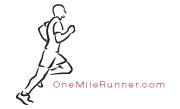
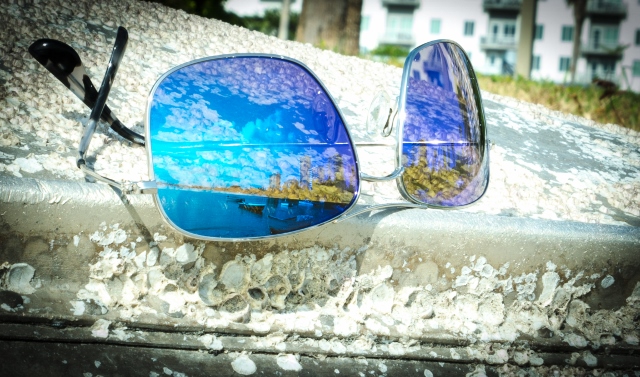

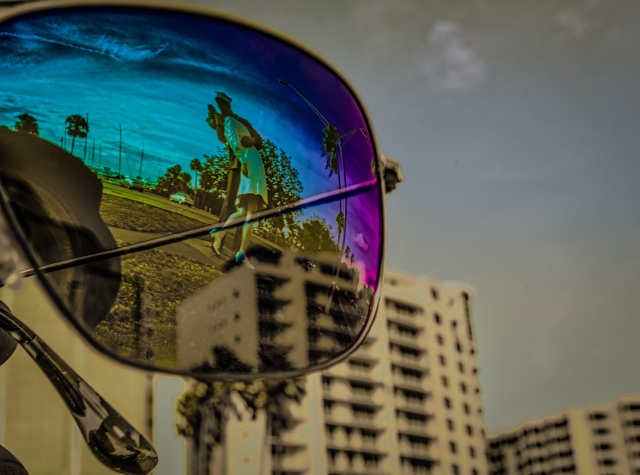
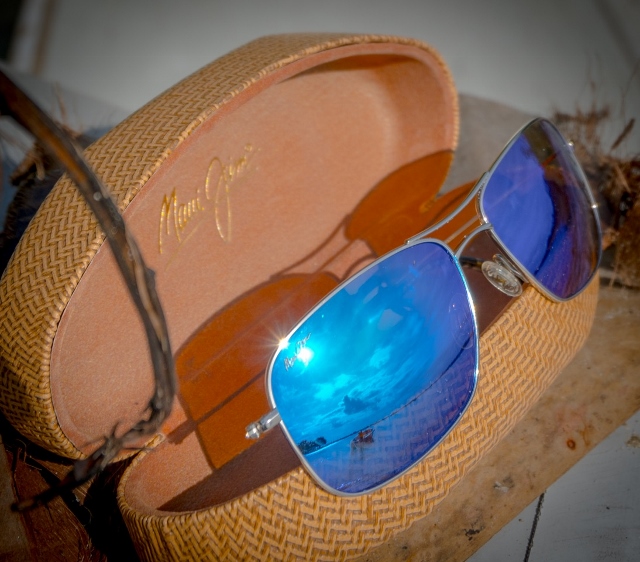
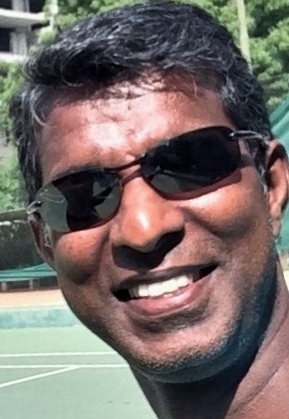
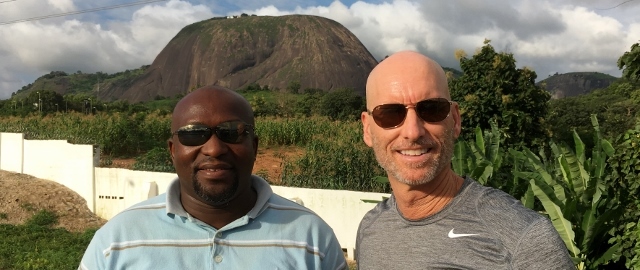

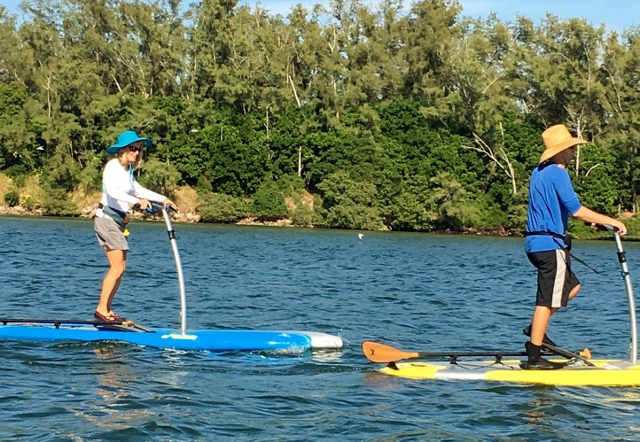
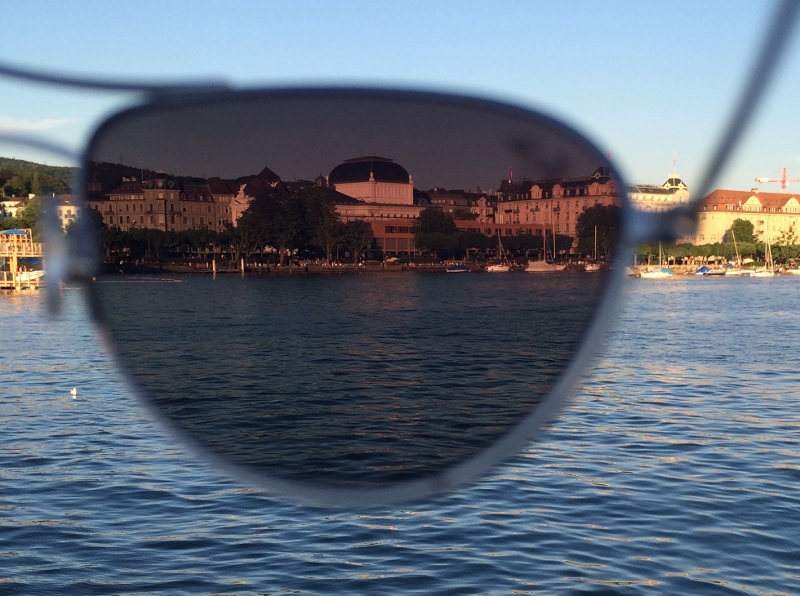
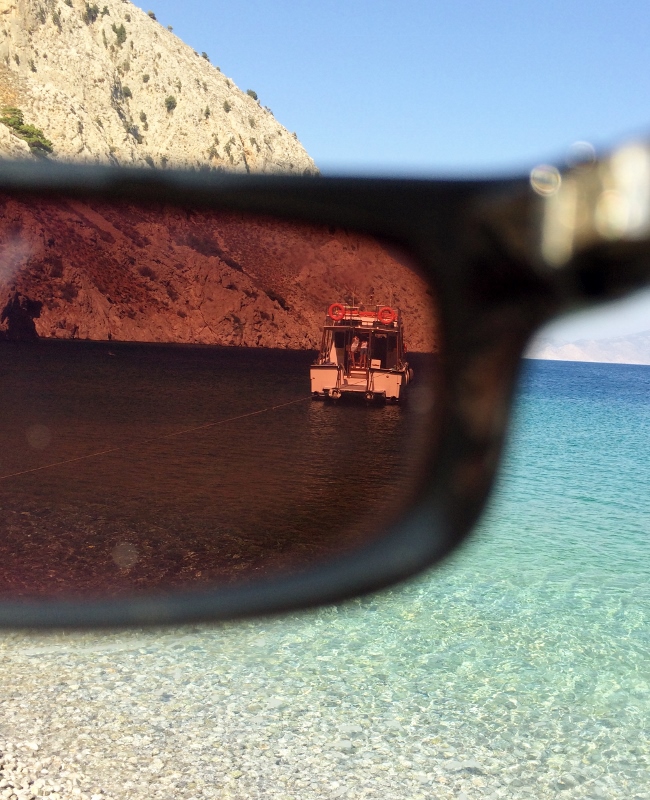
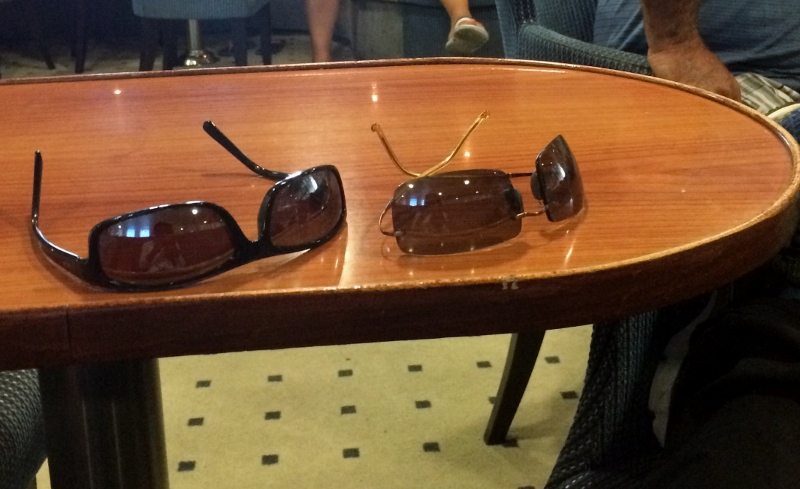
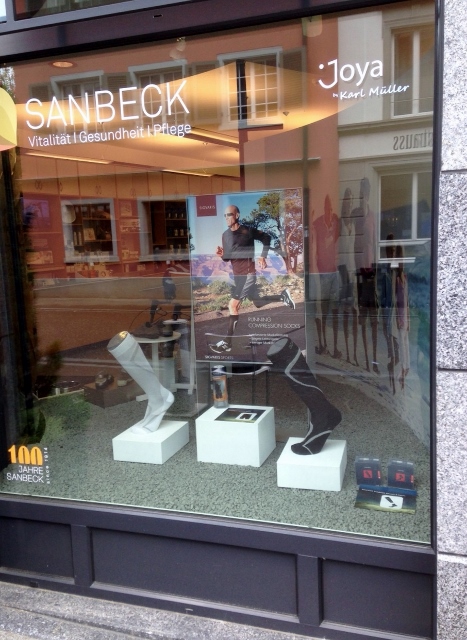
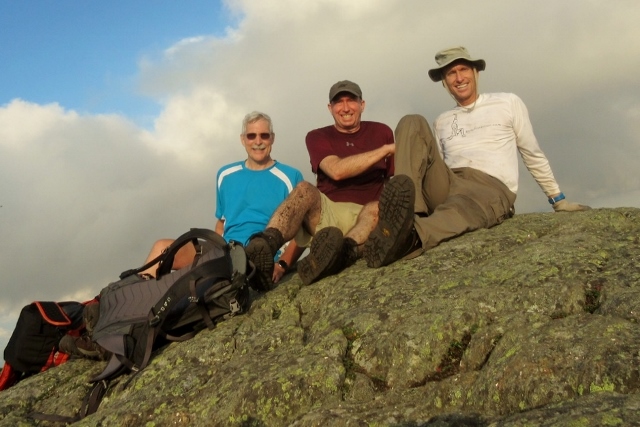
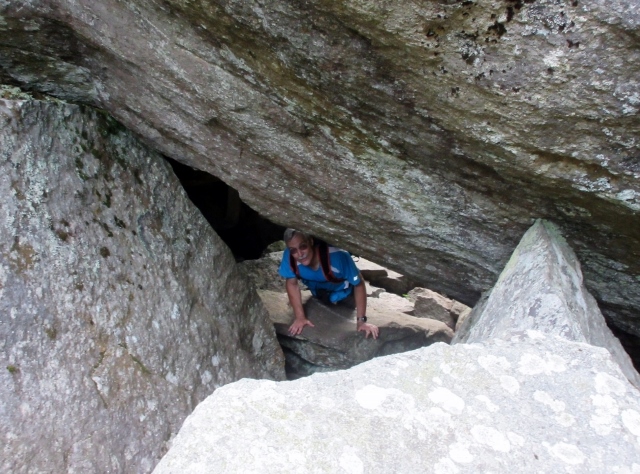
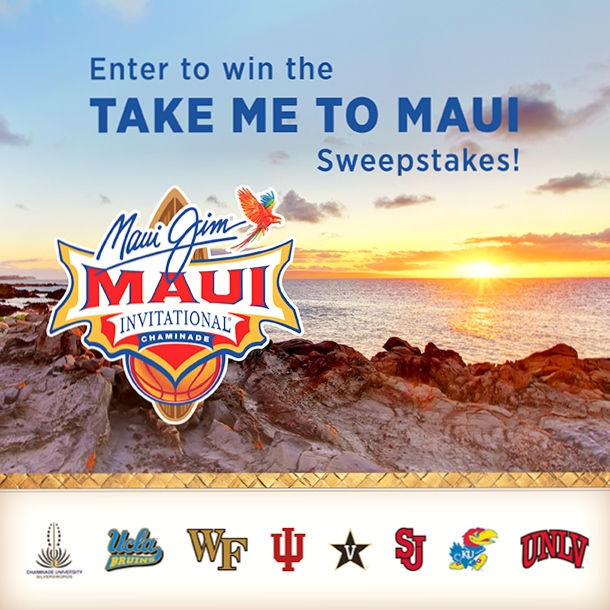
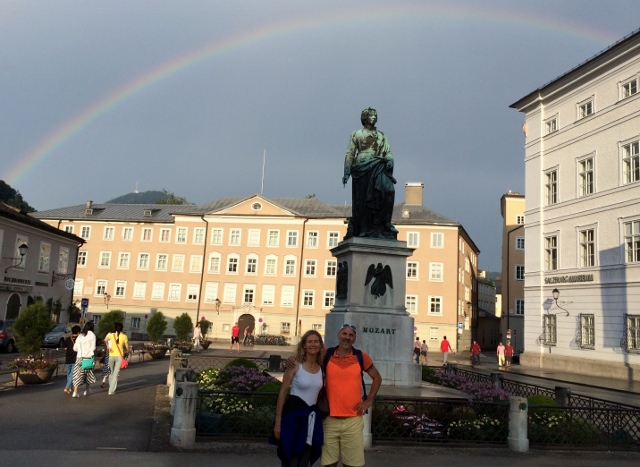
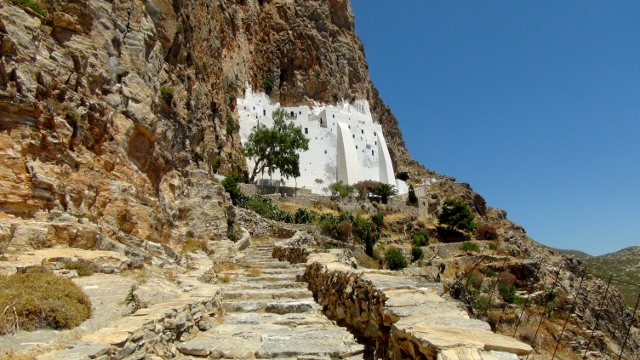
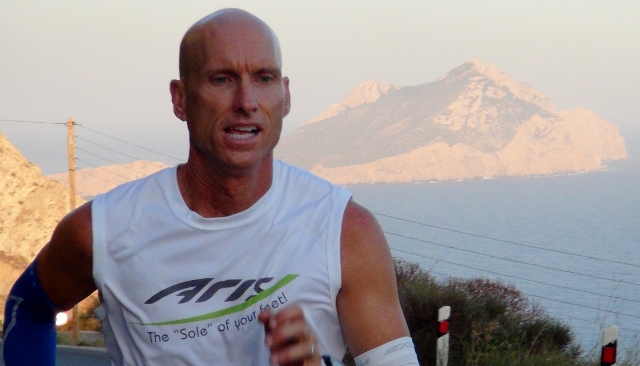
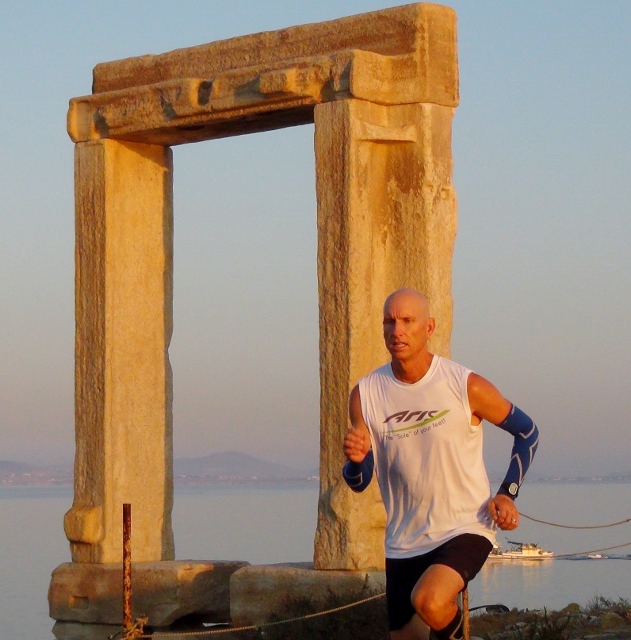
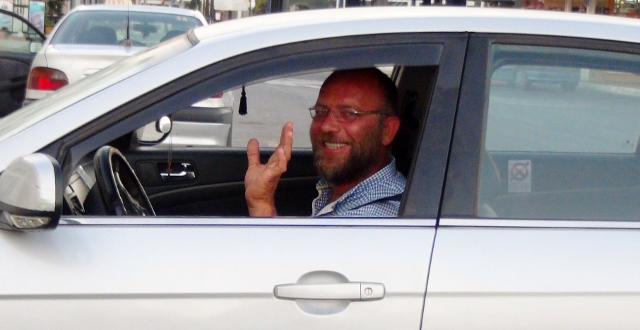

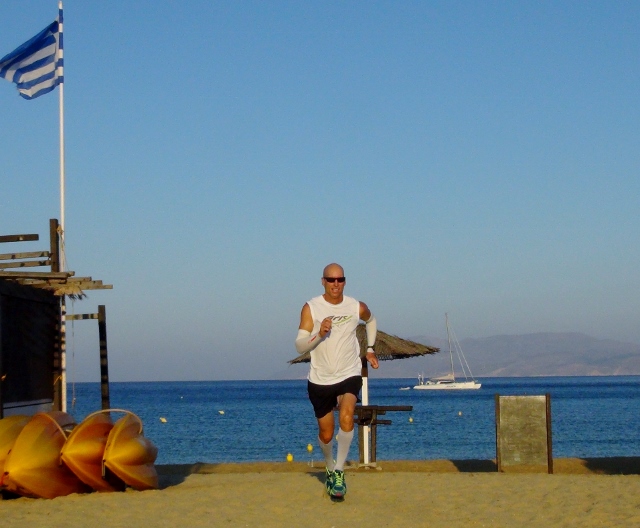
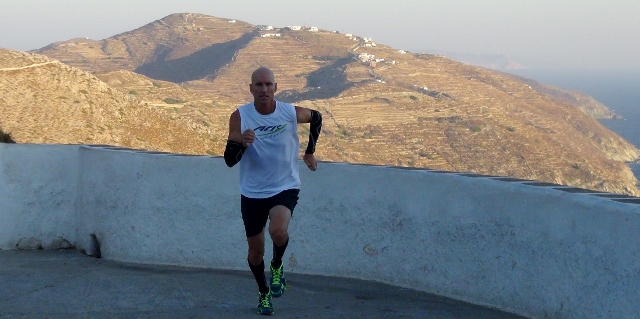
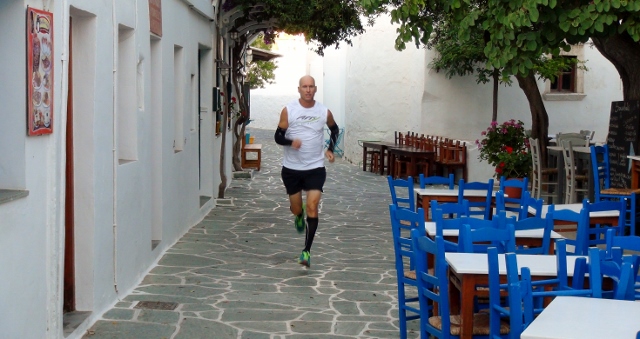


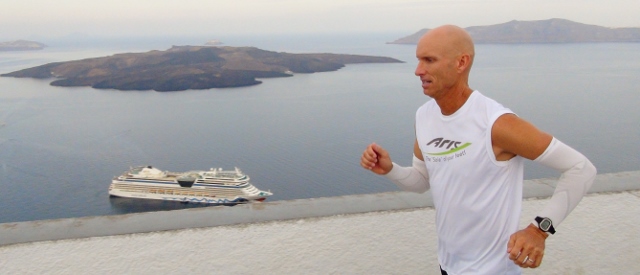
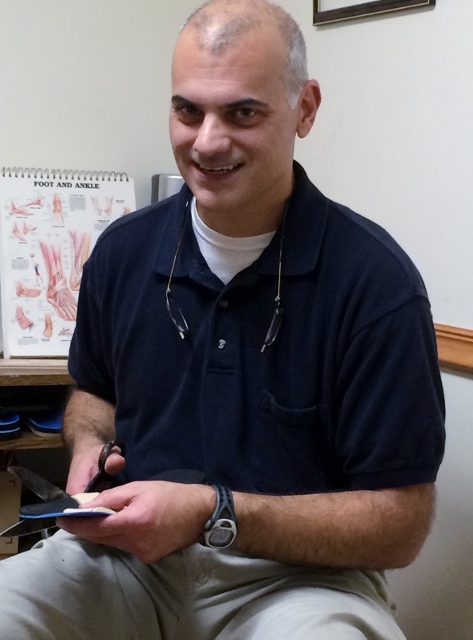

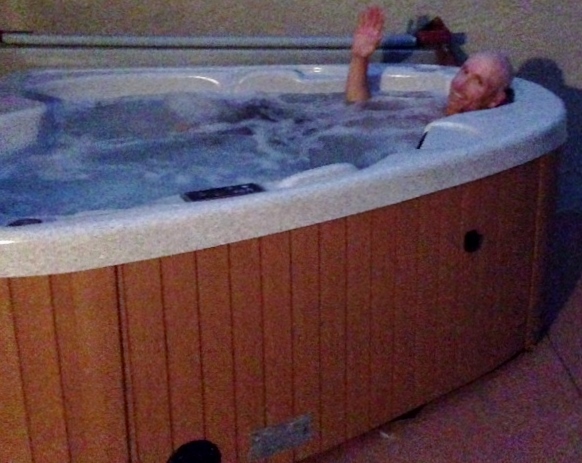
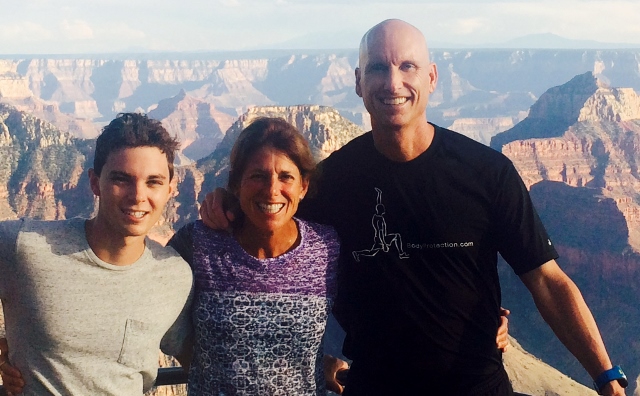
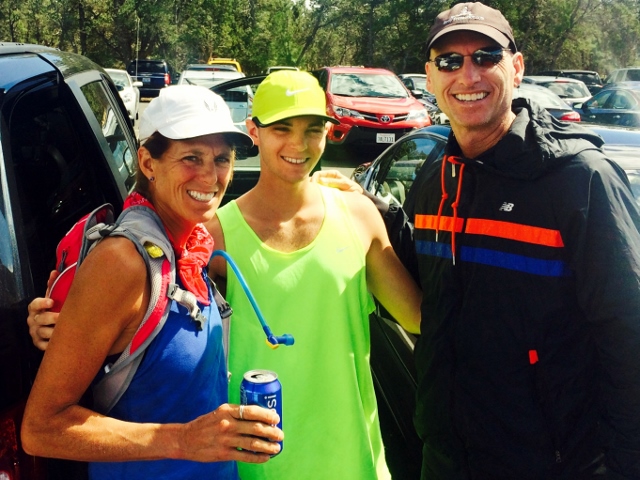
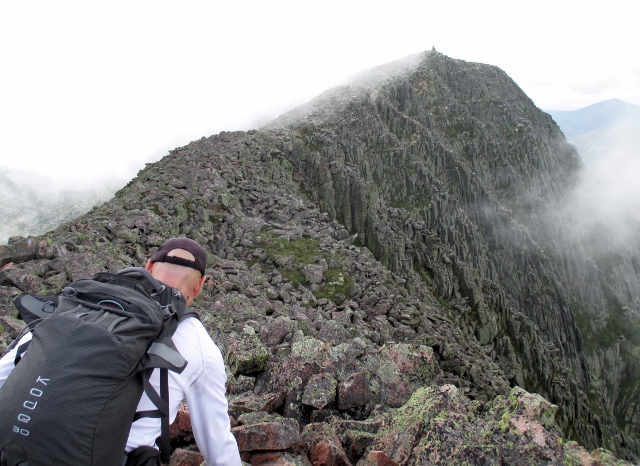
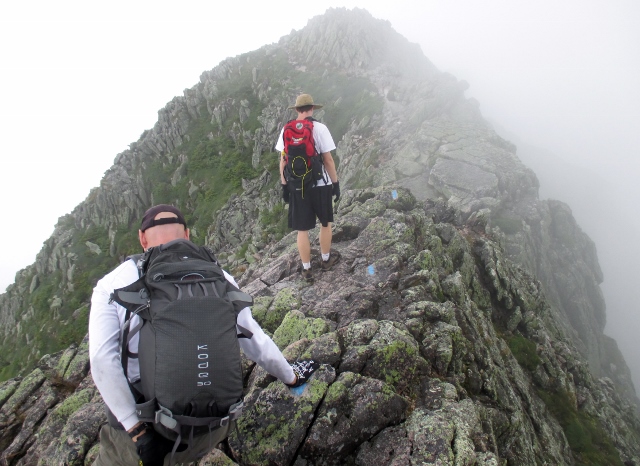
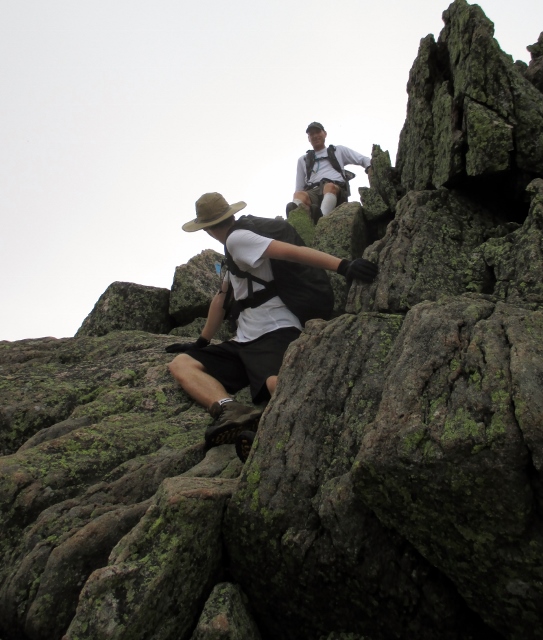


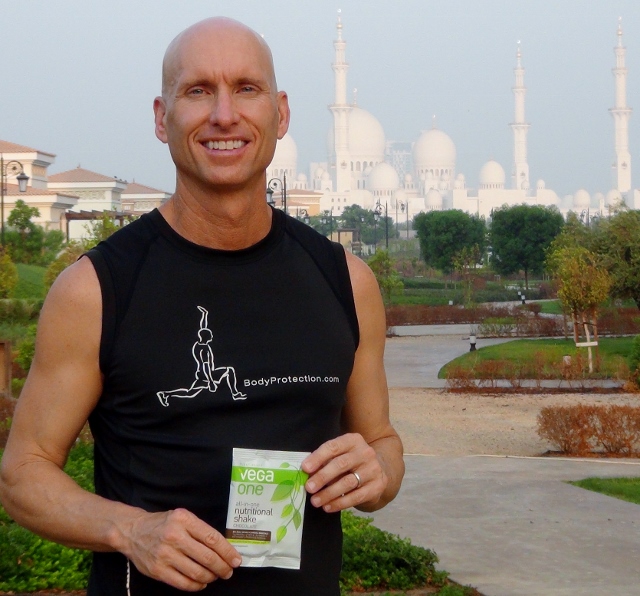
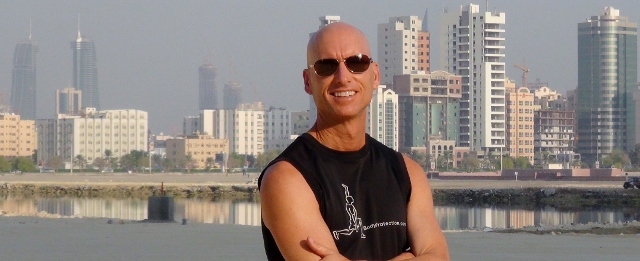
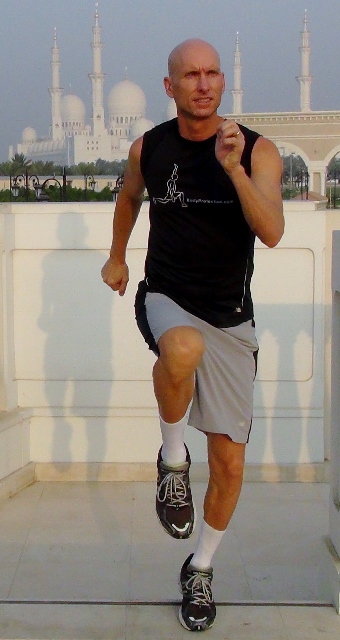
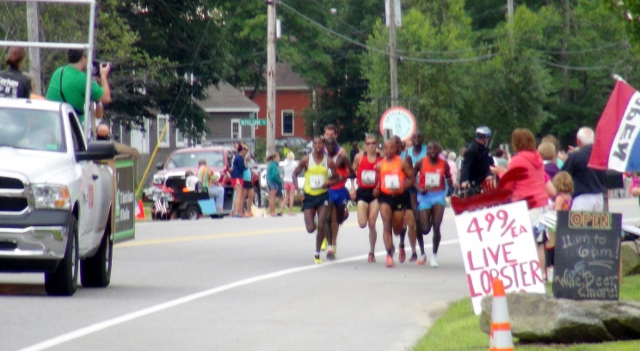

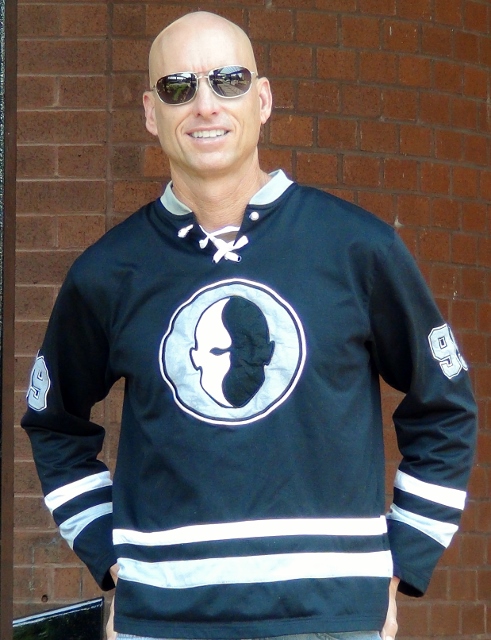
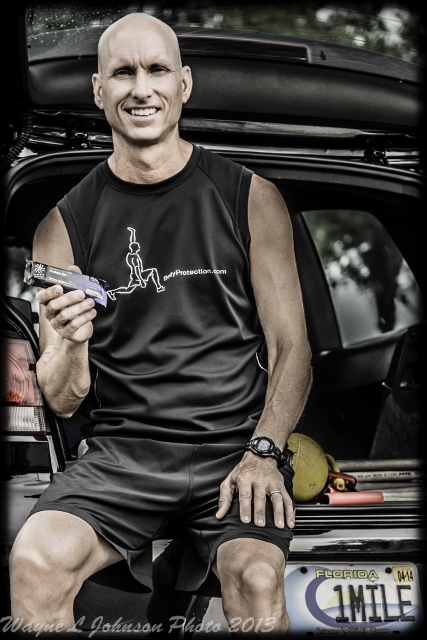
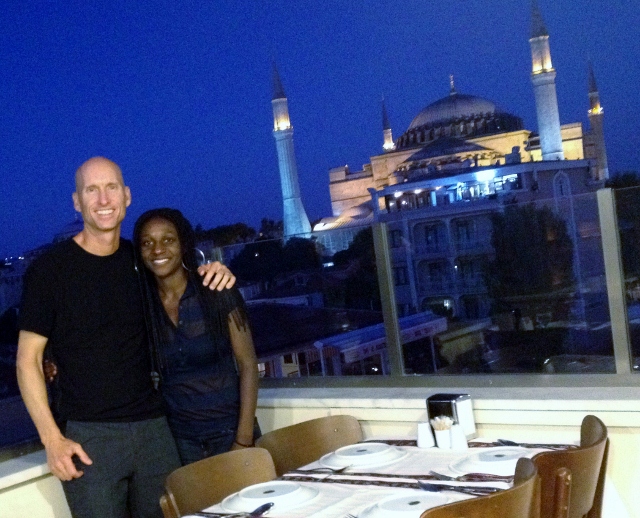
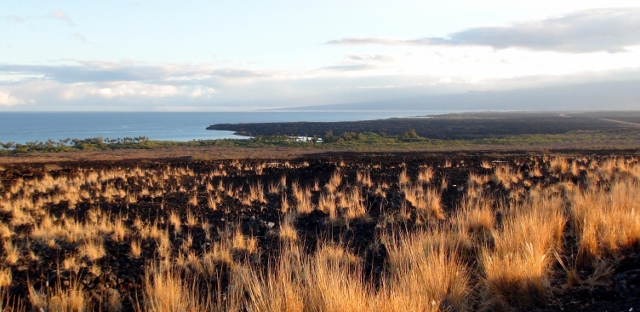

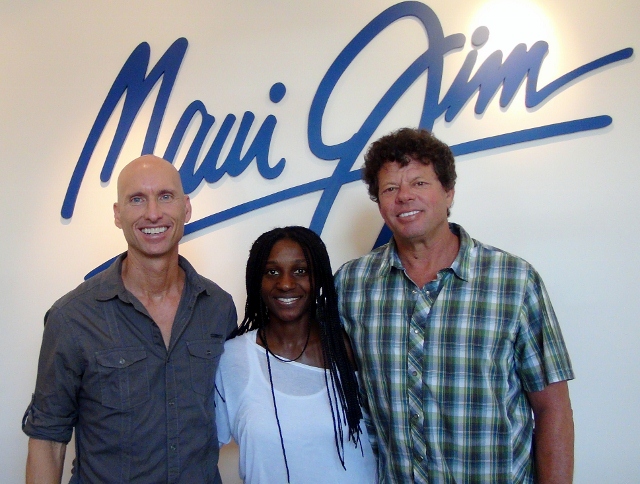



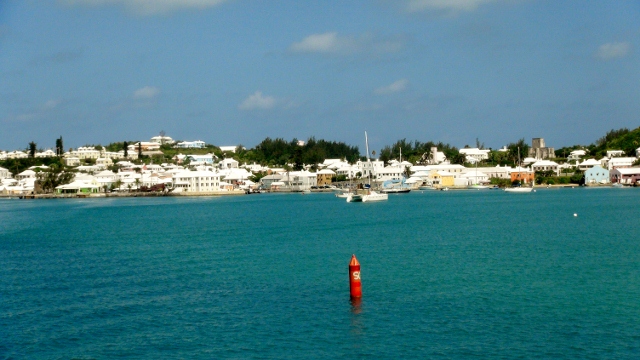
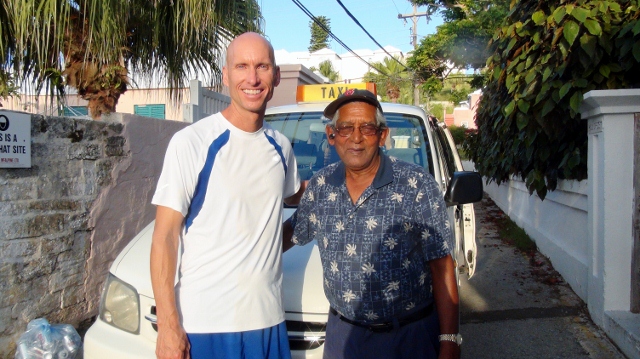
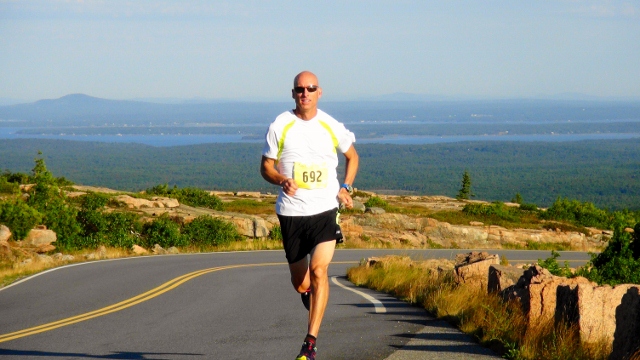

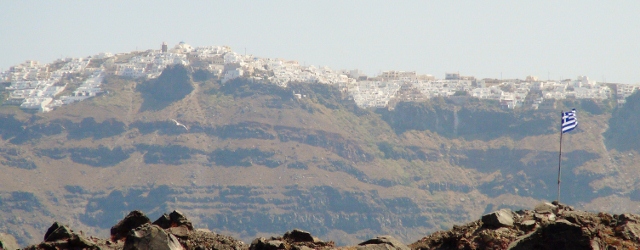
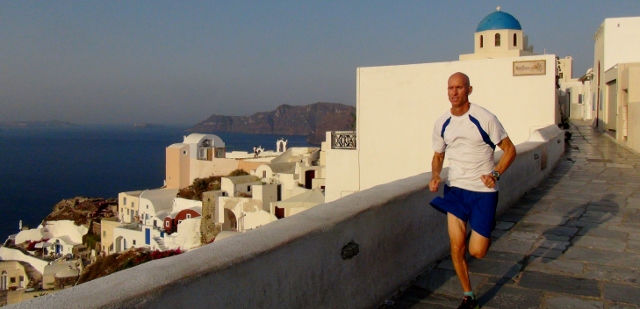
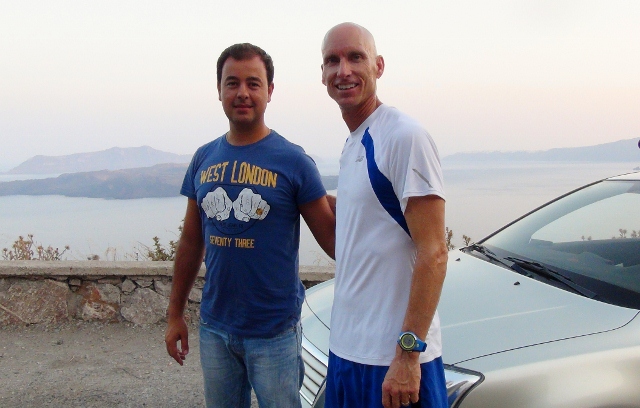

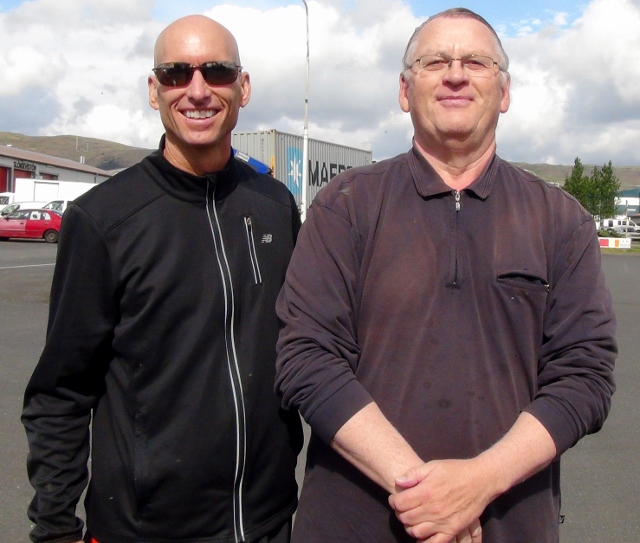
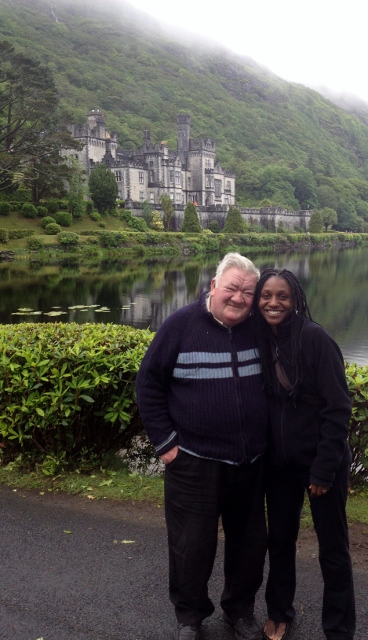
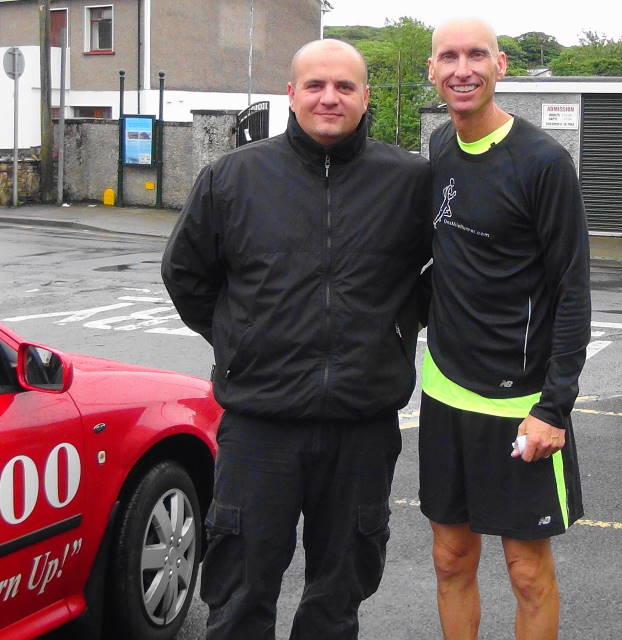
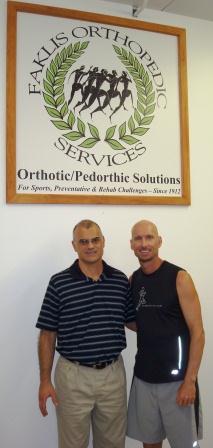

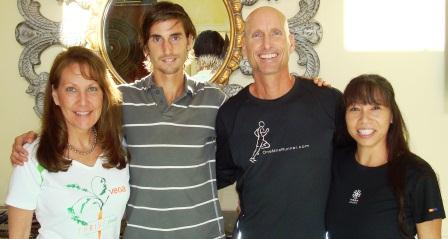

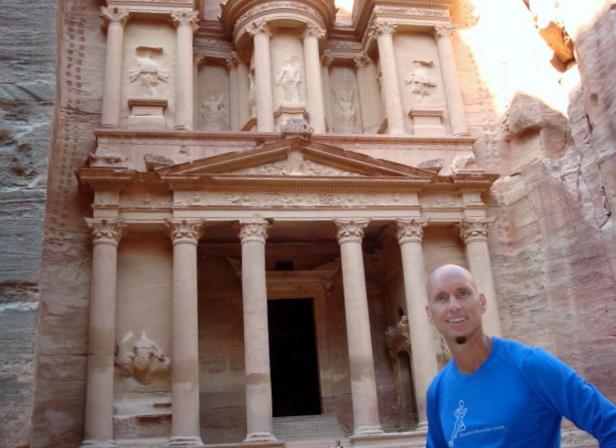
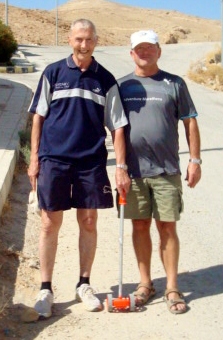
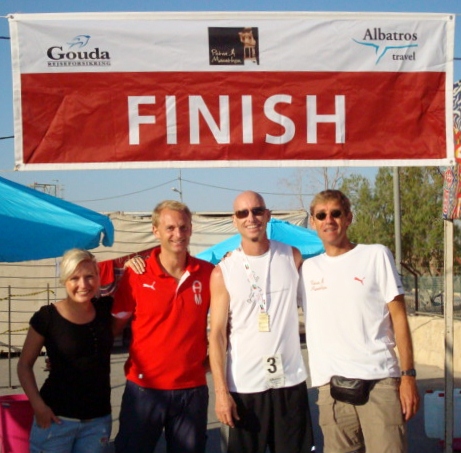
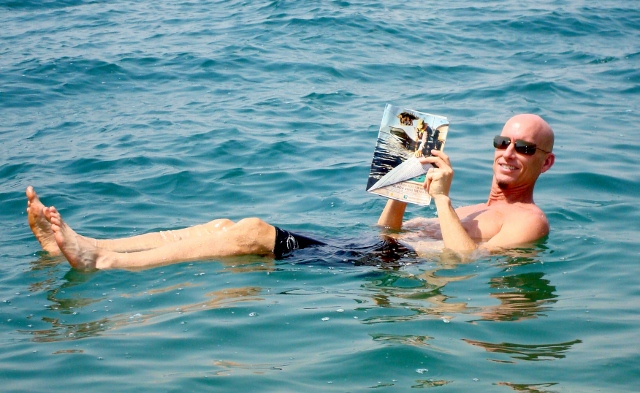


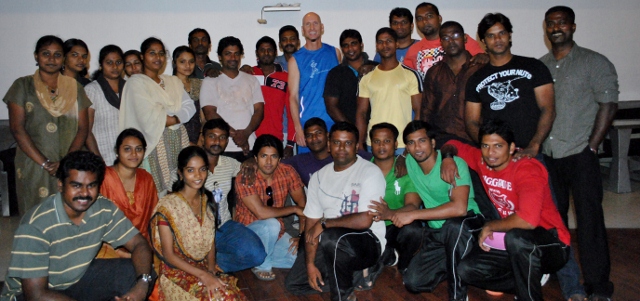
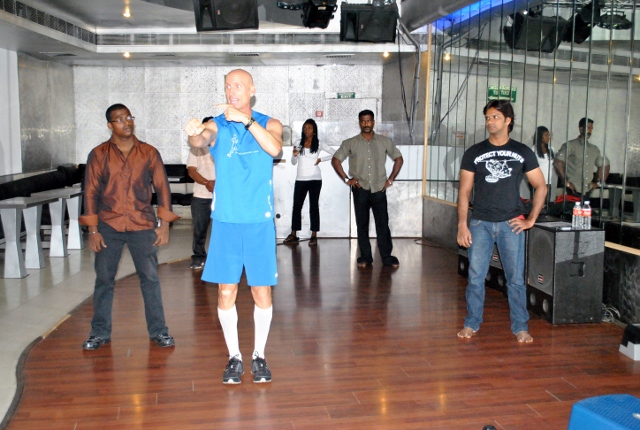
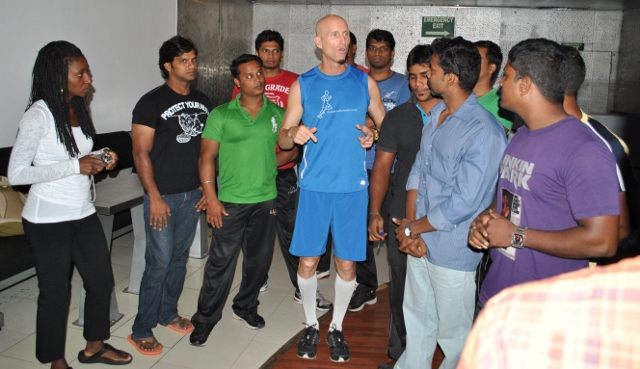
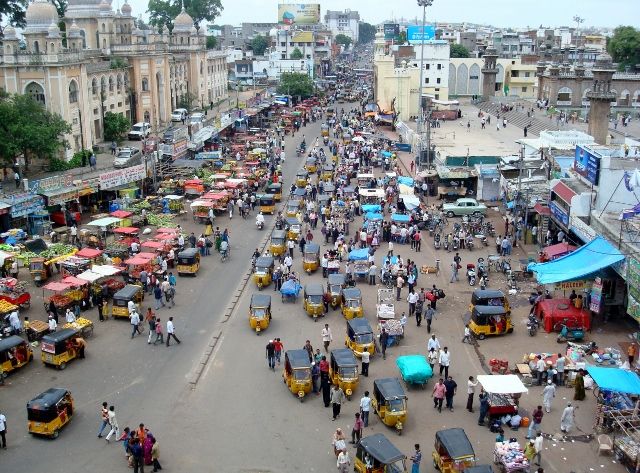
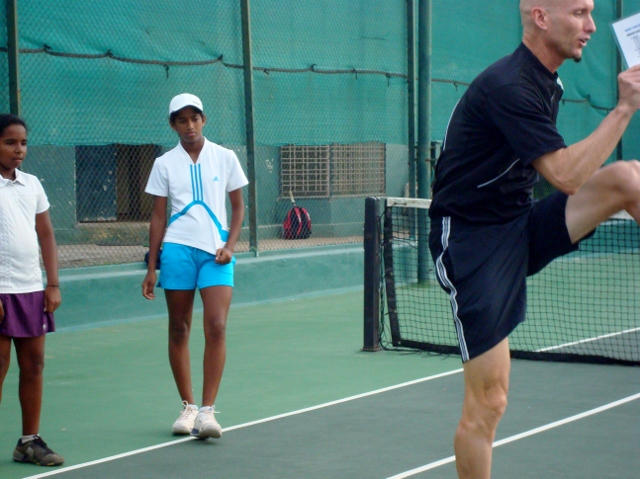
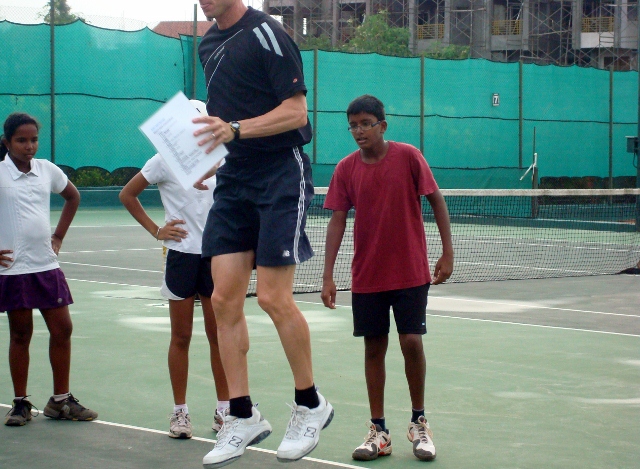
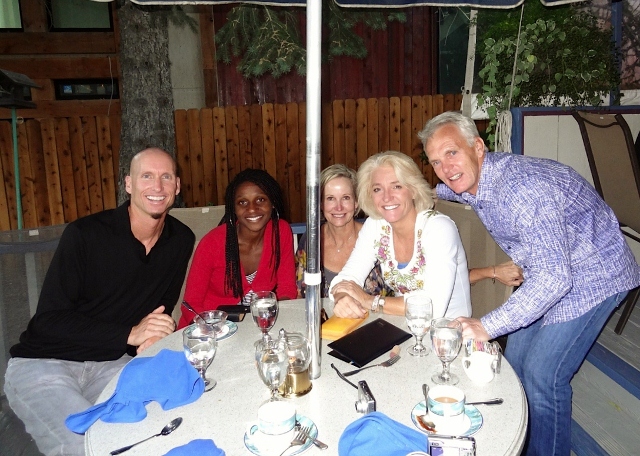
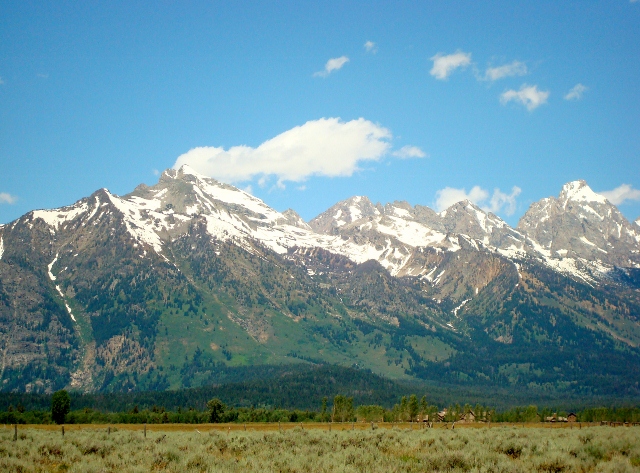
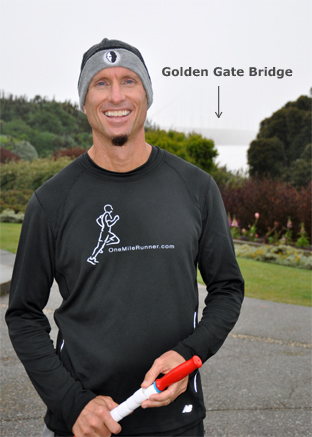
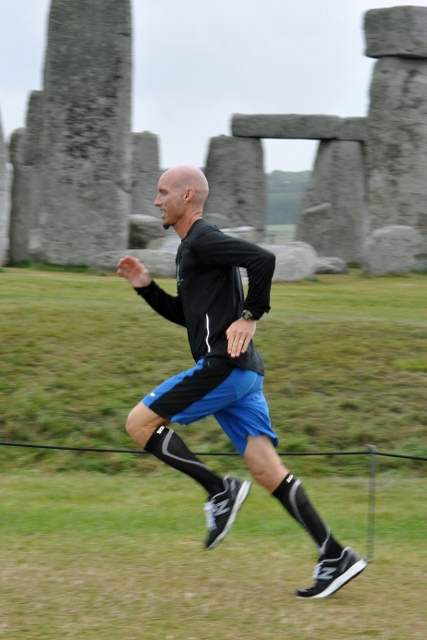
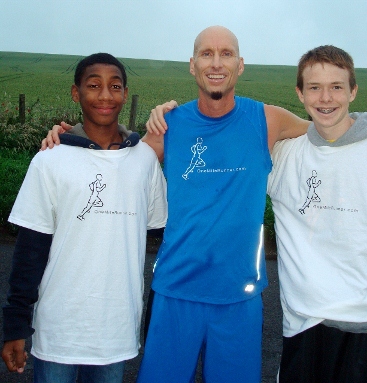

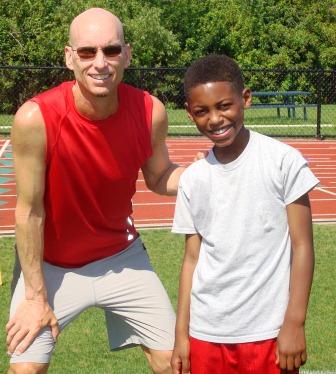


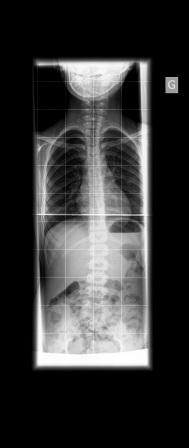
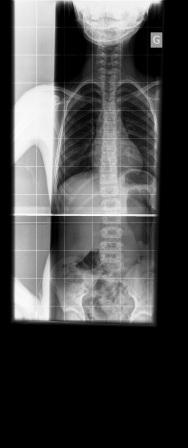

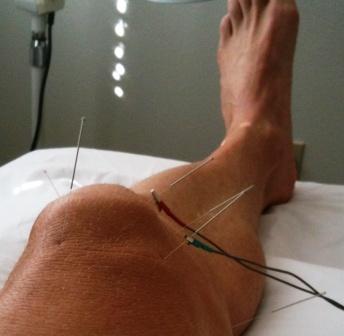

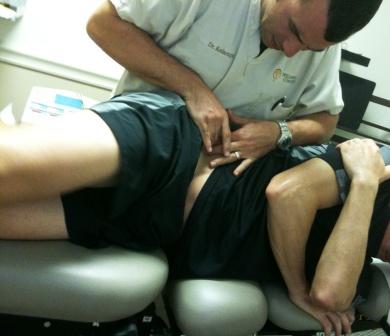
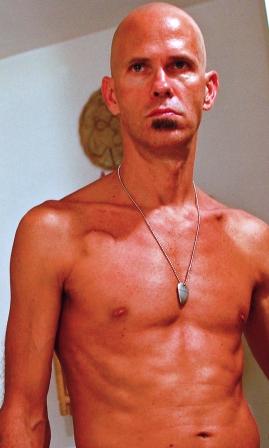

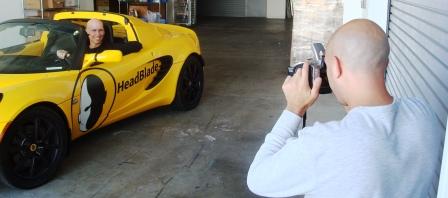
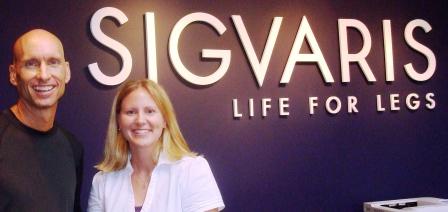


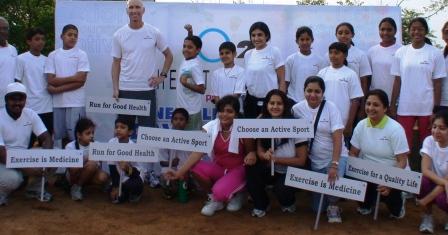
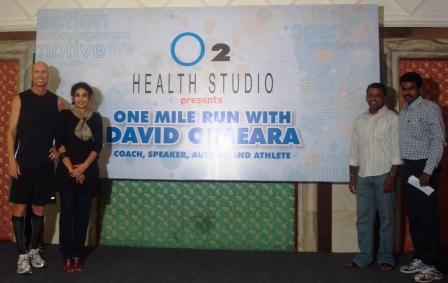
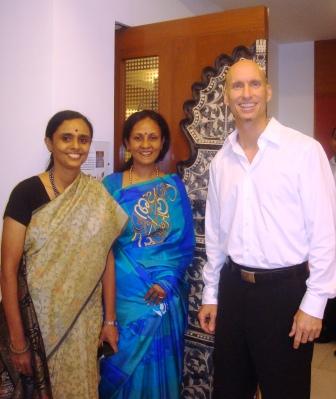
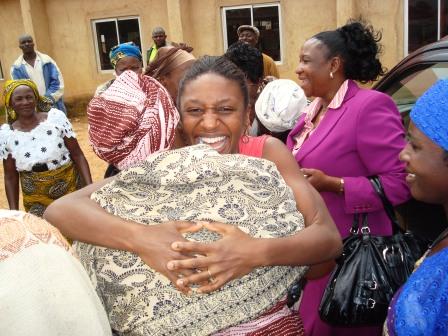
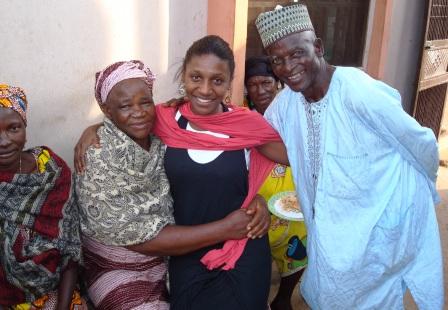
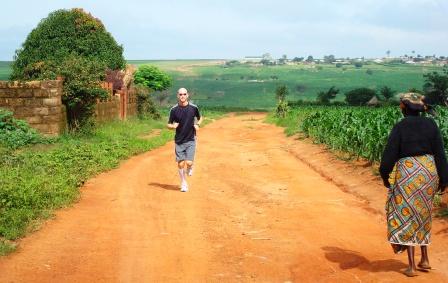
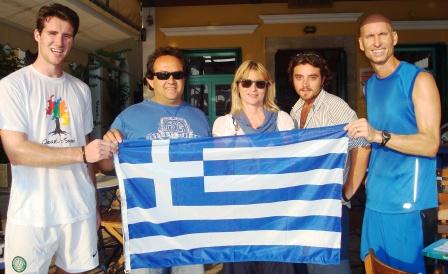

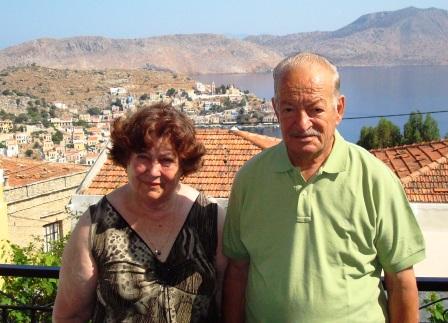
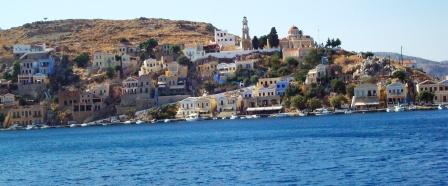




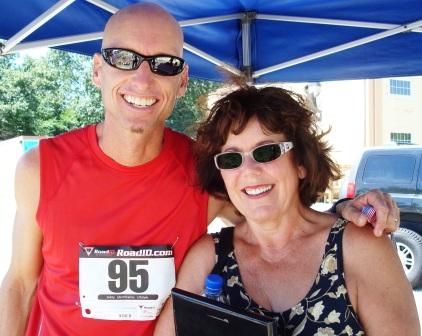
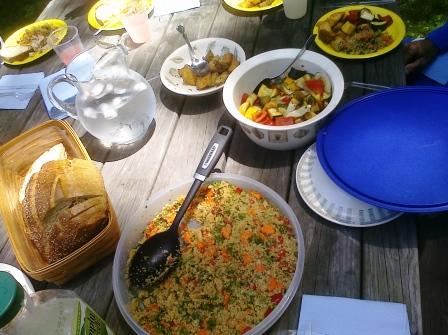
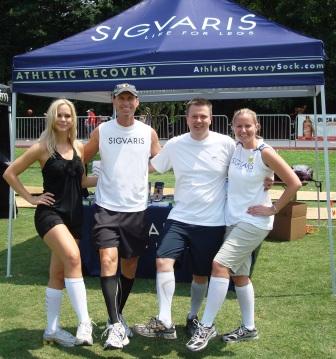



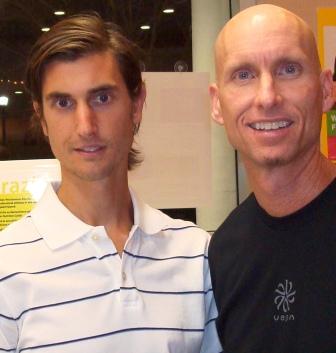

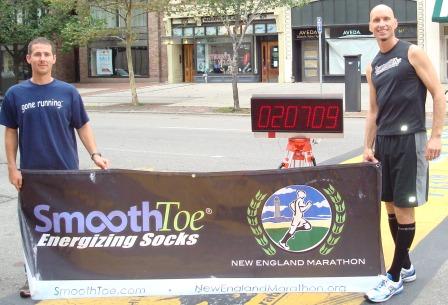
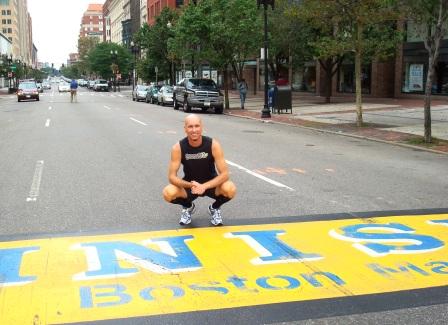

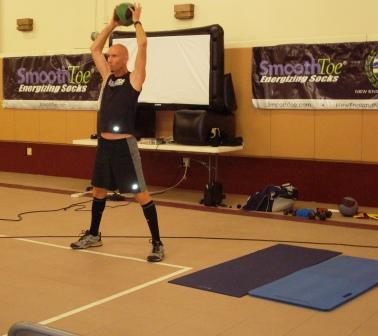


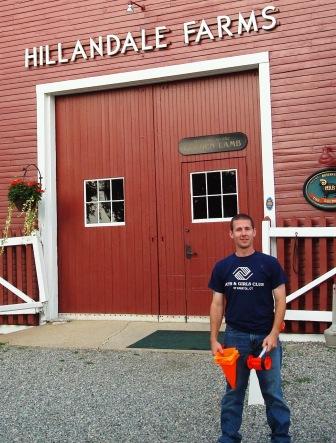







































.jpg)
.jpg)
.jpg)


.jpg)
.jpg)




.jpg)
.jpg)
.jpg)
.jpg)
.jpg)






